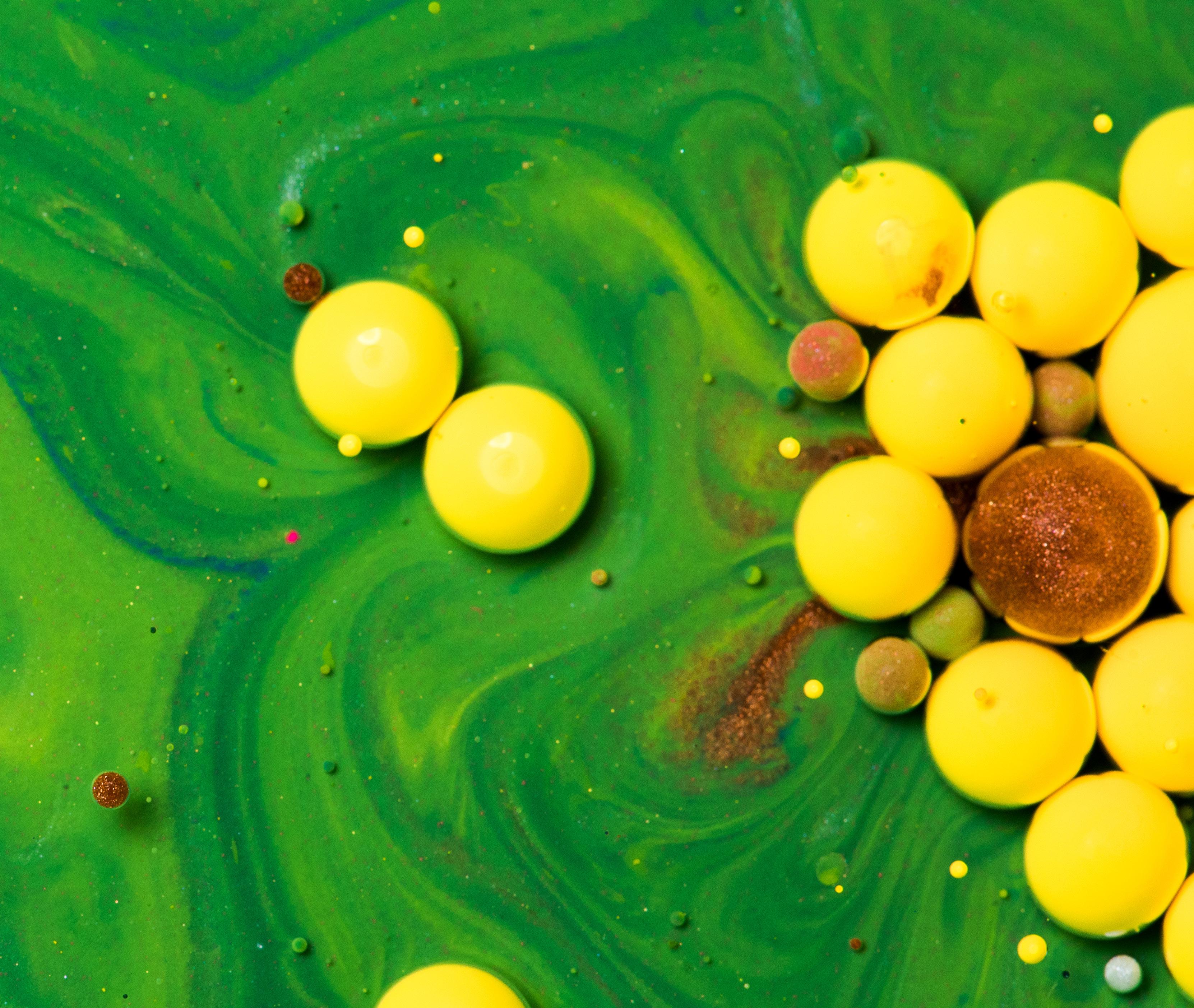
REPORT 2023
ANNUAL

Australian Research Council (ARC) Centre of Excellence for Enabling Eco-Efficient Beneficiation of Minerals acknowledges the support of the Australian Research Council and the New South Wales and South Australian Governments. We also acknowledge the inkind and financial support from all our national collaborative organisations: The University of Newcastle (administering organisation), The University of Queensland, Deakin University, The University of Melbourne, Monash University, University of South Australia, Curtin University, University of New South Wales and The University of Adelaide. We also acknowledge the support from our Industry Partners: FLSmidth, Jord International, CSIRO and Amira Global, as well as in-kind support from our international partners.
Acknowledgment of Country
The ARC Centre of Excellence for Enabling Eco-Efficient Beneficiation of Minerals acknowledges the Traditional Owners of the land where we work and live. We pay our respects to Elders past, present and emerging. We celebrate the stories, culture and traditions of Aboriginal and Torres Strait Islander Elders of all communities who also work and live on this land.
www.coeminerals.org.au
UNIVERSITY PARTNERS


INDUSTRY PARTNERS

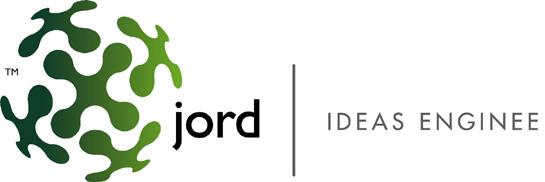

INTERNATIONAL PARTNERS
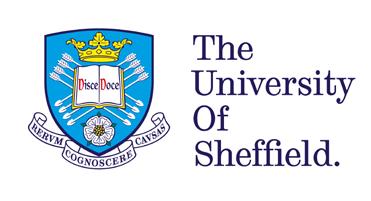

OTHER CONTRIBUTIONS TO THE CENTRE
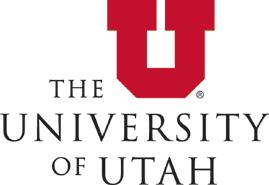
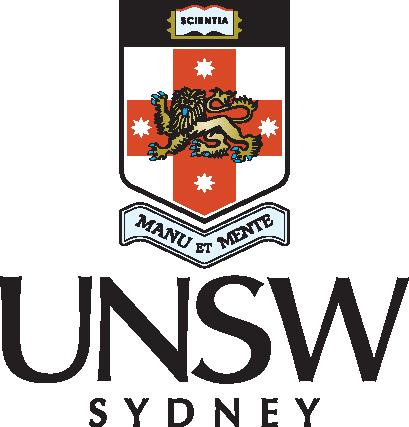
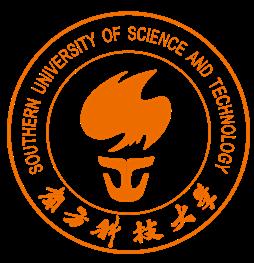







1 OUR INFLUENCE AND IMPACT 20 OUR CENTRE 4 About COEMinerals 6 Message from the Director 7 COEMinerals Governance Structure 9 Message from the Advisory Board 10 Message from the International Advisory Panel 11 Observations from the Research Programs Review Committee 12 Delivering on our Strategy 13 Snapshot updates from our University Nodes 15 Discovering the “Genetic Code” of Every Mineral 21 Bio-inspired Alternatives for Mineral Processing Examples of cross-node collaborative research with Monash 23 24 Driving Sector Transformation with Game-Changing Technology Novel technologies Improving the efficiency of downcomer technologies 27 27 32 The COEMinerals TRL Framework 33 Building a Global Reputation for Excellence Elevating Australian science, education and innovation Research collaboration with leading institutions Research engagement with Australia’s National Science Agency: CSIRO Intractable problem-solving with industry Engaging with government 37 37 39 40 41 41 1 2




2 RESEARCH PROGRAMS 44 OUR PERFORMANCE 74 Program 1 Physics of Novel System Hydrodynamics Overview Program 1: Project Summaries 45 47 Program 2 Chemistry of Novel Hydrophobic and Selective interactions Overview Program 2: Project Summaries 59 61 Program 3 New Engineered Biopolymers and Synthetic Polymers Overview Program 3: Project Summaries 65 67 Strategic Evolution to Research Themes in 2024 Research Themes and 2024 Objectives 70 71 2023 Highlights 75 Operations Overview 77 Gender Equity Diversity and Inclusion 79 Signature Lecture and Seminar Series 80 Future Leaders in Focus 81 Centre Outreach 85 Training and Mentoring Overview 87 Communications and Media 88 Publications 89 Financial Statements 92 COEMinerals 2024 Plans 93 Our Centre in Pictures Peek into some of our labs 95 97 Glossary of Terms 99 3 4
MINERALS FOR OUR FUTURE
MISSION
To develop deep scientific knowledge that enables the establishment of new, transformational technologies in minerals beneficiation, to deliver a sustainable future for Australia’s minerals industry.

VISION
To double energy and water productivity in the mining sector by 2030, maintaining the drive towards the ‘zeroemission mine’ and reduce losses of high value metals during processing by 90%.
STRATEGY
Working in partnership with the minerals industry, Mining and Equipment Technology Services (METS), the community and other stakeholders to provide advice, thought leadership, research, education, people and transformational innovations.
3



4
About COEMinerals 6 Message from the Director 7 COEMinerals Governance Structure 9 Message from the Advisory Board 10 Message from the International Advisory Panel 11 Observations from the Research Programs Review Committee 12 Delivering on our Strategy 13 Snapshot updates from our University Nodes 15
OUR CENTRE


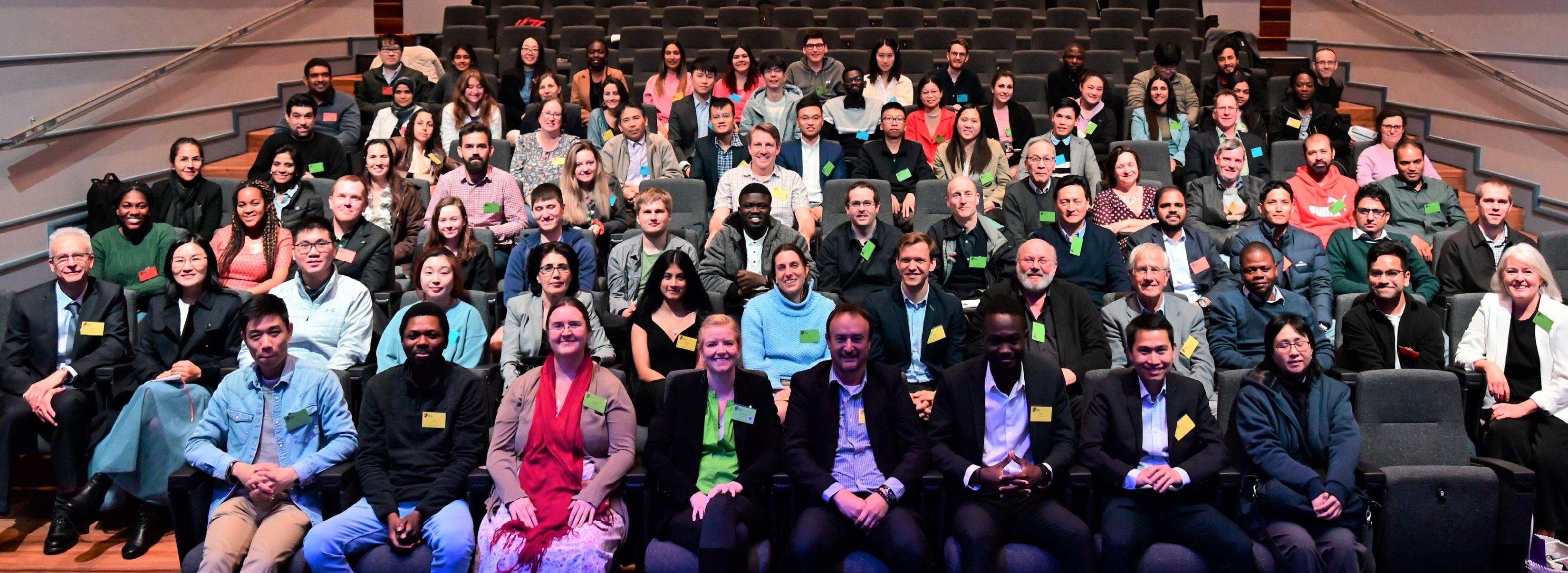

COEMinerals Members at 2023 COEMinerals Annual Conference, representing the following nodes: The University of Newcastle, The University of Queensland, Deakin University, The University of Melbourne, Monash University, University of South Australia, Curtin University, University of New South Wales and The University of Adelaide
5
ABOUT COEMINERALS
The ARC Centre of Excellence for Enabling Eco-Efficient Beneficiation of Minerals (COEMinerals) is a national research centre, funded by the Australian Government through the Australian Research Council Centres of Excellence funding scheme.
Our Nodes comprise of 9 Australian universities:
The University of Newcastle (UON) (administering organisation)
Curtin University (Curtin)
Deakin University (Deakin)
Monash University (Monash)
The University of Adelaide (UoA)
The University of Melbourne (UOM)
The University of New South Wales (UNSW)
The University of Queensland (UQ)
The University of South Australian (UniSA)
The Centre’s diverse scientific team is addressing key industry and environmental challenges associated with mineral processing. Minerals are a finite resource and many are becoming harder to recover against a backdrop of growing demand for metals to enable cleaner energy solutions as well as medical and other technologies and infrastructure.
The Centre’s science-based, innovative approaches and inventions are resulting in higher minerals (metal) recovery, reduced environmental impact, and lower energy and water consumption during mineral processing.
COEMinerals is currently addressing previously unsolved problems, including finding effective ways to recover Rare Earth Minerals (REM), which are fundamental to permanent magnets (as used in wind turbine generators and in the motors that power electric vehicles), by taking entirely new approaches that include computational chemistry, advanced synthetic approaches and biotechnology.
The Centre is helping to establish a new generation of scientists and research leaders in minerals beneficiation, equipping members to address contemporary sector challenges.
Members work closely with local and international industry, institutions and other experts to gain on-site experience, research feedback and to test, trial and commercialise new technologies and techniques with a view to advancing energy and water productivity in the mining sector; driving towards the ‘zero-emission mine’ and reducing loss of high value metals during mineral processing.
The Centre’s Thematic Objectives
Objective 1 – Early gangue (waste) rejection, achieved through technology advances in coarse particle beneficiation, to minimise energy and water consumption
Objective 2 – Fast, efficient beneficiation to minimise losses of high value metals, achieved through technology advances in fine particle beneficiation, to maximise resource recovery and product grade
Objective 3 – Real time removal of solids from tailings, and rejection of water from solids, achieved through the introduction of novel hydrophobic interactions, and technology advances in dewatering (i.e. eliminating tailings dams)


6
MESSAGE FROM THE DIRECTOR
This past year saw the Centre reach its highly anticipated ‘Mid-Term’ milestone, at least according to the calendar. The good news is the Centre still has nearly 5 more years to run, following the delayed start due to some initial distractions in the early 2020s!
In February, the Centre’s Executive convened in Melbourne for a strategic planning meeting to reflect on, analyse and reset our strategic direction. This meeting set the scene for a year of review and change, including a research program refresh, Centre governance changes and executive leadership succession.
Research approach
With sector transformation as a Centre goal, we overhauled our entire research program in 2023 to ensure we are all working towards delivery of impactful outcomes tied to cutting-edge research and continuous improvement. This change reflects a natural evolution of a highly functional Centre that has made outstanding progress, and which now has highly collaborative connections across projects, teams, and fields of research.
One of the most enjoyable tasks as Centre Director is visiting our Nodes and seeing the wonderful and inspiring work of PhDs (Doctor of Philosophy), Early Career Researchers (ECR), Mid Career Researchers (MCR), Associate Investigators (AI) and Chief Investigators (CI) and gaining their input on the next steps. This feedback has helped inform our future path and the consolidation of projects into 2024. Although our Centre commenced with a series of significant technology advances, I have been especially interested to see the so-called
‘green shoots’ emerging from several groups, and the results of cross-nodal collaborations, including those beyond the formal projects. It became clear that while the Centre commenced with three research programs, aligned with the type of science assessed against relevance to Thematic Objectives, this framework was no longer the best way forward. As a result, the new research projects are aligned directly with three themes, resulting in vertical integration of the science. This means, for example, that new advances with peptides and Reversible Addition-Fragmentation Chain Transfer (RAFT) polymers could be applied to novel reagent delivery systems, which in turn could be applied to novel hydrodynamic separators, all within a given research program. The second phase of the Centre will feature 40 projects across three programs, down from the original 51. You can read more on page 70.
Board evolution
Over the Centre’s duration, we have enjoyed the support of some truly remarkable individuals, who have dedicated some of their valuable time as members of our Centre Advisory Board and International Advisory Panel. The two Boards have provided high-level independent advice guiding us to this point, but we saw a strong convergence between the functionalities of both, and it became increasingly obvious that we would benefit by aligning behind a singular Advisory Board. As a result, the International Advisory Panel formally disbanded in June; some members elected to retire, and others made themselves available for consideration when the new Advisory Board is formed. I especially thank our Chair, Professor Cyril O’Connor from the University of Cape Town, and Dr Barun Gorain, Chief Executive Officer (CEO) of ORE2METAL, Canada.


I also want to thank Denise Goldsworthy, Chancellor Edith Cowan University, and Andrew Hutchinson from the Critical Minerals Facilitation Office for their stellar contributions to the Advisory Board.
Leadership succession planning
I also wish to thank Professor Bill Skinner who has chosen to stand down as our Deputy Director, having several new commitments. Bill remains a Chief Investigator and Program Leader and continues to support the Centre as an ongoing member of the Executive Team. As a smooth transition of Centre leadership, I am delighted to report two members of our executive group are moving into new leadership roles as Co-Deputy Directors: Professor George Franks (UOM) and Professor Chun-Xia Zhao (UoA).
Culture building
In July our research community converged on Newcastle for our second in-person COEMinerals conference. Among the many highlights was a joint keynote presentation from Professor Chun-Xia Zhao and Dr Daniel Yang on their stratospheric advances in applying peptides to minerals and metals; this will be game changing! Please read their feature story presented on page 21. Another highlight was the basket-weaving session led by representatives from ‘Speaking in Colour’, who connected our team to rich Aboriginal culture and learning in a handson workshop. It also helped any tightly wound scientists unwind.
7


Impact as our focus
I am really excited by the possibilities for transformational change to the global industry and beyond, especially through our world leading capability in applying peptides and RAFT polymers to critical and strategic minerals. Our mineral resource separation technologies are also moving along the Technology Readiness Level (TRL) number line, with several undergoing multi-million-dollar full-scale trials, while others are now delivering industry impact to facilitate decarbonisation in ironmaking.
International research excellence is increasingly concerned with societal impact and science as an agent for change, which goes well beyond traditional measures of academic impact. It is also reshaping the mining sector. We continue to address and adapt our work to ensure we are meeting contemporary challenges and that our members are future-work ready whether their career path takes them into academic or industry roles.
Looking to 2024
In terms of addressing and mitigating challenges, we certainly felt the frustration of long lag-times between paper submissions and publishing in 2023. We continue to put effort into attracting diverse PhDs, although it is a very difficult environment given the high and increasing cost of living and low unemployment rate and given there are higher-paying options available. The competitive environment for talent in our dynamic sector has also seen ECRs moving into industry. Overall, we are optimistic about welcoming new members in 2024 in line with our cohort and strategic planning.
I am very proud of our team and our work, and I am sure you will enjoy our latest edition of the COEMinerals Annual Report.
Laureate Professor Kevin Galvin Centre Director
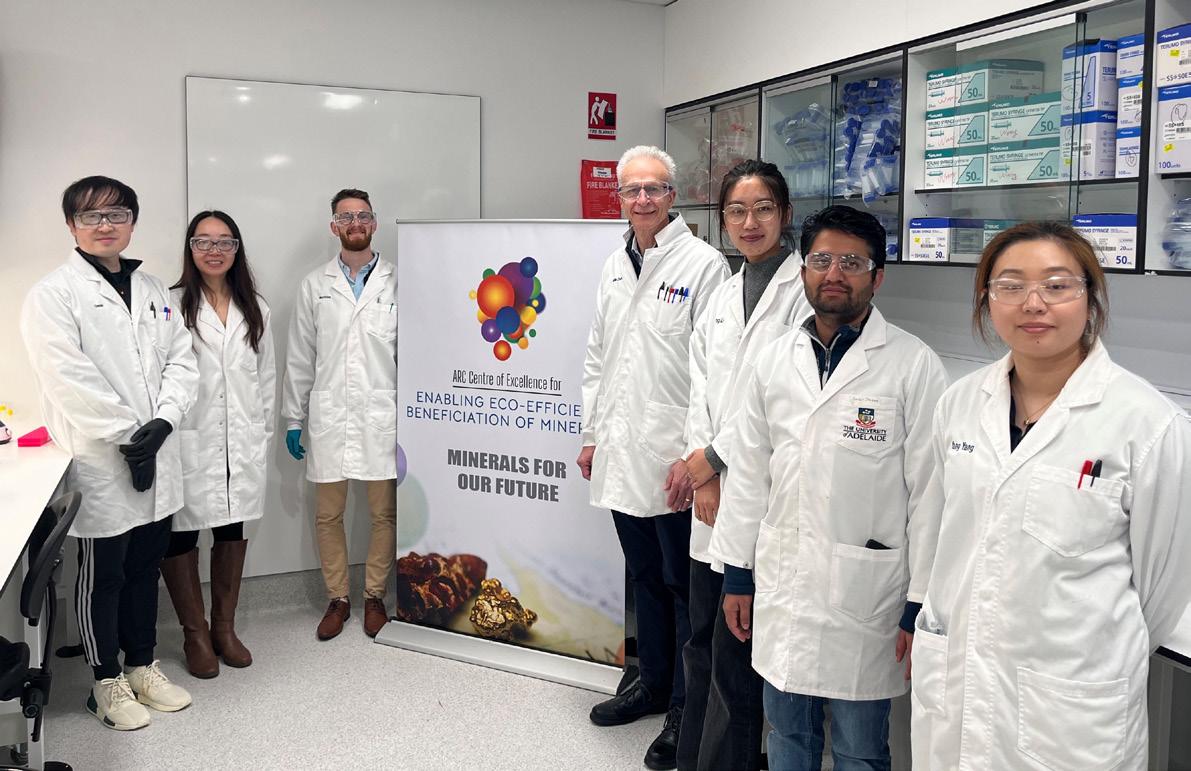
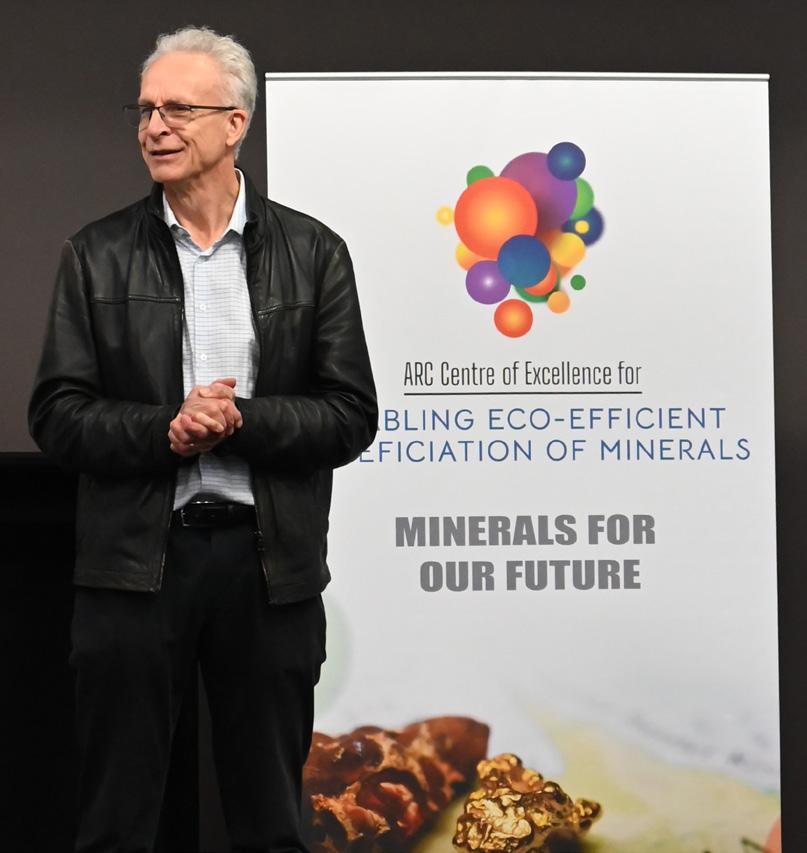


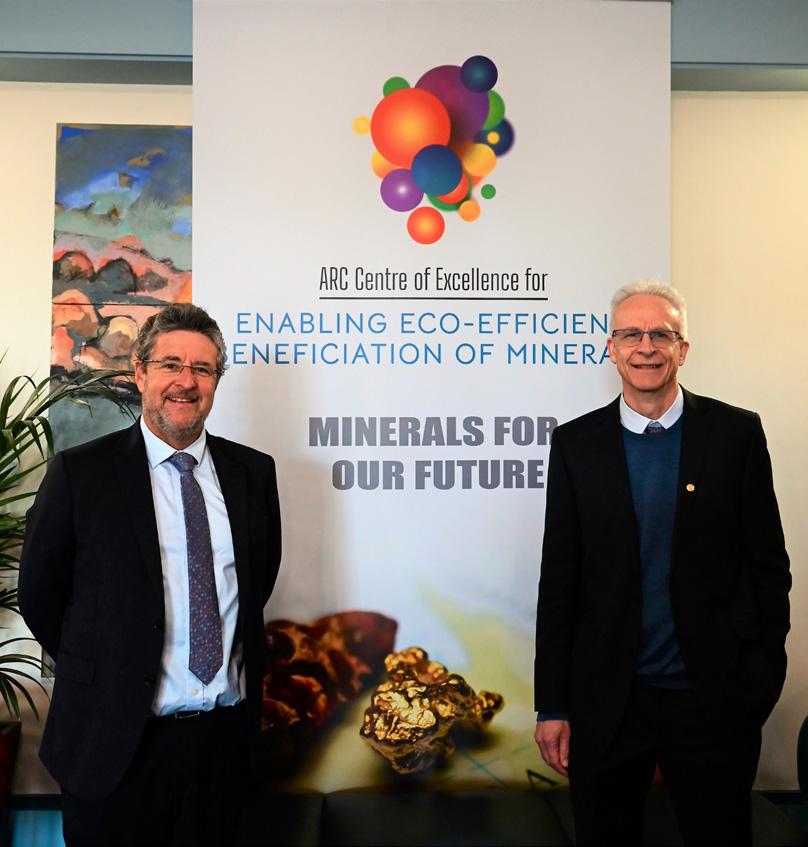
ARC’s Executive Director, Engineering, Information and Computing Sciences, Prof Steven Weller and Centre Director L/Prof Kevin Galvin at the International Flotation Symposium
8
L/Prof Kevin Gavin visiting UoA Node
COEMinerals Governance Structure
Centre Chief Operations Officer

Research Program Review Committee
Executive Committee
Director
Deputy Director
Centre Chief Operations Officer
Node Leaders
Research Program Committee
Program 1
Training and Mentoring Committee
Program 2
Program 3
Stakeholder Committee
Australian Universities
International Organisations Industry Partners
CSIRO
Communications and Media Officer
Executive Committee Members
L/Prof Kevin Galvin
Annemarie Fawkner
Prof San H. Thang
Prof Chun-Xia Zhao
Prof Bill Skinner
A/Prof Elham Doroodchi
Prof George Franks
A/Prof Liza Forbes
Prof David Beattie
Dr Ellen Moon
Dr Susana Brito e Abreu
Chief Investigators
Associate Investigators
International Researchers
Early & Mid Career Researchers
PhDs
Future Leaders Committee
Technical Staff
Professional Staff
Gender Equity
Diversity and Inclusion Committee
Prof Chris Aldrich
A/Prof Seher Ata
Dr Eirini Goudeli
Dr Chris Ritchie
Kim Stockham
International Advisory Panel Director Advisory Board
9
MESSAGE FROM THE ADVISORY BOARD
The COEMinerals Advisory Board provides advice and feedback on the Centre’s Strategic Plan, governance, performance against KPIs and high level advice.
Message from the Chair
It is fair to say that 2023 was the first year since the Centre commenced that we had an essentially uninterrupted opportunity to pursue research and build international links. Dare I say, it was a normal year!
There is no doubt that momentum is now well established and the outcomes from the activities of the Centre are beginning to build strongly and gain real traction.
The demand for all types of minerals and especially rare earths and precious metals will continue to grow significantly in the years to come. Without much-improved pathways to extract and purify these materials, the ambitious agendas for our energy transition will not be met. The focus of this Centre on eco-efficient processing is absolutely spot on.
The challenge for the Centre is to consolidate its progress and now take full advantage of the post pandemic world to grow its outcomes and begin to deliver the technology and innovation improvements we are going to need in the decades
I am confident the world-leading team we have assembled the Centre can be successful in this challenge.
Professor Simon Biggs
COEMinerals Advisory Board Chair
Vice Chancellor and President, James Cook University, Australia
Additional Advisory Board Members
Professor Richard A. Williams, Vice Chancellor, Heriot-Watt University
Ms Denise Goldsworth AO, Chancellor, Edith Cowan University
Mr Andrew Hutchinson, General Manager, Critical Minerals Facilitation Office with the Australian Government Department of Industry, Science, Energy and Resources
Professor Jacques Eksteen, Research Director of the Future Battery Industries CRC (FBICRC)


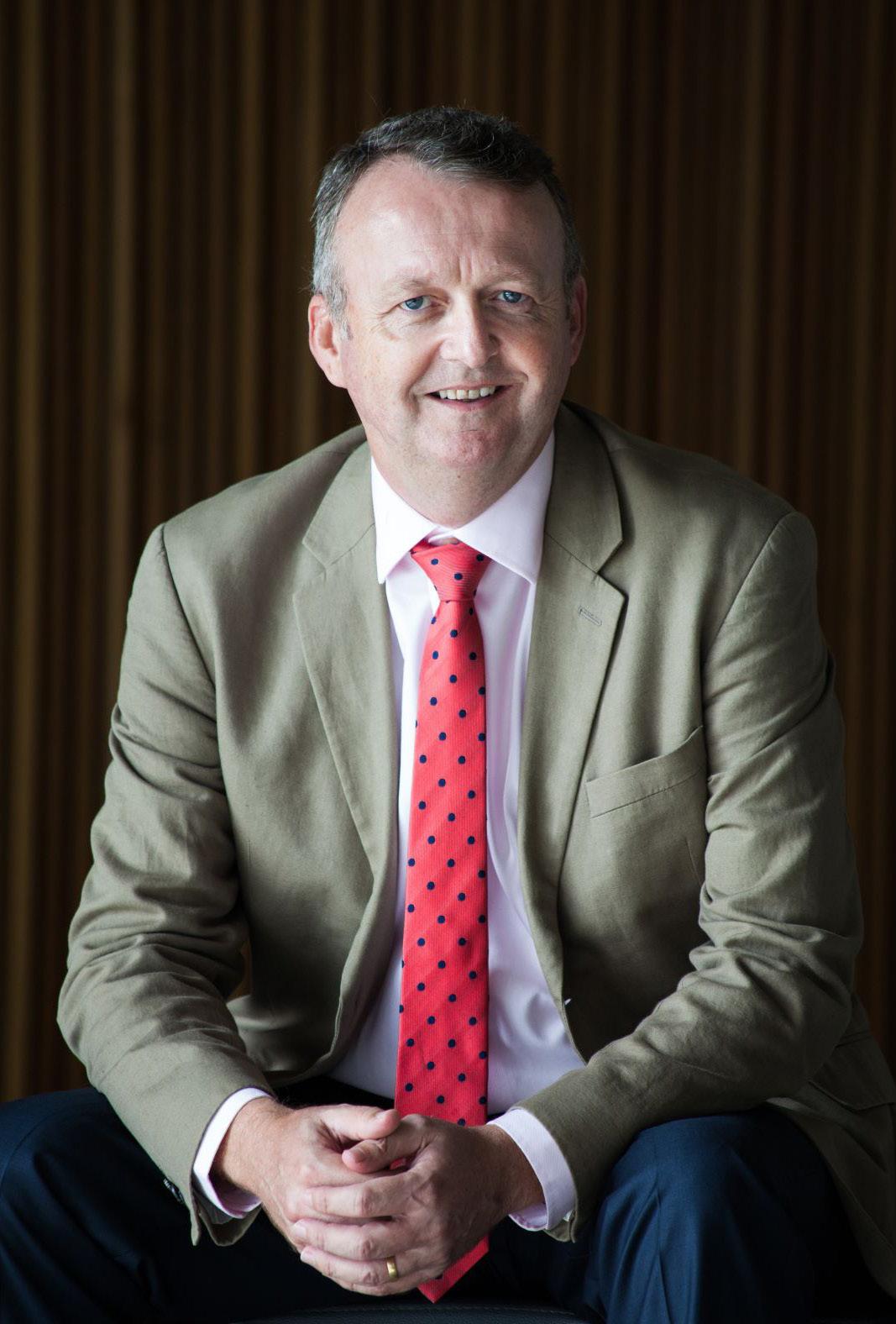














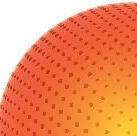

















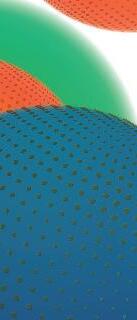





















10
MESSAGE FROM THE INTERNATIONAL ADVISORY PANEL
The Centre’s International Advisory Panel (IAP) provides strategic advice to the Centre Executive with a view to assisting in the achievement of the Centre’s goals.
Panel Chair Professor Cyril O’Connor and Panel Member Dr Martin Rudolph attended our 2023 Annual Conference in July, engaging with COEMinerals members.
Message from the Chair
At the outset, the International Advisory Panel wishes to confirm its view, as expressed in the previous annual report, that the leadership of the Centre is world class. The Director of the Centre, Laureate Professor Kevin Galvin, deserves huge credit for his outstanding leadership of this large and complex Centre spread, as it is, across such a diverse range of scholarly activities at many different universities. This should especially be seen in the context of the difficulties experienced by launching the Centre during the COVID epidemic. He will of course be the first to acknowledge the similarly outstanding contributions made by his leadership team including the Deputy Director, the Centre Chief Operations Officer (COO), and the Node Leaders. It is self-evident that without this high-quality leadership team it would not have been possible to achieve much of what is documented in the Annual Report.
In terms of the aims and objectives of the Centre, some highlights particularly worthy of mention include the fact that the Centre has been able to integrate such a broad range of expertise into its program with projects ranging from the
fundamental TRL 1 type to others at a TRL of 6-7 which are already being implemented in operations. Of special note is the fact that the project leaders of all of these projects are clearly sensitive to the manner in which their unique contributions help achieve the overall success of the Centre and its stated objectives.
The Centre has established an enviable national and international reputation for the excellence of its research illustrated by, for example, its many peer-reviewed publications in high quality journals. All of this is being achieved while simultaneously developing high level capacity through promoting a strong interdisciplinary and collaborative approach across many different but related disciplines.
The Panel had an opportunity to witness these strengths first-hand during the Annual Conference, and the International Flotation Symposium that followed, held in July 2023. The quality of the presentations and the post-graduate students who participated in the events were most impressive and reflected extremely well on the successful achievements of the Centre.
In terms of the broader scope of activities of the Centre, with respect to its outreach, these are very impressive and are clearly enjoy as a high priority within the Centre.
Finally, and most importantly, the activities of the Centre have been significantly enhanced by its many strong global linkages with the world’s leading researchers in the general area of mineral processing and related disciplines. The excellent international reputation of the Centre will ultimately

play a significant role in ensuring its long-term sustainability as well as attracting top-class students and researchers to the Centre.
Professor Cyril O’Connor COEMinerals International Panel Chair
Emeritus Professor and Senior Research Scholar, Department of Chemical Engineering, Faculty of Engineering and the Built Environment, University of Cape Town, South Africa
Additional Advisory Panel Members
Dr Martin Rudolph, Head of Department of Processing, for Research Technology, Helmholtz Insititute Freiberg (HIF), Germany
Silvia Cristina Alves França, Director Centre for Mineral Technology (CETEM)
Dr Barun Gorain, President and Chief Executivve Officer Ore2Metal Inc

11

OBSERVATIONS FROM THE RESEARCH PROGRAMS REVIEW COMMITTEE
During 2023, significant progress was made across the board with progressing of a suite of technologies and other sciencebased advances addressing some of the most challenging problems facing mineral processing industries.
Headway was made on solving mineral separation challenges that include energy, water and waste reduction during processing, reducing the size and scale of processing equipment, and improving the recovery of minerals from waste along with other tailings-related mitigation methods. Collectively, the wide-ranging research supports the move towards more eco-efficient and effective processing.
The Centre serves as a rich ecosystem for the development of a spectrum of sciencebased advances, ranging from fundamental research through to relatively mature technology development on the Technology Readiness Level (TRL) scale towards commercialisation. Research is driven in no small measure by collaboration between the different nodes, which has resulted in significant project progress during 2023 which includes developments, not only in high TRL technologies, but also on the fundamental end of the spectrum. Please refer to page 33 for The COEMinerals TRL Framework (adapted from NASA TRLs).
It was pleasing to see the close collaboration between nodes, and between members and industrial partners this year. This is key to facilitating student learning and experiences, as well as Centre research progress, especially as far as
the high TRL technologies are concerned. Most, if not all projects now involve members from multiple nodes and scientific disciplines, setting the scene for a changing project structure according to thematic objectives in 2024.
The role that the Centre’s undergraduate and postgraduate students play, especially in progressing the more fundamental research related to technology, mineral and surface chemistry understanding, bubble interactions and innovative new ‘eco-chemical’ advances should not be underestimated. It has been pleasing to see member research shared and applauded in many international event speaking platforms, papers, published articles and ‘Three Minute Thesis’ (3MT®) competitions in Australia and beyond as the sphere of influence grows for the Centre and researchers.
2023 has also marked another highlight in engagement with the international community via an International Flotation Symposium, organised and hosted by the Centre, leading to new connections and strengthening of existing ones set to fuel future progress.
In 2023 the Centre increased enrolment to essentially full capacity reflecting a dedicated recruitment effort, as well as patience on visa waits, as international students began their Centre roles in 2023 or committed to early 2024 start dates.
Additional Research Program Review Committee
Members:
Centre Chief Investigator, Associate Professor Kym Runge (UQ)
Centre Chief Investigator, Dr Eirini Goudeli (UOM)
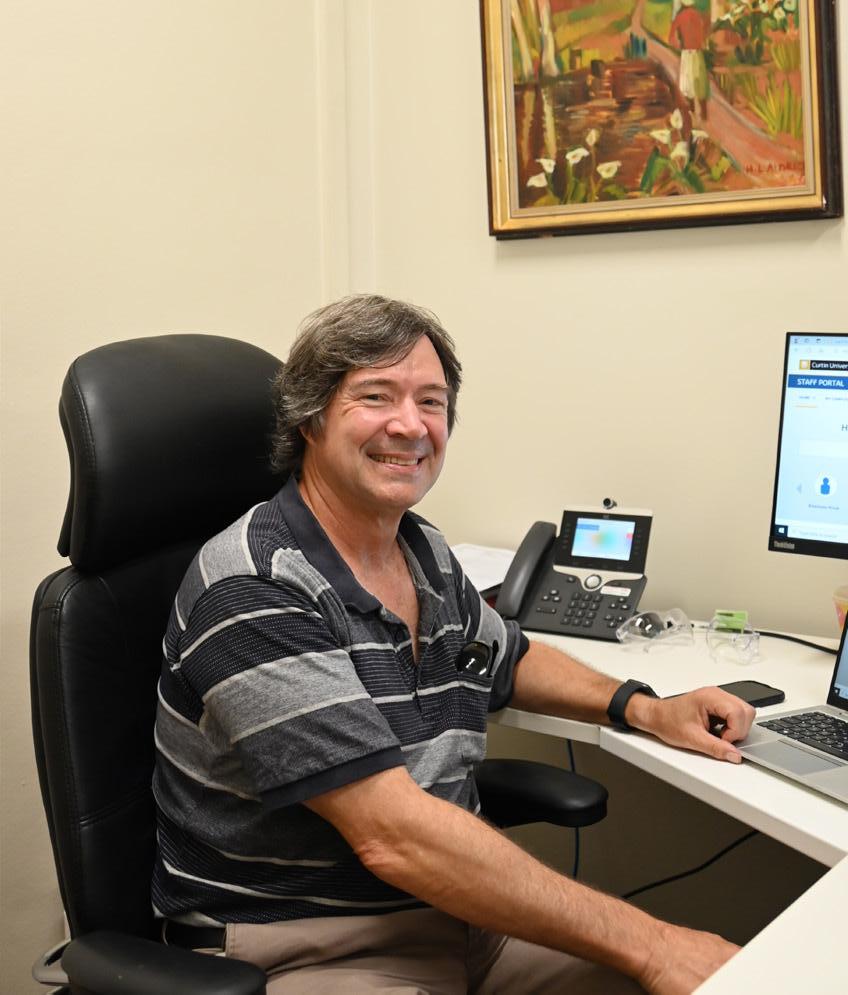 Professor Chris Aldrich Centre Chief Investigator (Curtin)
Professor Chris Aldrich Centre Chief Investigator (Curtin)



12
DELIVERING ON OUR STRATEGY


In February 2023, the Centre’s Executive Committee came together in person to review the Strategic Plan to ensure it aligned with Centre Objectives and the expectations of the Australian Research Council (ARC). The existing plan needed updating, given the Centre had evolved over time. As a result, a series of more relevant initiatives emerged, better aligned with the high-level aims of the Centre. The table below is a summary of the revised Centre Strategic Plan, including deliverables to date.
Strategic Objectives Strategic Initiatives
1: To develop and deliver new transformational technologies to the minerals industry
Awareness of industry challenges and opportunities with feedback into the Centre
Independently contribute to the identification of industry challenges and opportunities based on ‘in-house’ capability and innovation.
Formulating an approach for transformational change (technology hydrodynamics and interfacial systems)
Delivery of innovation through collaboration
International and advisory board overview and feedback on research directions
Strategic Deliverables in 2023
The Director has consulted and communicated the new set of research programs and projects covering the duration of the Centre
CIs and project funds were allocated by the end of the year
Program and Theme leaders presented at 2023 Centre Annual conference
Four patents have been granted in 2023
Improvement of >+1 in TRL for six Centre technologies (NovaCell™, XtractOre™, Selective Aggregation, REFLUXTM Flotation Cell (RFC), Graviton and High Pressure Dewatering Rolls (HPDR))
>80% of Centre researchers have been trained in innovation, commercialisation, and stakeholder engagement over the first 3.5years
2: To provide the minerals industry with a diverse and future-oriented technical workforce
50% gender equity targets in all major events/committees/ boards and roles
50% gender equity targets in all staff and members
Support family friendly and flexible work arrangements
Create an inclusive and diverse Centre culture
Foster a culture of indigenous awareness and inclusivity
Awareness of legislation in relation to workplace harassment and discrimination
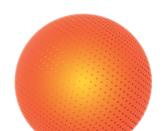

Dedicated sessions at Annual Conference on cultural awareness and celebration, including Indigenous cultures
A specialist was engaged mid-year to assist us with Gender Equity Diversity and Inclusion (GEDI) policy and awareness and a SharePoint site has been established
37% of Centre members are women
>30% gender equity for all major committees (GEDI, Executive, Training and Future Leaders committees) and events (e.g. 56% of Signature Lecture speakers were women, 42% Seminar speakers were women)
13
Strategic Objectives cont. Strategic Initiatives
3: To provide thought leadership and deep technical training to students and the industry
Monthly Signature Lectures from industry and academic thought-leaders
Internal Research Seminars to all members of the Centre
Technical training to all members of the Centre
Targeted professional training for PhDs and ECRs
Cross-university engagement of all PhDs
Training courses offered to Industry by Centre members
Strategic Deliverables in 2023
38% of all Signature Lecture speakers from industry
Vast majority of PhDs and ECRs received some training in mineral processing and polymers topics
90% of all PhDs and ECRs have had professional training
>50% of PhDs involved in internode university and industry visits by 3.5years
5 workshops delivered to industry participants by Centre members
4: To establish strong links between the minerals industry, community and researchers
Promote and raise awareness of the minerals sector innovation and sustainability with school children to support interest in science, technology, engineering and mathematics (STEM) learning
Grow awareness of COEMinerals across the minerals sector, community, government and other researchers
Build positive reputation through endorsement

Mentoring Panel session on Resume
Writing for PhDs and ECRs


UON PhDs presenting Minerals Magic to primary school students through Children’s University
Minerals Magic was presented to >800 school students in 2023
Communications and media strategy plan was reviewed, updated and implemented in 2023
>50% of PhDs presented technical presentations in 2023
> 10 lectures at international institutions and universities


ECR Dr Casey Thomas (UOM) presenting at UK Colloids 23 conference, in Liverpool, UK
14
SNAPSHOT UPDATES FROM OUR UNIVERSITY NODES
“Curtin has a speciality in the understanding and application of artificial intelligence, process automation in mineral processing.”
Prof Chris Aldrich (Curtin)
“Collaboration and crossdisciplinary research play a vital role in advancing innovative biotechnology applications for mineral processing. By merging expertise across various fields, we develop sustainable and transformative technologies for the next generation of mineral processing.”
Prof Chun-Xia Zhao (UoA)
“Team engagement, multicultural experiences, novel technology progress and PhD student achievements were just some of the highlights this year for UniSA node.”
Prof Bill Skinner (UniSA)
“ At UQ node we pride ourselves on the depth and breadth of our industry collaborations.”
A/Prof Liza Forbes (UQ)
"It was amazing to see our School Education Outreach program, ‘Minerals Magic,’ being delivered to over 600 high school and primary students on the UON campus in 2023. We have had a fantastic opportunity to showcase the Centre’s activities in green and sustainable mineral processing, as well as its critical role in the transition to net zero, to students and school educators."
Dr Mahshid Firouzi (UON)

“Deakin node hosted researchers representing 7 projects and 4 nodes in 2023. Not bad for the Centre’s smallest node! We enjoyed exploring the synergies between groups and uncovering more opportunities for collaboration. It is also been great to see so many PhDs getting good use out of some of our niche instruments. ”
Dr Ellen Moon (Deakin)
“UNSW research primarily focuses on froth flotation utilising various methodologies and including modelling, the development of novel experimental techniques and the application of advanced instrumentation such as micro computed tomography and custom-developed X-ray technologies.”
A/Prof Seher Ata (UNSW)
"Monash node is creating bio-inspired chemicals as new alternatives for use in mineral processing. These are being tested in wide-ranging and highly collaborative ways across the COEMinerals node network."
Dr Chris Ritchie (Monash)
“2023 has been a fantastic year for the COEMinerals team at UOM. Most PhDs are progressing through their second year and are all making good progress. The students’ first journal papers are either in review or in their final drafts, ready to submit. Collaborations with other nodes, particularly Monash, UQ, UniSA and Deakin have been very fruitful.”
Prof George Franks (UOM)
15
University of Melbourne
Node’s key focus: Chemical engineering
Highlights of 2023
Technology and innovation
Built a lab device after proof of concept: High-Pressure Dewatering Rolls (HPDR) technology, developed in close consultation with an industry consortium
Novel Pelletiser for dewatering prototype
Building Centre reach and reputation
The long term, close-working relationship between UOM and Tohoku University, Institute of Multidisciplinary Research for Advanced Materials (IMRAM) and Okayama University of Science and Technology resulted in an in-person visit to Japan for multiple members of the team in 2023
PhD Daniel Dodoo’s collaboration with Australia’s National Science Agency: CSIRO / Mineral Resources to develop X-ray and electron beam techniques
Other
PhD Regina Medeiros and ECR Dr Casey Thomas were awarded Researcher Development and Travel Grant scholarships from the Royal Society of Chemistry to support research in fields relevant to Chemical, Materials and Biomedical Engineering
Curtin University
Node’s key focus: Process Systems and Chemical Engineering
Highlights of 2023
Technology and innocation

University of Newcastle
Node’s key focus: Chemical engineering, physical chemistry, modelling and fluid mechanics
Highlights of 2023
Technology and innovation

COEMinerals-invented technologies featured in multiple international scientific forums (such as the Flotation 23 event in South Africa) and conference and research papers (including multiple studies by Imperial College, UK)
Moisture Reducing Roller Conveying (dewatering) system progressed based on ongoing testing at UON
Building Centre reach and reputation




Advanced machine learning methods are being developed for use in image and vibration analysis of among other fluidised beds to gain better insight into the granular physical phenomena and the behaviour of flotation froth systems




A REFLUX® Classifier (RC™) fractionator was set up at Curtin node to enable on-site testing, with a plan for gold ore testing in 2024
Sink-Hole Fluidiser technology, developed at UON, was transferred to the Curtin node in 2023. Curtin and UON teams work collaboratively on different aspects of data analysis from simulation of this technology


















L/Prof Kevin Galvin gave a public lecture, hosted by the Royal Society of NSW (Hunter Branch) on scientific “Invention, Innovation, Impact”
We welcomed global experts in flotation to the Centre-organised International Flotation Symposium in Newcastle, with supporting lab tours
PhD Siân Parkes visited Germany, sharing latest Centre research and innovation during the EIT - European Institute of Innovation and Technology RFC Upscaling Workshop and The Horizon Europe: Marie Skłodowska-Curie Actions (MSCA) ITN FlotSIM school #4 events





UON hosted and updated or contributed advice on various international, clean energy, sustainability, business delegations as well as government representatives on COEMinerals research, innovation and impact














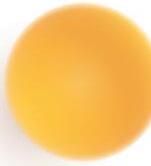


















16
Node’s key focus: Flotation and mineral surface chemistry
University of Queensland
Highlights of 2023
Technology and innovation
“We now have further experimental results to support our new discovery about Bubble-Particle Detachment: it does not occur at the three-phase contact line as conjectured a century ago. It is associated with the bubble necking. The new experimental results show that it is kinetically controlled like the Bubble-Particle Attachment. Two papers have been drafted for publication,” Prof Anh Nguyen
A novel tomography application advanced in 2023
Collaborative research with industry saw the development of a novel laboratory-scale fluidised bed flotation device: the JKHFmini
A/Prof Kym Runge and team developed methods to computationally predict the performance of the REFLUX® Classifier using CFD software and calculated a partition curve

Prof Yongjun Peng and team observed a two-fold magnitude in chalcopyrite product grade improvement in RFC flotation, highlighting a significant entrainment reduction
UQ node tested aerosol collectors at Glencore’s Antapaccay project
Building Centre reach and reputation
Prof Anh Nguyen and PhD Quang Dao visited the University of Utah to learn about X-ray tomography techniques for mineral processing
A/Prof Liza Forbes visited The Helmholtz Institute Freiberg (HIF) in Germany in April 2023, resulting in the submission of a joint grant application between Centre CI Dr Susana Brito e Abreu (UQ) and Dr Katrin Pollman (HIF)
Other

UQ node coordinated a field visit to Newcrest’s Cadia operation and A/Prof Kym Runge and her team conducted a field visit to a Newmont mining site
UQ node hosted multiple government and industry representatives to the node, as well as offering training to industry and schools

Deakin University
Node’s key focus: Earth sciences and mineral surface chemistry separations using novel reagents
Highlights of 2023
Technology and innovation
A milestone research paper was published as a result of internode collaboration, co-authored by Dr Ellen Moon and Dr Negin Amini (Deakin) and Prof San H. Thang (Monash). It heralded the first step towards enabling recycled surfactants
Other
Deakin is ‘home-base’ for the coordination and roll out of wholeCentre GEDI
Monash University
Node’s key focus: Polymer chemistry and RAFT polymerisation
Highlights of 2023
Technology and innovation
New RAFT polymer reagents are ‘travelling’ to different Centre nodes to aid in multiple projects.
Building Centre reach and reputation
Prof San H. Thang AC attended The Honourable Linda Dessau AC CVO, Governor of Victoria event at Government House as part of a group of 20 prominent Companion of the Order of Australia (AC) recipients
PhD Yuxi Liu collaboration with Australia’s National Science Agency: CSIRO for testing automation utilsiing Chemspeed technology
17

University of New South Wales
Node’s key focus: Froth flotation systems
Highlights of 2023
Technology and innovation
Conducted an investigation into visualising particle behaviour in the froth phase using X-ray facilities at the University of Sydney. This facility enables comprehensive tracking of particles in an entire lab-scale setup. The results observed have not been reported previously, and two journal papers are currently in preparation
Building Centre reach and reputation
A/Prof Seher Ata joined the Capacity Building Committee of the Society of Mining Professors (SOMP), which aims to enhance the exchange of knowledge in teaching and research in mineral processing and promote adoption of new, related technologies throughout Southeast Asia, South America, and Africa
University of South Australia
Node’s key focus: Flotation, mineral surface chemistry, spectroscopy and physical chemistry (bubblesurface and droplet interfaces)
Highlights of 2023
Technology and innovation
A laboratory-scale unit of the Gyratory Rolls Crusher (GRolls®) technology has been installed at UniSA. A related paper was presented at Metplant 2023 and published in ‘Minerals Engineering’. The GRolls® crusher will figure in several COEMinerals projects and associated research and development in 2024
A multi-company project led by Prof Bill Skinner, A/Prof Max Zanin and ECR Dr George Abaka-Wood and AI Dr Richmond Asamoah, ‘Advanced Flotation’, began on site in July, addressing specific flotation challenges, which will run for 3 years
A CRC-Project has been awarded (August) to develop flotation strategies for graphite, which will investigate graphite recovery using several technologies, including the Centre-developed REFLUX™ Flotation Cell (RFC)
Building Centre reach and reputation
ECR Dr George Abaka-Wood was on the organising committee of CRITCON (May 2023) in Adelaide, with multi-node speaker involvement (the first national technical conference to focus on the discovery, characterisation and processing of critical minerals)
ECR Dr Piotr Pawliszak visited Dr Martin Rudolph’s laboratories at the HIF in September
University of Adelaide
Node’s key focus: Bio-inspired engineering
Highlights of 2023
Technology and research innovation
UoA team has discovered a library of peptides exhibiting unparalleled specificity and selectivity in binding to diverse mineral particles. The biomolecules engineered using these peptides showcase a remarkable affinity for mineral particles, achieving a separation factor exceeding 1000. A patent has been filed for this technology
Building Centre reach and reputation
Insights relating to COEMinerals/UoA innovative research was shared in multiple international forums including: The Monash Chemical Society Lecture; The Australian Materials Chemistry Conference (AMCC23) by The Royal Australian Chemical Institute; The International PACRIM conference (Hawai’i); The 2023 Australia New Zealand Micro Fluidics (ANZNMF) Conference (Adelaide); The 2023 International Conference on Materials Innovation (ICMI) (Brisbane)
Other

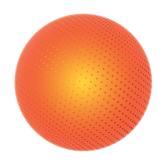
Prof Chun-Xia Zhao was ranked in the world’s Top 2% Scientists in the field of Chemical Engineering and Chemical Physics by Stanford University
PhDs Matthias Orchard and Yang (Jessica) Li achieved professional and milestones relating to intern-based work experience and/or peer-leadership roles
18
“Multidisciplinary collaboration is at the heart of the research we do within the COEMinerals and it is the foundation for scientific advancement and technology innovation. The advancements in the fundamental knowledge can be translated into practical applications through our strong connections with the minerals industry. The access to state-of-the art research facilities and technology available across the COE nodes further facilitate the high-quality research we do. As we build our research capacity, we are developing the next generation of leaders towards a sustainable future in the minerals industry.”
 Chief Investigator, Dr Susana Brito e Abreu
Chief Investigator, Dr Susana Brito e Abreu
19



OUR INFLUENCE
IMPACT Discovering the “Genetic Code” of Every Mineral 21 Bio-inspired Alternatives for Mineral Processing Examples of cross-node collaborative research with Monash 23 24 Driving Sector Transformation with Game-Changing Technology Novel technologies Improving the efficiency of downcomer technologies 27 27 32 The COEMinerals TRL Framework 33 Building a Global Reputation for Excellence Elevating Australian science, education and innovation Research collaboration with leading institutions Research engagement with Australia’s National Science Agency: CSIRO Intractable problem-solving with industry Engaging with government 37 37 39 40 41 41
AND
DISCOVERING THE “GENETIC CODE” OF EVERY MINERAL
COEMinerals is using biomolecular engineering to map minerals and create game-changing transformation for the minerals industry.
The Centre is transforming the field of mineral separations by developing world-leading innovation and capability, identifying, and producing specific peptides with high affinity for minerals and metals.
This visionary work, led by Centre Deputy Director Prof Chun-Xia Zhao and her team at the Centre’s UoA node, involves the application of biotechnology, biomimetic nanomaterials and microfluidics for (medical) drug delivery and controlled release to devise bioinspired engineering solutions for mineral processing.
Prof Zhao and Dr Guangze (Daniel) Yang presented a keynote on the fundamental work undertaken by Prof Zhao’s group during the 2023 COEMinerals
Annual Conference in Newcastle. This feature provides insights into their work and its significance for the industry.
The ‘Green Shoot’ idea
The UoA node work is integrating biotechnology into mineral separation processes.
Scientific advances and applications relating to utilising biomolecules is predominantly in the biotechnology field today. As such, established medical advances associated with the targeted delivery of therapeutic drugs (e.g. for cancer) via peptides or proteins (antibodies) is in the pharmaceutical domain, with application extensions in cosmetics and agriculture. Centre work is drawing on, and applying these well-advanced scientific fundamentals and innovative approaches to target mineral particles during beneficiation (minerals separation). As such, the mechanism being applied for mineral recognition and binding mimics how a cancer-targeting drug can find and attach to an individual cancer cell in a human body.

“We had the idea to uncover the potential of peptides for use as reagents in minerals separation many years ago, because we knew there were some naturally occurring molecules that had selective binding properties with certain materials,” said Prof Zhao.
Centre Director, L/Prof Kevin Galvin, commented, “Eighteen months ago we knew they were on track to achieving amazing things, which was recently


confirmed when I last visited them. We needed to be patient and quiet on this while they locked in the provisional patent”.
Beyond Centre inter-connectivity, the team also collaborates with Centre Associate Investigator Prof David Weitz from Harvard University.
Development of mineral-targeting biomolecules: peptides
The team repurposed phage display technology: a technique traditionally confined to drug discovery and biomolecular studies and recognised by the 2018 Nobel Prize in Chemistry.
“First, we built on existing knowledge to screen different mineral particles using a library of billions of peptide variants, which enabled Centre-funded development of a new ‘library’ of mineral binding peptides.”
This new library or ‘data base’ builds out the understanding of mineral–peptide interactions at a molecular level. Minerals do not have DNA, but for comparative purposes this understanding is akin to cracking the genetic code in humans, but for each and every mineral on earth.
Enhanced understandings of mineral-peptide interactions then informed the creation of new biomolecular peptide variants (designs), and ultimately

21
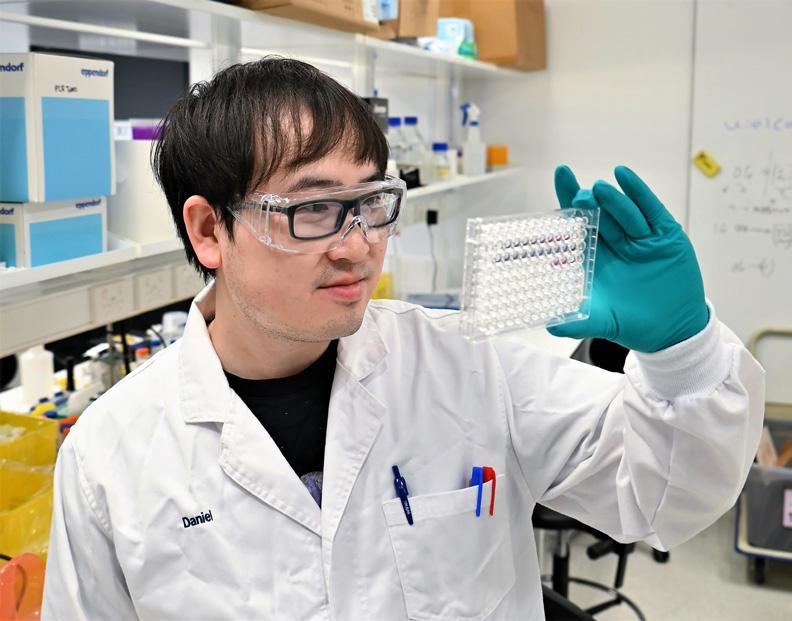

the creation of new amino acid-based peptides with the affinity to bind to certain minerals and element surfaces.
“This stage of peptide-mineral matching, where we created and confirmed exact matches between a bio-based peptide and a mineral was a mammoth process that is now complete,” said Prof Zhao.
Dr Yang conducted and oversaw the lion’s share of this work. He shared that “finding the exact peptide to bind with each REE took a year, but doing so was especially rewarding as there is no efficient or effective way to separate some REEs today, and this knowledge has the ability to change that”.
Scientific process efficiency insight
While it may have taken two years, overall lab and project time was significantly reduced by using colour-coding to confirm each mineralpeptide match in a vial. The simple indication of yes/no colour matching after each round of testing enabled the UoA team to quickly ascertain initial results, fast tracking the test-and-learn processes in the lab. (i.e. when a peptide turned the vial mineral ‘blue’, that indicated a ‘match’ and triggered more extensive scientific analysis). This shaved hours, weeks and months of lab time.
Why peptides deliver a new alternative in mineral processing
Mineral processing relies on a limited range of chemical collectors or surfactants delivered in a variety of ways. Peptides operate at another level when it comes to recognising the chemical code of a particle and being highly selective with the ability to lock together with a mineral particle surface (like pieces of lego).
The transformative benefits on the horizon
The peptide mapping project unlocks huge potential for first stage beneficiation of minerals and in downstream hydrometallurgical processing, especially in the boutique area of rare earth minerals, and metal recycling.
“The extraordinary level of selectivity opens the door to novel forms of processing, essential for delivering cost-effective performance at the million tonne per annum level needed by the industry. High selectivity means high mineral upgrades and therefore much smaller cost effective and environmentally acceptable downstream processing,” L/Prof Galvin said.
The Centre research program has been reshaped to help promote further advances, firstly with other game-changing work in novel RAFT polymers at Monash, led by Prof San H. Thang, that can include peptides, as well as finding novel ways to deliver and even recycle the new reagents. The Centre’s innovation in large-scale separation technologies offers further scope for applying the new reagents at scale. This work opens the door to a new era of green chemistry, replacing otherwise toxic collectors currently used in mineral flotation.
Centre researchers across multiple nodes are already applying the peptides to flotation separations. The work includes specific precious metals, REE, critical minerals and clays across multiple nodes. The work offers ways to address specific metals in minerals in an oxidised state.
It is envisaged that an economically viable approach will be identified. The economics become more attractive when the specific peptide can be produced more cheaply in cell factories via E Coli. The cost can be further reduced if the peptides can be recovered and reused.
The economics further improve as the market grows, and when the minerals are upgraded to much higher concentrations.
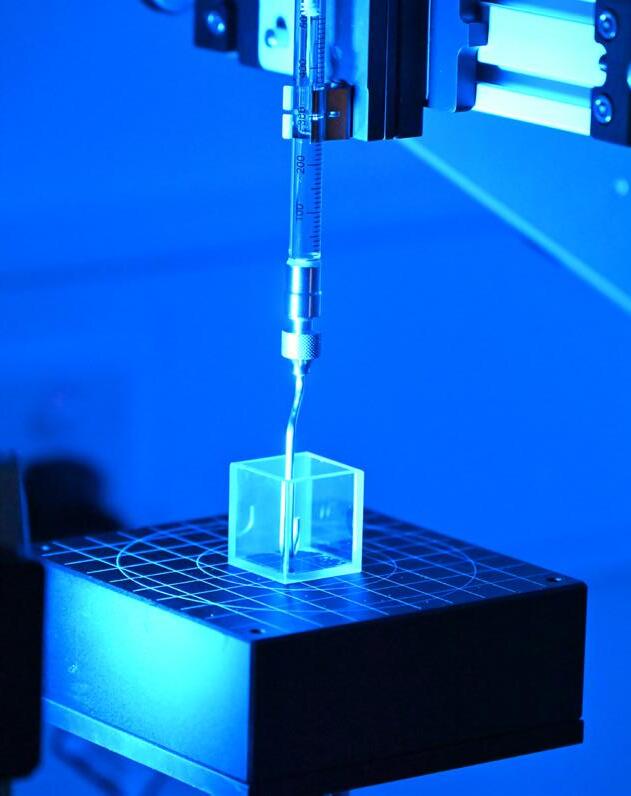
Explainer: what are peptides?
Peptides are like small pieces of proteins. Imagine proteins as long trains made up of ‘lego blocks’ linked together, where each lego block is a small unit called an amino acid. There are only 20 amino acids that make up the proteins found in the human body. Peptides are like having just a few lego blocks from that train. They are made up of a few amino acids linked together in a chain.


22
Picture Page 21 - UoA Node (L-R) PhD Ricky Zhao, ECR Dr Daniel Yang, CI Prof Chun-Xia Zhao and PhDs Matthias Orchard and Jessica Li
PhD Alisha Debas

BIO-INSPIRED ALTERNATIVES FOR MINERAL PROCESSING
COEMinerals is applying novel chemistry to enable the replacement, recovery, regeneration and reuse of the chemicals that enable minerals separation and recovery at various stages of mineral processing.
The end goal is offering industry more-sustainable and effective alternatives to the chemicals used today, thereby minimising the environmental impact of mining operations, and delivering cost and other efficiencies.
Beyond creating less waste, recycling ingredients would reduce or remove the need for chemicalwaste storage (post-processing), which today relies on ‘tailings dams’. Further, early testing indicates the new additives being created by COEMinerals may be more effective and efficient at minerals separation than currently utilised chemicals.
Monash node plays a central role in this widereaching work, guiding the chemistry with close engagement with researchers across nodes.

Novel chemistry: RAFT polymer, biomolecule and biodegradable ingredients
Collaboration between multiple COEMinerals members and university nodes, and across multiple projects is delivering world-leading capability in applying Reversible Addition− Fragmentation Chain-Transfer (RAFT) polymers to critical and strategic mineral separations.

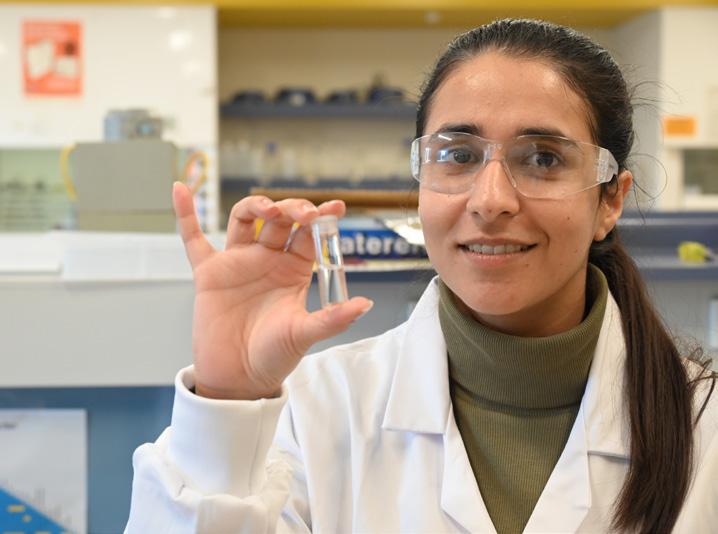
RAFT polymers are being designed and synthesised to improve the ‘froth flotation’ minerals separation process in various ways, with the incorporation of specific chemical functionalities that selectively target minerals of value and enable effective mineral recovery.
“Everyone is engaged in the mindset of development,” shared CI Prof San H. Thang, AC (Monash).
Further, new biomolecules and bio-inspired polymer-based reagents are biodegradable,
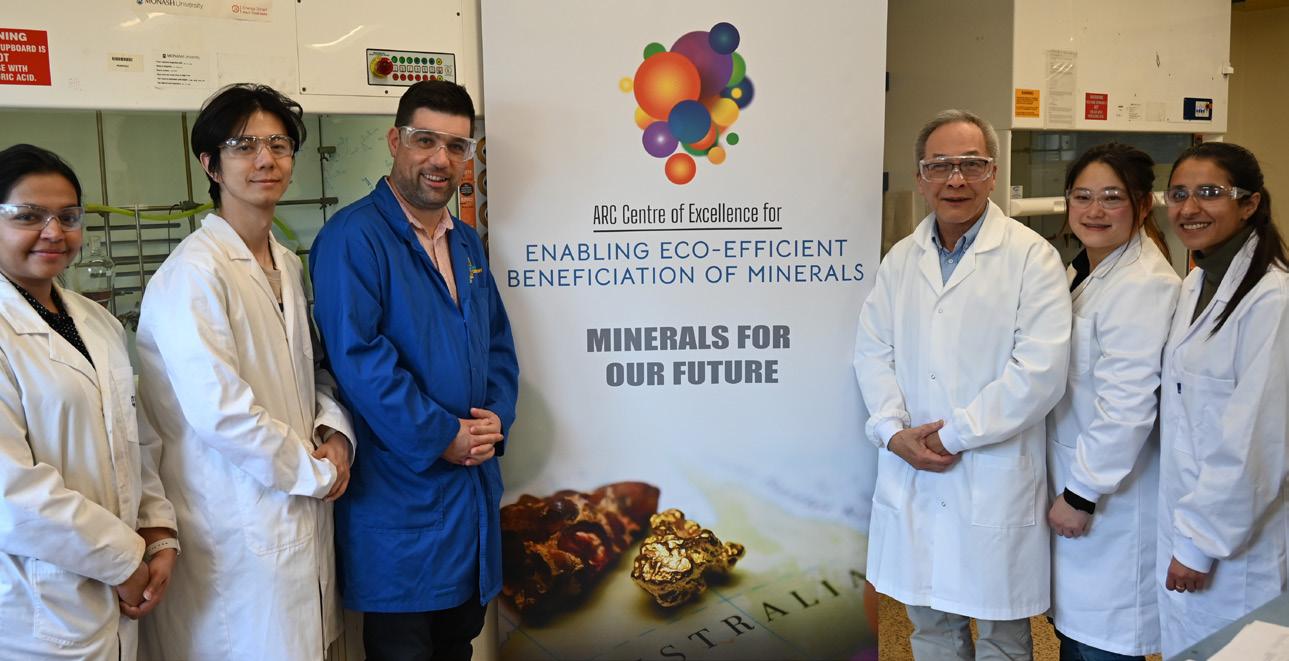
removing waste and increasing the overall sustainability of minerals separation processes. A series of stimuli-responsive biomolecules and synthetic molecules (frothers or collectors) accommodate and adapt to changing pH, temperature and naturally occurring light conditions.
The novel, bio-inspired chemical collectors using plant-based chromophores (also known as ‘coloured molecules’, as they absorb a particular wavelength of light and emit a colour as a result) testing reveals these intriguing molecules have dual properties: improving foaming during flotation and increasing selectivity that enables them to specifically bind with certain mineral particles.
Dr Chris Ritchie (Monash) who directs this work explained, “Thus far, our efforts have centred on understanding the chemistry of these new compounds and their interactions. However, we are now expanding these efforts through extensive collaboration across the Centre, with the goal of achieving transformative impact within the mineral processing sector.”
Monash group photo: PhDs Samadhi Fernando and Yuxi Li, CIs Dr Chris Ritchie and Prof San H.Thang, ECR Dr Tina Hsia and PhD Alisha Debas
23
Prof San H. Thang

Monash
and Deakin
Examples of cross-node collaborative research with Monash
PhD Samadhi Fernando (Monash)
Thermoresponsive RAFT polymer-based surfactants (P39)
COEMinerals is unlocking the potential for recyclable polymers that improve selectivity during mineral processing. The first research paper on this topic, released in 2023 proves novel RAFT polymer-based reagents (created at Monash) can replace current chemicals to recover ultrafine mineral particles. It also offers proof-of-concept that one day these polymer ingredients will be fully recyclable and reusable by industry. The project combines environmental engineering, chemical engineering and chemistry, and application of scientific methods typically used in the food, biotechnology, and pharmaceutical sector now being adapted for the first time to recover fine mineral particles. These efforts mark an initial move towards future environmental advantages rooted in circularity.
“Not only are the new reagents more effective and efficient at capturing (agglomerating) fine mineral particles than the chemicals used today, but they are designed to one day be recoverable and reusable,” said CI Dr Ellen Moon (Deakin), with Prof San H. Thang adding, “We’re confident future Centre work will unlock the key to fully recyclable polymer recovery (potentially via simple cooling or heating) which then removes chemicals from mining waste, and ideally, reduces the liquid components of mining waste, which today is stored in tailings dams.” A next step in the research is to test newly created, bio-inspired polymers to further improve environmental-related outcomes.
Investigation of particle hydrophobicity (P50)
Measuring the change in surface hydrophobicity of mineral surfaces following treatment with chemical reagents is relatively straightforward when the mineral surface is large and homogeneous. Conducting such experiments on small clay particles or flocculated materials presents significant challenges. Ongoing collaborative work between Monash and Deakin nodes aims to correlate
reagent dosing with the change in macroscopic properties of aggregated clay particles following chemical modification to establish a leading indicator for assessing reagent dosing requirements for flocculation-flotation experiments moving forward.
Monash and UNSW
Stimuli responsive RAFT polymer testing (P50)
Reagents developed at Monash have been investigated by CI A/Prof Seher Ata and her team to determine the critical micelle concentration of reagents using the pendant drop method. This work has set the scene for more elaborate experiments and collaborations ahead.
Note: ‘P’ refers to Project numbers i.e. P39
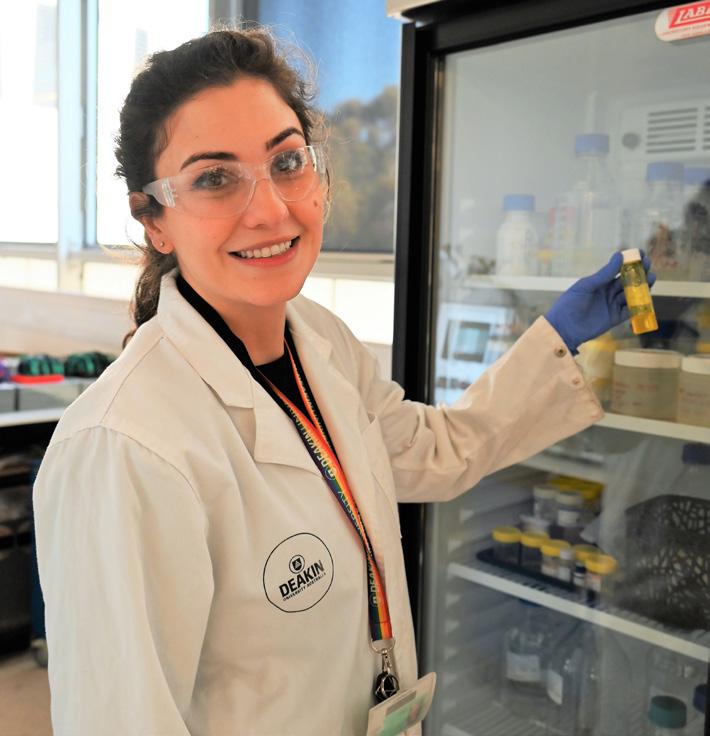

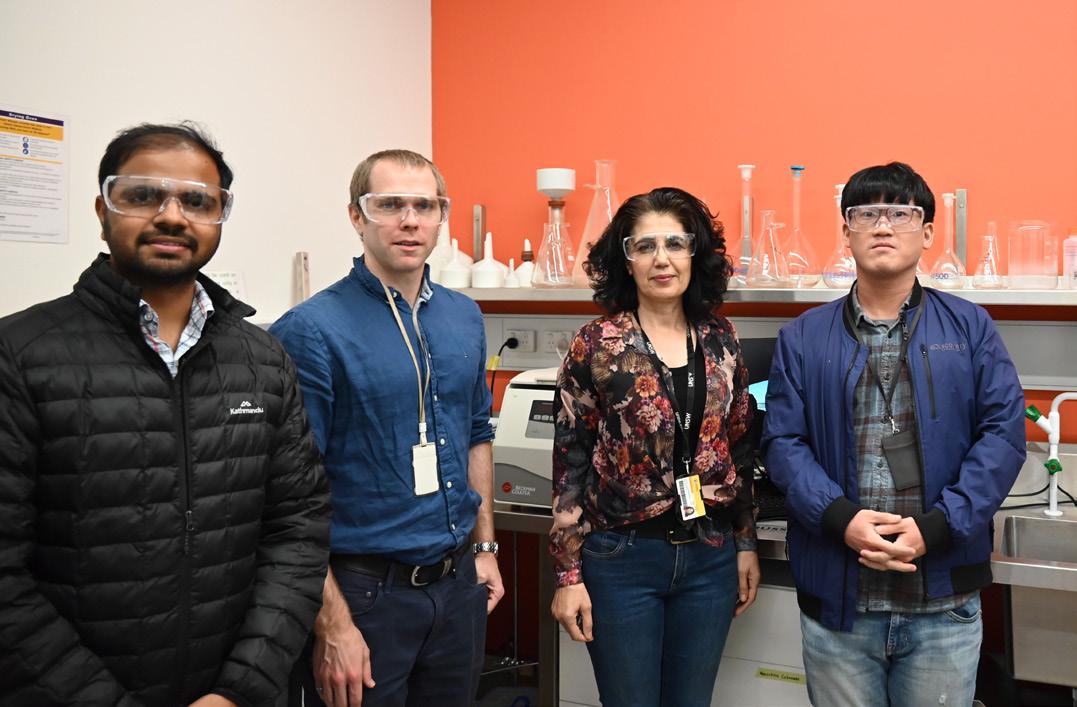
UNSW Node group: PhD Sayed Anzoom, AI Dr Ghislain Bournival, CI Prof Seher Ata and PhD Minuk Jung
ECR Dr Negin Amini (Deakin)

24
Monash and UniSA
“Understanding how two bodies, including how a single oil droplet may interact with mineral surfaces is not only an exciting scientific challenge, but this knowledge has great potential to transform research and new approaches in studying the fundamental acts of flotation: collision, attachment and detachment, as well as corelating them with flotation recovery,” CI Prof Marta Krasowska (UniSA).
“Polymers can be selective in their adsorption and can stop a mineral from floating. They can often also be derived from benign biological materials, making mining more environmentally sustainable,” shared CI Prof David Beattie (UniSA).
Bio-inspired small molecules via Quartz Crystal Microbalance analysis (P36)
Experiments indicate that Vitamin E based small molecules, produced by Monash, exhibit exceptional selectivity for chalcopyrite (copper) particles.
Quartz Crystal Microbalance (QCM) analysis proved that they are “super selective” towards copper particles/surfaces and adsorb at such surfaces, while they do not adsorb at surfaces that mimic gangue (i.e. waste) particles such as silica during flotation.
Stimuli-responsive surfactant adsorption onto clays (P46 and P50)
Selective reagents can adsorb on and flocculate clay particles, rendering the particles highly hydrophobic (water repelling), which means they have potential utility as both flocculants and reagents for reverse froth flotation. Testing is now underway to better understand their adsorption profiles, using in situ measurements of vibrational spectroscopy.
Surface interactions of stimuli-responsive frothers (P49)
In addition to the adsorption of reagents to solid particles, understanding the air-water interface is critical in the design of new frothers. Synchrotron
small and wide-angle X-ray scattering experiments are scheduled to test their response to pH, light and temperature stimuli in 2024. Profile analysis tensiometry and dilational rheology (i.e. studying the matter-flow) will also be conducted to investigate the kinetics of adsorption of such frothers at the surface as well as the mechanical properties of the adsorbed layer.

Monash, UOM and UniSA
Testing biopolymer emulsions for Chalcopyrite (copper) recovery (P34)
The UniSA and UOM teams are using tailored surfactants for forming smart emulsions for collection of coarse particles in flotation. These surfactants have a number of jobs to perform, including making the emulsions stable before deployment, and ensuring oil droplet attachment and spreading over rough surfaces consisting of more than one mineral type. The work will eventually allow large particles to be collected, reducing the energy expenditure that arises from grinding ore.
Monash and UOM
Emulsion stabilisation with a new surfactant (P33 and P34)
UOM is testing Monash’s bio-inspired, Vitamin E based small molecules as a surfactant for chalcopyrite (copper) separation. Results demonstrate that new surfactant improves the stability of kerosene emulsions, compared to a commercially available surfactant commonly used in
the mineral processing industry. Improving emulsion stability over time by preventing oil drops from coalescing is important as it makes the emulsion more stable. A related scientific discovery relates to improved understanding of the influence of the surfactant molecular weight on the stability of emulsions. This may have other applications, given improving emulsion stability is also important for things like making salad dressings that do not separate and shampoos that remain stable over long period of time.
RAFT polymers as collectors and flocculants (P44 and P48)
Dual-functional RAFT polymers with different molecular weights have been synthesised by the Monash team. They can function as mineral particle collectors and flocculants (which help tiny mineral particles to stick together and/or to rising bubbles for separation and surface collection). To enhance selectivity towards chalcopyrite (copper), the polymers are incorporated with acetylcarbamothioate (-O-C(=S)-NH-CO-CH3) functionality. The effectiveness of these new RAFT polymers as a flocculant was compared with a xanthate-based polymer of similar molecular weight in flocculation experiments. The flocculation efficiency was assessed by measuring the changes in turbidity (i.e. when solid particles or sediment remain suspended in a liquid) readings of chalcopyrite suspensions containing particles smaller than 25 micrometres (µm). (For perspective, one µm is one-thousandth of a millimetre – very small!) The results demonstrated a significant reduction in turbidity within 3 minutes after treatment with the novel RAFT polymer, highlighting its strong flocculation capabilities.
Page 26: PhD Regina Medeiros (UOM) and UON PhDs Sonia Khandaker and Rocky Mensah


25
Photo above: PhD Rupinder Kaur (UniSA)
Flocculation of clays using novel surfactants (P46 and P50)

Small molecule reagents developed at Monash have been successfully employed in the flocculation of kaolinite (clay minerals) at loadings comparable with those used in industry. The reagent with low molecular weight opens the door towards their use as flocculation flotation additives. Ongoing benchmarking against other reagents is underway.
“The collaboration between the emulsion experimentalists at UOM node and the polymer chemists based at Monash has been instrumental in trialling novel reagents in emulsion applications. The synergy between the groups is fantastic,” shared CI Prof George Franks (UOM).
Monash and UON
RAFT polymer / polyacrylamides (water-soluble synthetic linear polymers) (P46)
Adsorption testing is occurring on different mineral oxides, including iron oxides for Monashmade polymers. Analytical chemistry techniques enable molecular scale adsorption testing to ascertain which novel polymers offer the best prospect for the separation

of iron oxides and gangue silica via selective adsorption. A related paper is due for publication in 2024.
Bio-inspired small molecules as frothers and collectors (P46 and P48)
UON is testing novel reagents made by the Monash team using bio-inspired small molecules (based on Vitamin E and cardanol). The Vitamin E derivatives are being tested as new surfactants and the cardanol derivative, with carboxylic acid functionality, for hematite (iron oxide) flotation. This novel small, bio-inspired collector is being benchmarked against the commercial collector, sodium oleate. Ultimately, the team is aiming for commercial application after a successful trial stage.
Monash, UoA and UON
Bio-inspired small Vitamin E based molecules as novel collectors (P42)
Combining the strengths of Monash and UoA teams, the cross-node team is synthesising bioinspired small molecules (Vitamin E derivatives and peptides) and RAFT polymers with peptide segments (the amino acids attached to the chainend of the polymer) using a peptide-containing thiocarbonylthio RAFT agent. The resulting innovative new reagents are being evaluated as novel mineral particle collectors in froth flotation for REE minerals at UON.
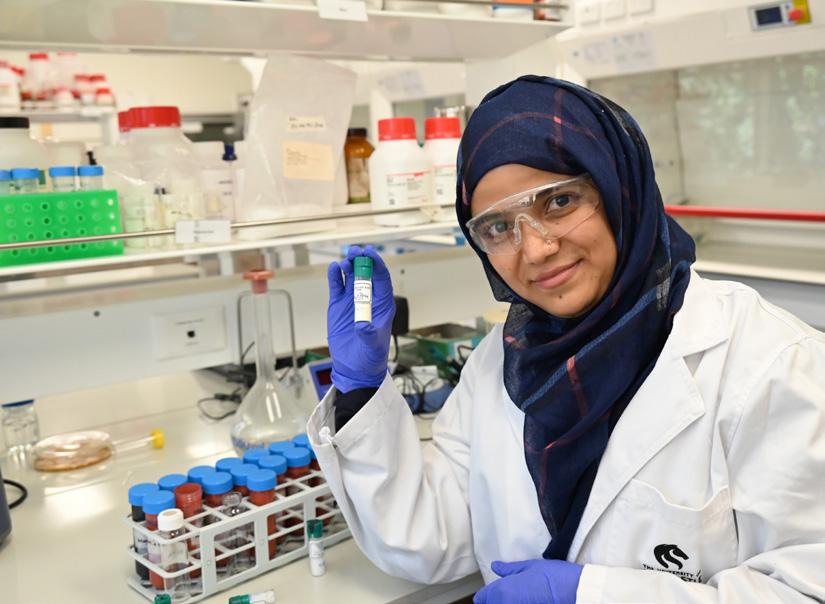

Monash, UON and Germany
Testing bio-inspired small molecules and RAFT Polymers as frothers and collectors (in changed conditions) to aid recovery of lithium ions
A COEMinerals project was conducted as part of The Australia-Germany Joint Research Cooperation Scheme. PhD Siân Parkes (UON) visited Germany to help test four Monash-made RAFT polymers for recovering ions present in a range of lithium (including lithium ferrous phosphate, also known as lithium iron phosphate, LFP, which is a lithium-ion battery technology popular in solar, off-grid, and other energy storage applications and batteries).
The end goal is to recover, recycle and reuse them. The research found that polymer selectivity could be manipulated by changing pH, and minerals recovery was improved for iron (up to 100), zinc and silicon (up to 50). The results were shared during the Chemeca 2023 conference in Auckland, New Zealand. A collaborative journal article is due in 2024.
The use of chemicals (for chemical emulsions or as surfactants, reagents, collectors, frothers, flocculants) is wide-reaching in mineral processing. They are added to solutions containing ore and mineral particles to selectively enable some particles to attach to each other and/or to bubbles, to help them float or sink, and/or remain in a stable ‘froth’ for collection as part of mineral processing ‘flotation’ methods.
Many traditional methods of froth flotation consume high volumes of one-off use chemicals. By the end of 2027, it is estimated the global market for collectors used in mineral processing would reach US$100 billion1 as these chemicals are a crucial enabler for separating minerals. In general:
o frothers/surfactants stabilise froths during flotation mineral processing
o reagents help mineral or other particles to float
o collectors help minerals/metal surfaces repel water
o flocculants help suspended particles attached and aggregate (stick together)
26
DataIntelo.MiningCollectorsMarketResearchReport, 2023; p 112.
DRIVING SECTOR TRANSFORMATION WITH GAME-CHANGING TECHNOLOGY
COEMinerals is at the forefront globally in developing new technology options and process solutions to support first stage beneficiation of minerals:
Removal of waste ore at coarse particle sizes to preconcentrate the ore (which reduces energy consumption in grinding hard rock and water losses to tailings)
More efficient processing of fine particles to maximise resource recovery and concentrate the product (to reduce emissions during downstream processing)
More effective solid-liquid separation to recover more water (to ideally eliminate tailings dams)
Technologies emerging from COEMinerals are assessed against a Technology Readiness Level (TRL) scale, a systematic metric used to assess the maturity of a particular technology. While TRLs are noted on the following pages, please refer to The COEMinerals TRL Framework and correlating tables on pages 33-36.
Novel technologies
The Gyratory Rolls Crusher + (GRolls ®) (P1 and P9)
Developed in South Australia with Centre (UniSA node) involvement, the GRolls® technology reduces energy and water consumption during comminution. COEMinerals CI Prof Bill Skinner co-authored a research paper, with findings presented at the Metplant event in 2023 by Mr Mark Drechsler of CBSM Mining Services Pty Ltd 1

Notes: ‘P’ refers to Project numbers i.e. P9 + yet to be fully evalutated against The COEMinerals TRL Framework
1 https://www.linkedin.com/in/ACoAAAXY8RcB1f_hX7OdO1QCGGUghv9a5r7Tz08

Moisture reducing roller conveying system+ ( P29)
This dewatering system recovers water from coarse stream tailings and product streams following beneficiation. The water recovery also leads to reduced transport costs for trains, trucks, and shipping, and reduces the volume of tailings. Centre members are looking to further improve the dewatering through continuous testing.
Technology inventor, CI Prof Ken Williams (UON) commented, “We are striving to remove as much water as possible with this system so it can be retained and reused, further reducing overall water consumption during mining and mineral processing. With international patents now in place, the next step is bridging the ‘gap’ between invention and commercialisation by sourcing a commercial partner”.
The first stage of mineral processing, where minerals are liberated from the host rock, is energy intensive. Historically, all the mined feed was ground to liberation sizes, leading to excessive energy consumption, and increased volume of tailings and hence water loss. Declining ore grades, environmental, economic and social factors are adding to the challenge of mineral recovery and concentration, resulting in significant intractable challenges for industry and society.

27
GRolls® technology
The JKHFMini+ - developed in a parallel project (P41)
Researchers from UQ node are undertaking research to advance the HydroFloat®, a coarse particle flotation technology (commercialised by Eriez International and installed at several mining operations worldwide) involving the aeration of a fluidised bed to achieve recovery of coarse particles that cannot be recovered in conventional flotation. Improved coarse mineral flotation means less grinding is needed, which can save up to 50% of the energy used in mining operations 2 A key outcome of the collaborative research, involving Eriez and supported by the Collaborative Consortium for Coarse Particle Processing research program 3, has been the development of a new laboratory-scale fluidised bed flotation device at the UQ node named the JKHFmini. The JKHFmini enables rapid and efficient testing for essential operations such as ore amenability and metallurgical evaluation, circuit modelling and design, and routine metallurgical assessment. The device and testing procedures were developed to use only 1-2 kg of sample per test, similar to the scale used in batch flotation tests.
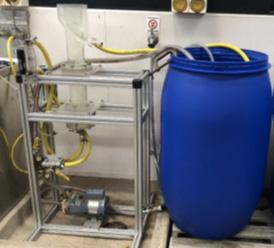
The JKHFmini has been used to assess the coarse flotation behaviour of two copper ores. The device has also been taken to a mine site to compare its performance to a full-scale HydroFloat®. Researcher Lizette Verster (UQ) shared, “This is a real game changer and has enabled us to undertake so much new work that was not previously possible”.

Novel tomograph y application for 3D Imaging + (P2 and P3)
The project team, led by CI A/Prof Kym Runge (UQ) is researching a novel method of creating a composite 3 dimensional (3D) image of particles, and the grains within it, based on the manipulation and analysis of data from X-ray micro-CT (XRT). XRT has the potential to non-invasively and non-destructively measure the composition and surface exposure of mineral particles without the stereological problems associated with analysis of 2 dimensional (2D) images generated with conventional techniques like Mineral Liberation Analysis (MLA). As part of the project, the UQ node
is developing Open Access, user friendly software to analyse the images sourced from the XRT and transform the images into information.
The aim of this project is to advance the application of XRT for mineral processing applications by exploring whether XRT can be used in conjunction with 2D Scanning Electron Microscopy (SEM) information to enable characterisation of mineral liberation. The project utilises new analytical equipment at UQ in collaboration with other universities, enabling higher resolution expectation maximisation (EM) data to be obtained, suitable for fine scale mineral analysis as well as more accurate segmentation analysis. The work provides the opportunity for 3D stereological analysis and interpretation of 2D imagery at a level not previously attainable. A next step will be to link the tomography and surface chemistry to build a comprehensive picture of the geochemistry.
A/Prof Kym Runge commented: “Techniques that help industry make better decisions are important, as some decisions take 10-15 years to materialise and involve significant expenditure. Our work is about trying to get better information and faster”. 2
 ECR Dr Farhana Diba (UQ)
ECR Dr Farhana Diba (UQ)
Ballantyne, G., Powell, M.& Tiang, M. Proportion of energy attributable to comminution. Proceedings of the 11th Australasian Institute of Mining and Metallurgy Mill Operator’s Conference, 2012. 25-30.
Collaborative Consortium for Coarse Particle Processing Research (CPR) - Sustainable Minerals Institute - University of Queensland (uq.edu.au) JKHFmini arrangement used to assess coarse particle flotation
3
Novel pelletiser for dewatering (P43) (TRL 1.8)
The result of collaboration between COEMinerals team members at Deakin and UOM: The system involves the dewatering of small hydrophobic flocs, forming agglomerates that become progressively denser, rejecting water. Ultimately, this technology could create dry, stackable tailings. CI Dr Ellen Moon (Deakin) shared, “We were inspired to use the approach in an entirely new way”. The team have developed a small prototype pelletiser for testing, ahead of demonstrating to potential industry partners.



High Pressure Dewatering Rolls (HDPR) technology (P28) (TRL3.8)
UOM node members are undertaking a project with BHP’s ‘Think and Act Differently’ team to evaluate the performance of the developed HPDR technology for improving tailings storage and water recovery. The project is being performed in close collaboration with former Chief Scientist of Australia Prof Robin Batterham AO and COEMinerals AI Prof Peter Scales.
Engagement with industry has allowed demonstration of the HPDR for fine, clay-rich mineral tailings from one of the world’s largest mines, achieving comparable cake moisture as filter presses, which are the current industry option for high pressure filtration of fine tailings. High pressure is necessary to maximise water recovery and reduce new water usage as well as producing a stackable ‘filter cake’ out of the tailings, which improves tailings management and storage. However, filter presses are batch operated, require filter cloth washing and replacement, and can have limited versatility due to fixed plate width.
“The finer the particles, the more difficult they are to separate from liquids using existing pressure and filtration technologies,” explained project leader CI A/Prof Anthony Stickland (UOM).
The HPDR uses a metallic filtration surface, which removes the need for filter cloths and therefore has no operating cost for new cloths, no operational downtime for replacing cloths and no contaminated waste from old cloths, although the longterm robustness of the metal filter surface and roll design at full-scale in harsh mineral processing environments is yet to
be shown. Due to a variable gap between its rolls, the HPDR can cope with varying feed materials and process conditions, which can occur during mineral processing when shifting to different parts of the ore body. The device is inherently scalable by increasing the roll diameter and length while maintaining a short filtration pathlength between the rolls. So far, the HPDR has successfully filtered copper and nickel tailings in a laboratory-scale prototype at a scale of ~100 kg/h. The project team aims to partner with an equipment manufacturer in 2024 to design and build a full-scale version for onsite longer-term testing.
ECR Dr Nilanka Ekanayake (UOM) commented: “Working closely with the mining industry provides access to bulk tailings samples for testing. Further, the close collaboration helps us to navigate problems more easily to have a better understanding of realistic challenges to implementing a new device”. She added her hopes that, “should the device perform as expected during on-site implementation tests, the technology will support environmental, social and governance (ESG) goals by significantly boosting water recovery, recycling and concurrently cutting down on the need for liquid-tailings related storage and related risks”.
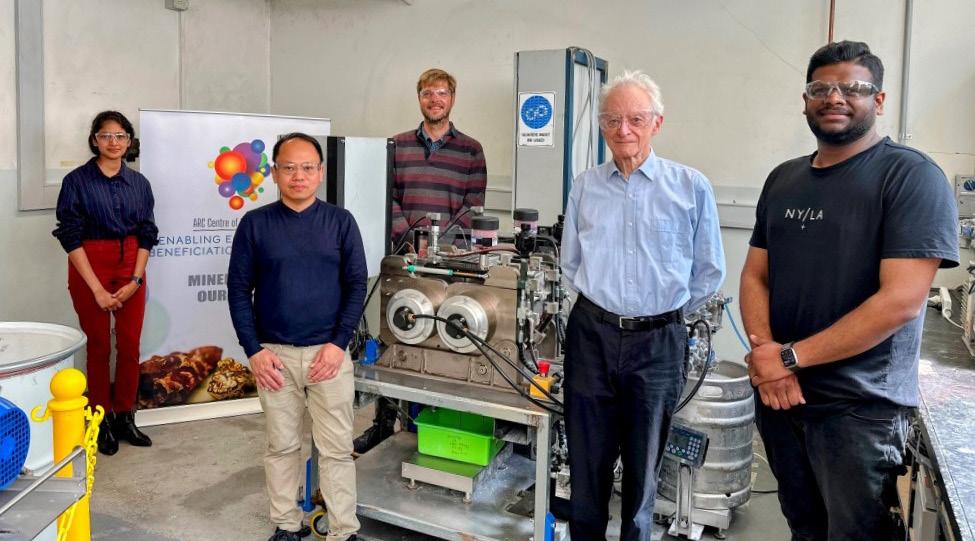
29
Above: PhD Azeez Aregbe (UOM). Right: ECR Dr Nilanka Ekanayake, Technican Raul Cavalida, CI A/Prof Anthony Stickland, Prof Robin Batterham AO and PhD Sajid Hassan
The Sink-Hole Fluidiser (P16) (TRL 2.4)
Developed at UON, this technology was transferred to the Curtin node in 2023 to assess gold ores. This is a dry separation technology (i.e. no water used) producing sharp separations based on mineral density. The new technology goes beyond water reduction benefits during beneficiation. It predominantly uses upward flowing air and vibration to sort and separate mineral particles in the size range from 2-10 mm, by exploiting density differences between the gangue (waste) and mineral particles. A Discrete Element Model (DEM) was developed through 2023 providing an improved understanding of the novel separation mechanism ahead of the next stage of research. Further work is underway to better understand the granular physical phenomena enabling separation.
The NovaCell™ - Centre partner Jord International (TRL 5.5)
Jord International (Jord) has successfully delivered test work programs for both local and international clients for the NovaCell™, invented by L/Prof Graeme Jameson. Jord expects demand for test work to grow in 2024 and has secured a partnership with a commercial laboratory in Chile to meet

international testing demand. It is expected that by Q3/4 2024, this facility will support the test work requirements of clients in the Americas.
The first NovaCell™ pilot plant is housed in 20-foot shipping containers, for ease of transportation and mobilisation, and can be operated on a continuous basis at 2 tonnes per hour (tph) of solids. The design includes all the required pumping, tanks, and classification requirements, with a fully integrated process control system. The NovaCell™ pilot plant will soon be transported to an operating copper mine, where its performance in coarse particle flotation (CPF) will be investigated. The NovaCell™ pilot-scale metallurgical results will provide a good indication of the expected performance at full-scale. Thus, the early months of 2024 will be significant in validating the NovaCell™ technology and advancing the product to the final stages of commercialisation. Multiple clients have secured use of the NovaCell™ pilot plant leading to the need for Jord to build a second pilot plant.
Spreading the word to industry: Jord and Capstone Copper presented a paper investigating the potential impact of the NovaCell™ technology as a substitute to the existing technologies at Pinto Valley Mine, located in Arizona, USA. The findings suggested a 27% increase in copper production and a 15% reduction in carbon emissions per tonne of copper. Pinto Valley mine is one of the locations where the NovaCell™ pilot plant will be trialled.
The XtractOre™ - Jord International (TRL 5.0)
After extensive research at a laboratory scale, the first full-scale demonstration plant was constructed and commissioned during 2023 by Jord and UON, which attracted funds from The Australian Coal Industry’s Research Program (ACARP). The XtractOre™ technology is poised to deliver a 10- to 100-fold increase in the speed of fine particle separation, using a concentrated water in oil emulsion as a binder. The expected benefit to mineral processing is a step change increase in the grade and recovery of valuable minerals, including substantial capital expenditure (CapEx) savings due to the substantially reduced footprint.
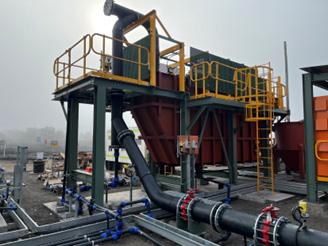



XtractOre™ emulsion
binder production unit for 5 m3/h
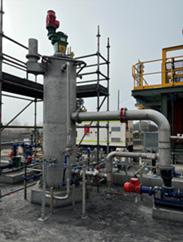 NovaCell™ pilot plant in Jord International’s fabrication warehouse
NovaCell™ pilot plant in Jord International’s fabrication warehouse
30
XtractOre™ full-scale facility showing the main emulsification pipe and orifice plate and trough designed for 500 m3/h
The REFLUX™ Flotation Cell (RFC) – trial and life cycle data analysis underwayFLSmidth (TRL 7.0)
Developed jointly by FLSmidth and COEMinerals, the RFC has undergone full-scale trials in Australia and Europe. The technology was recently launched as a commercial product, attracting a 2023 Mining Magazine Technology and Innovation Award.
As shared by FLSmidth: Initial work by L/Prof Kevin Galvin and his team took the RFC from concept to pilot scale, and FLSmidth’s support enabled the technology to be scaled-up for production, with large-scale designs completed for onsite trials. One such trial is currently underway at a copper concentrator, where an 850mm-diameter RFC850 is treating 60 m 3/h of scavenger feed material. That is about three times the throughput rate of an equivalently sized conventional flotation machine. Testing is being performed in a self-contained system that was designed and built by FLSmidth. It comprises feed and overflow tanks with associated feed, concentrate, and tailings pumps. Commercially available industrial samplers are employed to sample the streams entering and leaving the RFC.
Results have already demonstrated the kinetics of the industrial system are better than the pilotscale system at equivalent or better grades and
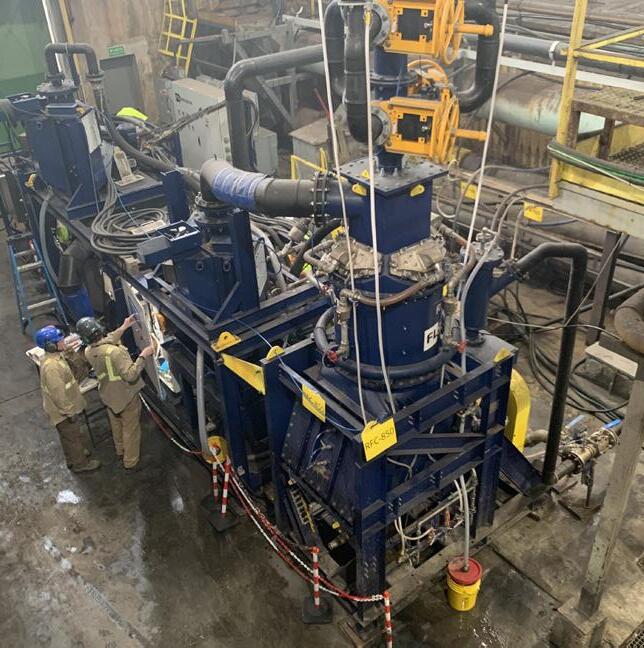
recoveries. In comparison to conventional fullscale equipment, FLSmidth data shows a ten-fold reduction in required retention time, resulting in a smaller footprint and decreased CapEx and operating expenditure (OpEx). FLSmidth is currently undertaking detailed Life Cycle Analysis as part of a European Institute of Innovation and Technology (EIT) project to confirm the strong performance of the RFC re: consuming less energy, water and air. The project supports the transition to more sustainable mineral processing operations consistent with FLSmidth’s MissionZero.
The Graviton – FLSmidth (TRL 4.8)
The Graviton incorporates REFLUX® Classifier (RC™) modules in a spinning centrifuge to achieve powerful desliming. The Graviton consists of distinct 3D-printed modular units, which are rotated at high speed in a large centrifuge. This new technology and system have been investigated under continuous steady state conditions, demonstrating the potential for precision separations with significant capacity. The throughput advantage of the inclined channels and G-forces multiply. One of the potential uses for the Graviton is in accessing minerals stored in tailings. Its ability to remove the ultrafine clays with minimal loss of the valuable minerals addresses a critical industry challenge. The technology inventor is L/Prof Kevin Galvin. A new
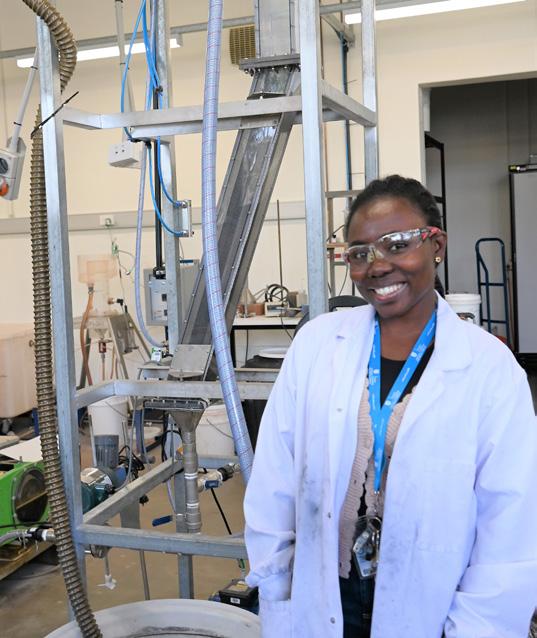
prototype is currently being developed by FLSmidth for trialling in 2024, and a new research proposal to support up-scaling by a major iron ore producer in the Pilbara is currently under consideration.
The coarseAIR™ - FLSmidth (TRL 4.6)
The coarseAIR™ is a low turbulence, aerated fluidised bed separator combined with lamella plates based on the REFLUX® Classifier system, offering improved flotation recovery at coarser grind sizes up to ~ 650 micron, enabling an increase in target grind size, while delivering reductions in energy and water consumption. The coarse particle flotation and regrind circuit enables upstream and downstream unit operations to perform in more efficient ways. Optimised grinding is possible, ensuring application of energy input only to where it is needed, allowing for the rejection of barren oversize material that does not require fine grinding. No mechanical energy input is required, and along with an order of magnitude reduction in flotation air requirements, energy demand for the flotation circuit itself is also reduced. Additionally, coarser grind size facilitates dewatering and allows markedly more efficient water recovery. The technology inventor is L/Prof Kevin Galvin.

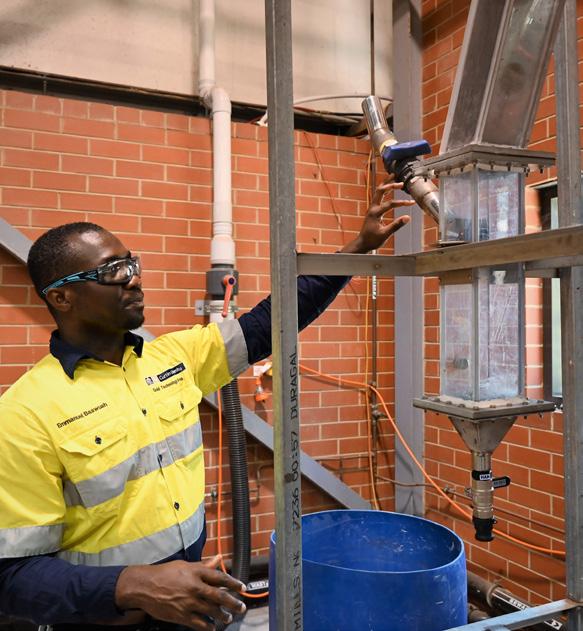

31
Left to Right: RFC test devices at UniSA (PhD Linda Ayedzi); UQ (Dr Wonder Chimonyo and PhD Jiarui Chen); and an RC fractionator at Curtin (Dr Emmanual Baawuah)
There are now RFC test devices installed at the Centre’s UON, UQ and UniSA nodes and a RC fractionator at the Curtin node.
Full-scale RFC trial at a copper concentrator
The REFLUX® Classifier (RC™) - FLSmidth (TRL 9.0)
The REFLUX® Classifier is an industrial machine that separates fine mineral particles based on either density or size, improving the efficiency of the process. This system combines a conventional fluidised bed with a system of inclined channels to achieve enhanced rates of segregation of highdensity particles, and enhanced conveying of low-density particles. More than 240 RCTMs have been sold into more than fifteen countries with installed capacity estimated to be about 100 million tonnes per annum. The technology enables the global mining and mineral processing industry to save billions of dollars and deliver greater water and energy efficiency while reducing the amount of minerals lost to waste. The RC™ inventor is L/Prof Kevin Galvin.

Improving the efficiency of downcomer technologies
The Concorde Cell™ - Metso (TRL 7.0)
A relatively new technology invented by CI L/Prof Graeme Jameson, the Concorde Cell™, is designed to help flotation circuits overcome multiple challenges, achieving fine particle recovery by forcing an aerated slurry through a nozzle to produce a shockwave. This device recovers previously ‘unachievable’ fine and ultra-fine particles. The patented Concorde technology can be applied to complex and previously inaccessible ore types within various mineral processing flowsheets (e.g. gold, copper, nickel, platinum, silver, lead, zinc and molybdenum) 4
The Jameson™ Cell - Glencore Technology (TRL 9.0)
The UQ node is poised to undertake fundamental studies of The Jameson™ Cell technology to better understand recovery drivers, with a view to improving fine particle flotation.
The REFLUXTM
Concentrating Classifier (RCCTM), which is derived from the RC, may undergo a trial as part of the up-scaling of a COEMinerals study on cassiterite recovery from a tailings dam in NSW. This technology attracted the 2023 Mining Technology Excellence Award for the best new product launch. A new provisional patent (lodged by UON in 2023) will feature in a further advancement of this work.
Members of the UQ node working in the Julius Kruttschnitt Mineral Research Centre (JKMRC) surveyed the Concorde Cell™ retrofit at Newmont in 2023, with the aim of benchmarking and comparing performance to conventional cells. The data is currently being analysed and an operational strategy, with recommendations to optimise technology performance, will be delivered in early 2024.


4 https://www.metso.com/portfolio/concorde-cell/ 5 & 6 https://tinyurl.com/2ppsphe5
The Jameson™ Cell is an innovative flotation technology utilising a plunging liquid jet with air entrainment to achieve rapid flotation without mechanical agitation. There are already more than 400 Jameson™ Cells installed and in operation in ~30 countries around the world, including Zambia, the Democratic Republic of Congo, Australia, South America, and the USA 5. “The Mount Isa Copper Concentrator has operated two Jameson™ Cells in preflotation and slag cleaner duties for more than 15 years. In 2015 three 18 downcomer Jameson™ Cells replaced the cleaner circuit resulting in significant improvements in operability and maintenance, translating to improved recovery at a reduced cost.” 6 It is estimated that the Jameson™ Cell has netted Australia roughly $51 billion 7 in exports. The technology inventor is L/Prof Graeme Jameson.
7 https://www.newcastle.edu.au/profile/graeme-jameson#:~:text=His%20most%20famous%20invention%2C%20 the,roughly%20%2451%20billion%20in%20exports

32
THE COEMINERALS TRL FRAMEWORK
Originally developed by NASA 8, the Technology Readiness Levels (TRL) approach has been widely adopted in various industries including aerospace, defence and emerging technologies.. The NASA TRL scale consists of nine levels. As a technology progresses through the TRL stages, developmental costs tend to increase exponentially.
Below is a graphic overview of the Technology Readiness Level scale 9 developed by NASA.

8 https://www.nasa.gov/directorates/somd/space-communications-navigation-program/technology-readiness-levels/ 9 https://doi.org/10.1016/j.actaastro.2009.03.058

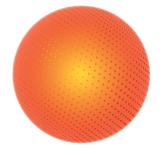

33
COEMinerals products and processes TRL Framework
Prof Peter Scales from COEMinerals has adapted the NASA TRL framework to ensure consideration of the critical components to move to the point of commercialisation.
Table 1: Explains The COEMinerals TRL Framework scoring for the first 7 TRL stages.
Feasibility
Lab level conceptual feasibility
Demonstration Research on conceptual product or process
End user relevant tests
Lab scale demonstration of concept
Base level CapEx/OpEx assessment Economic feasibility at scale Full CapEx/OpEx on site Multi-unit manufacturing stage gate
Experimental pilot
Demonstration pilot Industry pilot at > 1/3 scale Full scale unit operational
Partners Partner assessment
Stakeholders/ End Users
Implementation
End user assessment
Mode of deployment assessed
Partners interviewed
End users/ stakeholders engaged
Deployment options tested

Partners selected and agreements signed
End users/ stakeholders agreements signed
Site consideration and suitability


Cash and in-kind input into demonstration pilot
Cash and in-kind input into demonstration pilot
Site engagement agreements
Manufacture of industry pilot including cash and in-kind
Cash and in-kind input into feasibility assessment
Site deployment of industryscale pilot
Manufacture and run industry-scale demonstration
Cash and in-kind input into full-scale implementation
Full scale site implementation

34
Criterion 1-2 3 4 5 6 7
PhD Brady Wright (UON) conducting an experiment on a RFC
The COEMinerals TRL Framework
Application of The COEMinerals TRL Framework to Centre technologies
Table 2: Shows detailed progression of Centre technologies against The COEMinerals TRL Framework (from 2020 to 2023).
Concept proven on a limited laboratory scale. Numerical modelling of fluidised bed dynamics is being run in tandem to ultimately guide an optimised design
Working with commercialisation partner FLSmidth towards implementation on industrial sites of end users
Collaboration with L/Prof Graeme Jameson (UON) and Jord International, which holds exclusive license
Concorde is being commercialised by Metso. An installation has been completed in a nickel operation and some selected Jameson™ Cells have been retrofitted. Industry is taking a “wait and see” attitude towards the technology so uptake is not as yet widespread


35 Technology Criterion 2020/21 TRL level 2022 TRL level 2023 TRL level Comment Sink-Hole Fluidiser Feasibility 2 2 2.2
Demonstration 3 4 4 Partners 2 2 3 Stakeholders/End Users 3 3 3 Implementation 0 0 0 OVERALL 2.0 2.2 2.4 coarseAIRTM Feasibility 4 4 4
Demonstration 3 5 5 Partners 4 4 5 Stakeholders/End Users 3 4 5 Implementation 4 4 4 OVERALL 3.6 4.2 4.6 NovaCellTM Feasibility 4 4 4
Demonstration 5 7 7 Partners 2 4 5 Stakeholders/End Users 3 5 5.2 Implementation 4 6 6.2 OVERALL 3.6 5.2 5.5 Concorde CellTM Feasibility 4 4 7
Demonstration 5 6.5 7 Partners 4 4 7 Stakeholders/End Users 4 6 7 Implementation 6 7 7 OVERALL 4.6 5.5 7
XtractOreTM built on a mine site to demonstrate scalability at 500
Successful demonstration of technology at full scale in a coal application.
is the commercialisation partner
Operational laboratory system treating 100 L/min; primary application in desliming with application in the iron ore and other critical minerals areas
Project BHP’s ‘Think and Act Differently’ team completed demonstrating performance for fine, clay-rich mineral tailings


2020/21 TRL level 2022 TRL level 2023 TRL level Comment XtractOreTM Feasibility 3 3 4 Full-scale
3/h Demonstration 4 5 5 Partners 3 4 5 Stakeholders/End Users 3 6 6 Implementation 3 6 5 OVERALL 3.2 4.8 5 REFLUXTM Flotation Cell (RFC) Feasibility 3 3.5 7
Technology Criterion
m
Demonstration 4 7 7 Partners 4 4 7 Stakeholders/End Users 4 4 7 Implementation 4 6 7 OVERALL 3.8 4.9 7 Graviton Feasibility 3 3 4
FLSmidth
Demonstration 4 5 5 Partners 4 5 5 Stakeholders/End Users 3 4 5 Implementation 2 4 5 OVERALL 3.2 4.2 4.8 High Pressure Dewatering Rolls (HPDR) Feasibility 2 3.5 3.5
Demonstration 3 4 4.5 Partners 3 3 3 Stakeholders/End Users 2 4 4 Implementation 2 4 4 OVERALL 3.2 3.7 3.8 Novel pelletiser for dewatering Feasibility 1 2 2 Apparatus for continuous operation recently developed Demonstration 1 3 3 Partners 1 1 1 Stakeholders/End Users 1 2 2 Implementation 1 1 1 OVERALL 1 1.8 1.8

BUILDING A GLOBAL REPUTATION FOR EXCELLENCE

Elevating Australian science, education and innovation
The Centre is fast-gaining industry and academic attention and a reputation as world leading in the field of mineral beneficiation research, through novel process technology and invention.
A highlight of the year was the Centre’s signature event in Newcastle, Australia: The International Flotation Symposium . In July ‘23, COEMinerals welcomed more than 130 Australian and International experts in the field of Flotation to attend 24 presentations over two days, by invitation only, drawn from leading researchers from Australia, Canada, Chile, China, Finland, France, Germany, South Africa and the USA. This event celebrated the achievements of Centre CI, L/Prof Graeme Jameson AO, (UON) a renowned researcher in the field of flotation and acclaimed inventor of the Jameson™ Cell technology and a leading contributor to
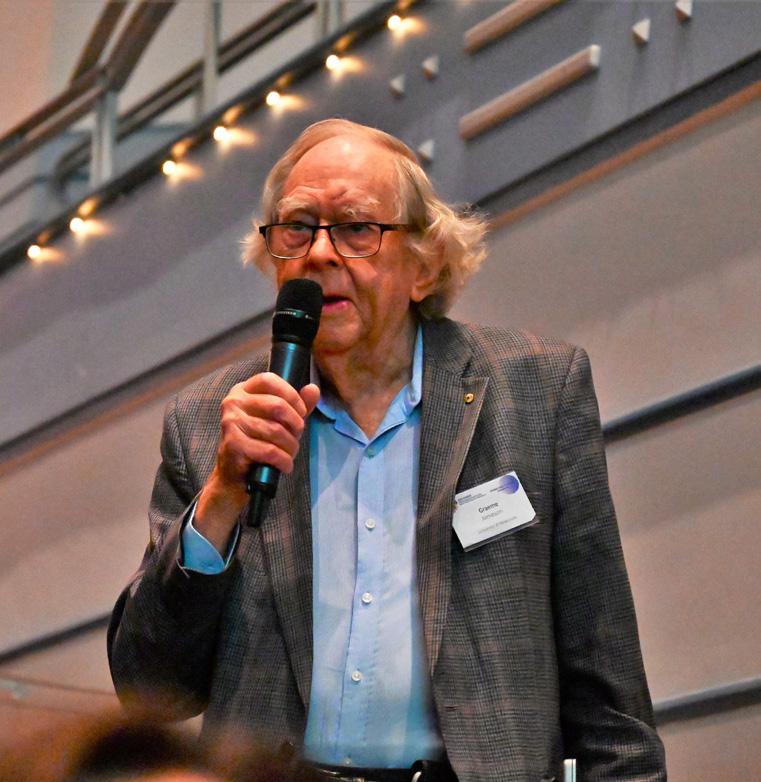
science, innovation, education and the minerals industry whose impact can be measured in billions of dollars.
The Australian Research Council (ARC)’s Executive Director, Engineering, Information and Computing Sciences Prof Steve Weller opened Day 2 of the Symposium, and the Pro Vice-Chancellor, College of Engineering, Science and Environment at UON, Prof Craig Simmons, and Dean of Engineering at UON, Prof Dianne Wiley, also attended to engage with Centre researchers.
Centre Director L/Prof Kevin Galvin shared: “The event, chaired by two Centre PhD students, Siân Parkes and Joshua Starrett, delivered wonderful engagement and knowledge transfer between academia, industry, PhDs and ECRs, and across generations. Events like this connect our student researchers with a network of leaders and innovators, building their understanding and equipping them to be next-generation sector leaders.”
Centre Industry Partner
Jord International General Manager, Resources Kevin Barber shared: “The Jord team participates in many Centre events, and a highlight of 2023 was our involvement in the ‘International Flotation
Symposium’. The event celebrated the technology and innovation achievements of L/Prof Graeme Jameson, with updates on the state of the art by many other science and industry experts in the field of flotation including Centre researchers. It was great to contribute insights and learnings, as well as tap into the wisdom in the room. You could really feel people’s passion for pushing forward with innovative and practical solutions to improve mineral processing here in Australia, and around the world. It is exciting to feel the growing industry interest in, and real momentum for change as the mining sector adopts more efficient and effective technology and processes. We are very proud to be a part of that transformative change.”
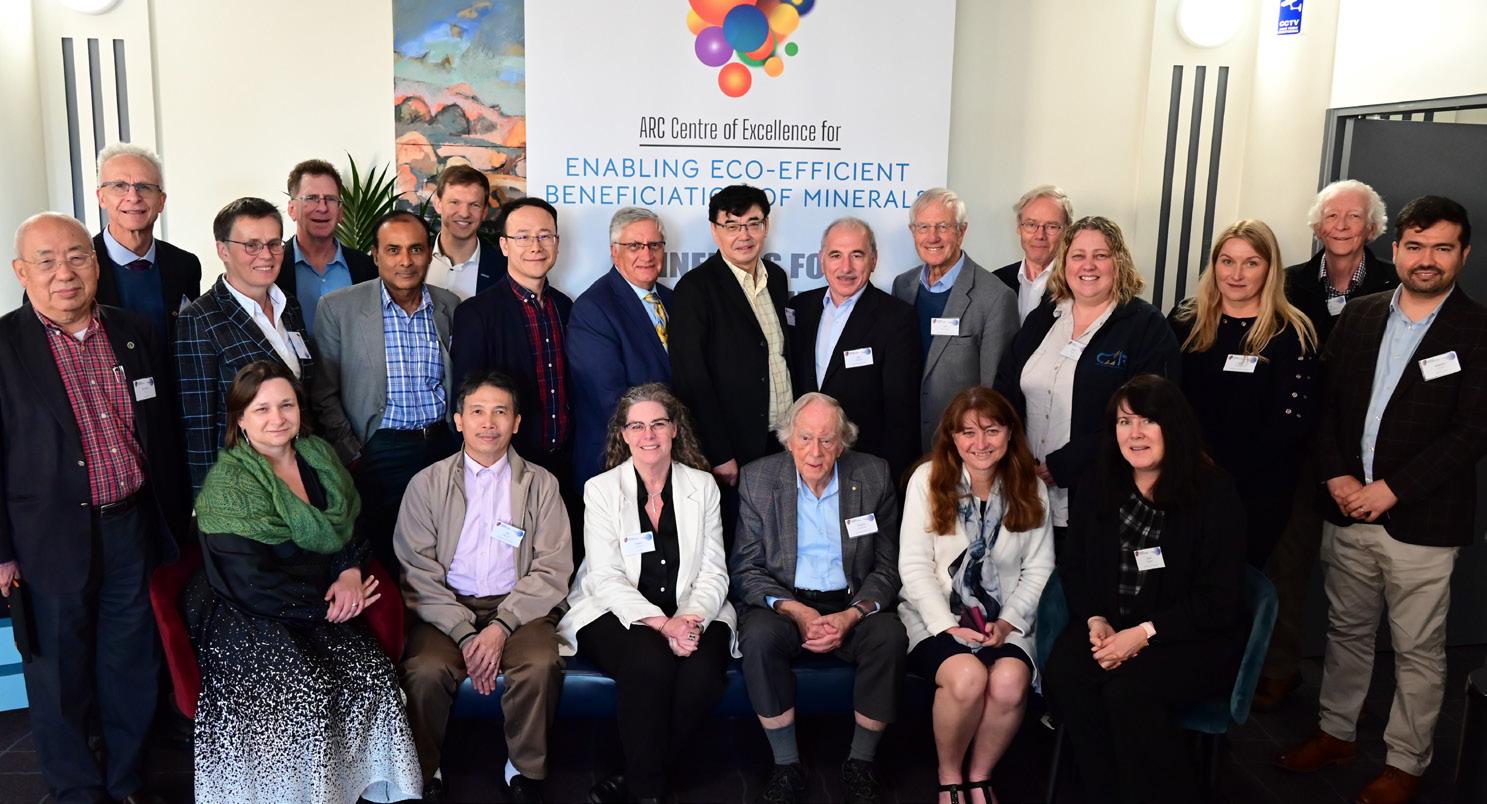
International Flotation Symposium speakers from left to right: Roe-Hoan Yoon, Kevin Galvin, Kerstin Eckert, Liza Forbes, George Franks, Barun Gorain, Martin Rudolph, Anh Nguyen, Zhiyong Gao, Virginia Lawson, Osvaldo Bascur, Zhenghe Xu, Graeme Jameson, Lev Filippov, Cyril O’Connor, Kym Runge, Juan Yianatos, Kirsten Corin, Ronel Kappes, Marta Krasowska, Tim Napier-Munn, Alejandro Yanez, with Seher Ata, Sherwin Morgan and Kari Heiskanen absent from photo.
37
L/Prof Graeme Jameson AO (UON)


The Centre’s growing global reputation for innovation and research excellence was evident at ‘Flotation 23’ in Cape Town, South Africa (Nov 23). This was the largest Minerals Engineering International (MEI) Flotation conference ever, 336 delegates from 32 countries, with 96 presentations, meaning it was very difficult to secure a presentation slot. The meeting, held every 2 years
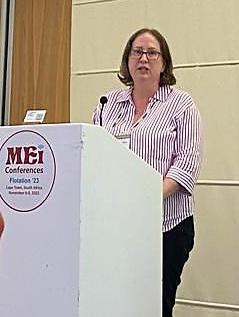
is recognised as the leading conference on flotation globally. Of the 24 presentations on Day 1, which focused on flotation technologies, more than half involved Centre members and partners, or researchers from outside our Centre reporting on the Centre’s flotation technologies.
L/Prof Graeme Jameson delivered the opening keynote address for the conference
Metso gave two presentations on the performance of the Concorde Cell™ (Jamesoninvented technology, licensed to Metso)
Centre Partner FLSmidth (USA) shared results from lab, pilot and industrial testing of the REFLUX™ Flotation Cell (RFC)
Centre researcher Dr Subhasish Mitra presented on hydrodynamic phenomena in the RFC
PhD Siân Parkes presented new perspectives on flotation applying the RFC to quantify the kinetics of ‘true flotation’
Researchers from Imperial College presented their work on the Centre’s coarseAIR™ technology, followed by 2 COEMinerals presentations on fluidised bed flotation
Centre Partner FLSmidth gave two presentations on mechanical flotation cells

Centre Director L/Prof Kevin Galvin demonstrated efficacy of the RFC in recovery of nickel from tailings
PhD Luke Crompton presented on a new method to assess coarse particle flotation with reference to the coarseAIR™ from the Centre
Researcher Lizette Verster (UQ) speaking at Flotation 23 conference

https://min-eng.blogspot.com/search/label/Flotation%20%2723
The Centre has also contributed to the organisation of multiple events including international meetings across diverse fields in 2023 including: Australian Colloid and Interface Symposium, the International Association of Colloid and Interface Scientists (IACIS), The 34th Australian Colloid and Surface Science Student Conference, the Korea-Australia Rheology Conference (KARC), CRITCON and AIChE Annual Meeting.
Flotation ‘23 presenters: UON PhDs Syam Murali Mohan, Noyan Palabiyik, Luke Crompton L/Prof Kevin Galvin, UON PhD Siân Parkes and ECR Dr Wonder Chimonyo (UQ)

38
Jord International team Lonn Cooper, Sherwin Morgan, and Kevin Barber with L/Prof Graeme Jameson AO
Lance Christodoulou (centre) with FLSmidth colleagues1
Research collaboration with leading institutions
The Centre’s connections and sphere of influence is growing on a global scale.
The Centre has been building strong ties with members of the Helmholtz Institute in Freiberg (HIF) and Helmholtz-Zentrum Dresden-Rossendorf (HZDR) in Germany. Their research in the field of mineral processing and in battery recycling is well recognised as perhaps the most significant group in Europe for its capacity and excellence. Currently they are involved in a €5.4M 2 European Institute of Innovation and Technology (EIT Raw Materials project) grant on the RFC with Centre partner FLSmidth and UON 3. The close collaborations have led to Centre involvement in three international flotation symposiums on the RFC (2022 in Newcastle, Australia – hosted by COEMinerals; 2023 in Dresden, Germany and a 2024 event to be held in Norway).
The project involves Dr Martin Rudolph, Head of Department of Processing, for Research Technology (HIF), who is the member of Centre’s IAP and Prof Kerstin Eckert, HZDR and Technische Universität Dresden (TUD) and others.
Dr Rudolph and Prof Eckert have visited Centre nodes, and attended and presented at multiple Centre events including the 2022 ‘International RFC Upscaling Symposium’; the 2023 Centre Annual Conference and the 2023 International Flotation Symposium, as well as being directly involved in two Deutscher Akademischer Austauschdienst (DAAD) Australia-Germany research funding grants with COEMinerals (in 2021 and 2023).
Many in-person team visits have occurred between the institutions in Australia and in Germany, commencing with L/Prof Kevin Galvin prior to the Centre commencement, and thereafter A/Prof Liza Forbes (UQ), Dr Mahshid Firouzi (UON), ECR Dr Piotr Pawliszak (UniSA) and L/Prof Graeme Jameson. Joint papers have also been produced. Other productive collaborations include:
CI A/Prof Liza Forbes’ (UQ) visit in 2023 resulted in the submission of a joint grant application between CI Dr Susana Brito e Abreu (UQ) and Dr Katrin Pollman (HIF)
ECR Dr Peipei Wang (UON) gained a related Australia-Germany Joint Research Cooperation Scheme Funding grant, with research to commence in 2024. She will also attend the Norway RFC symposium and visit Dresden/ Freiberg in April 2024
ECR Dr Piotr
Pawliszak (UniSA)
with Dr Martin
Rudolph in Dresden

PhD Siân Parkes (UON) spent time in Freiberg and Dresden undertaking research across two visits, including attending the RFC symposium in Dresden. Her project work in 2023 was on recycling of lithium-ion batteries and semiconductors. This work involved RAFT polymers from Monash, focusing on metal recovery and upgrade
L/Prof Kevin Galvin contributed to the HIF 10 th anniversary event with a zoom presentation in 2023
L/Prof Kevin Galvin has been invited to give a plenary lecture at the Gas-Liquid-Solid (GLS16) conference in Dresden in 2024
2https://eit.europa.eu/news-events/news/eit-rawmaterials-grants-eur-54-million-flsmidth-led-mining-project
3https://eitrawmaterials.eu/project/rfc-upscaling/
There is also a close-working relationship between members from UOM node and Tohoku University, Institute of Multidisciplinary Research for Advanced Materials (IMRAM) and Okayama University of Science and Technology researchers in Japan, which has resulted in several joint journal publications. Further, multiple Centre members attended the Tohoku-Melbourne Joint Materials Workshop in Sendai Japan in 2023, where Assistant Prof Kizuku Kushimoto, a Centre AI, presented results of his work on understanding the role of particles in stabilising oil droplets in aqueous suspension (a topic he worked on while working at the UOM node for 6 months in 2022-2023). Event co-sponsor, the Centre for Mineral Processing and Metallurgy at Tohoku, is also closely aligned to the COEMinerals in terms of shared focus and aims. Commenting on the value of international student experiences to make in-person connections, CI Prof George Franks shared: “Students benefit from being exposed to world class research from Japan which inspires them to achieve at their highest level of scholarship.”


39
Research engagement with Australia’s National Science Agency: CSIRO
Monash: PhD Yuxi Liu (Monash) is collaborating with Centre AI Dr Ben Muir, CSIRO Centre Manager of the Rapid Automated Materials and Processing (RAMP) Centre, and CSIRO’s Automated Materials Discovery Team leader on a project (P50) which is seeking to synthesise polymers that target specific clays, such as bentonite and kaolinite, utilising the Chemspeed robot technology at CSIRO for optimising the synthesis.
“We are trying to flocculate fine clay particles and make them float or settle faster, which could help make mineral separation or waste recovery more efficient,” PhD Yuxi Liu shared, adding that utilising Chemspeed delivers time-efficiency: “In the time we normally do 2-3 polymerisations we can now do 12 to 48 reactions”.
Dr Muir’s work at CSIRO focuses on the development of automated research techniques for materials discovery, characterisation and formulation in various industries and research areas utilising robotic synthesis and characterisation equipment to rapidly speed up R&D outcomes in materials research used by CSIRO’s industry partners4.
Dr Muir explained how the Chemspeed device works: “The two biggest robots are called Chemspeed robots and they have an arm which picks up different tools so that arm can do different tasks. It can dispense solids or liquids. It can homogenise, sonify, we can do reactions at high temperature, low temperature and even centrifuge within the robots.” 5
University of Melbourne: PhD Daniel Dodoo (UOM) is working with Centre PI Dr Nathan Webster, Group Leader, Microbeam and Diffraction Characterisation Program CSIRO Mineral Resources
on developing X-ray and electron beam techniques that can be used to predict the floatability of talc gangue material in an ore before their separation from valuable minerals in an industrial flotation system. If solved, this leads to the design of more efficient processes through deep mineralogical and morphological understanding of the ore body gangue material.
Dr Webster commented, “CSIRO has a long and proud history in clay characterisation for Australia’s minerals industry which it is excited to be bringing to this project. The opportunity to work with bright and driven students such as Daniel brings new ideas and approaches for impact through the Centre and in our other research activities.”
Daniel Dodoo shared, “Clays and other impurities are increasing in low-grade ores, making it harder to recover the valuable minerals. I am excited because this study has the potential to illuminate the need for advanced exploratory techniques for characterising and understanding clays in low-grade materials prior to their beneficiation, which is a problem for mining industries around the world.”

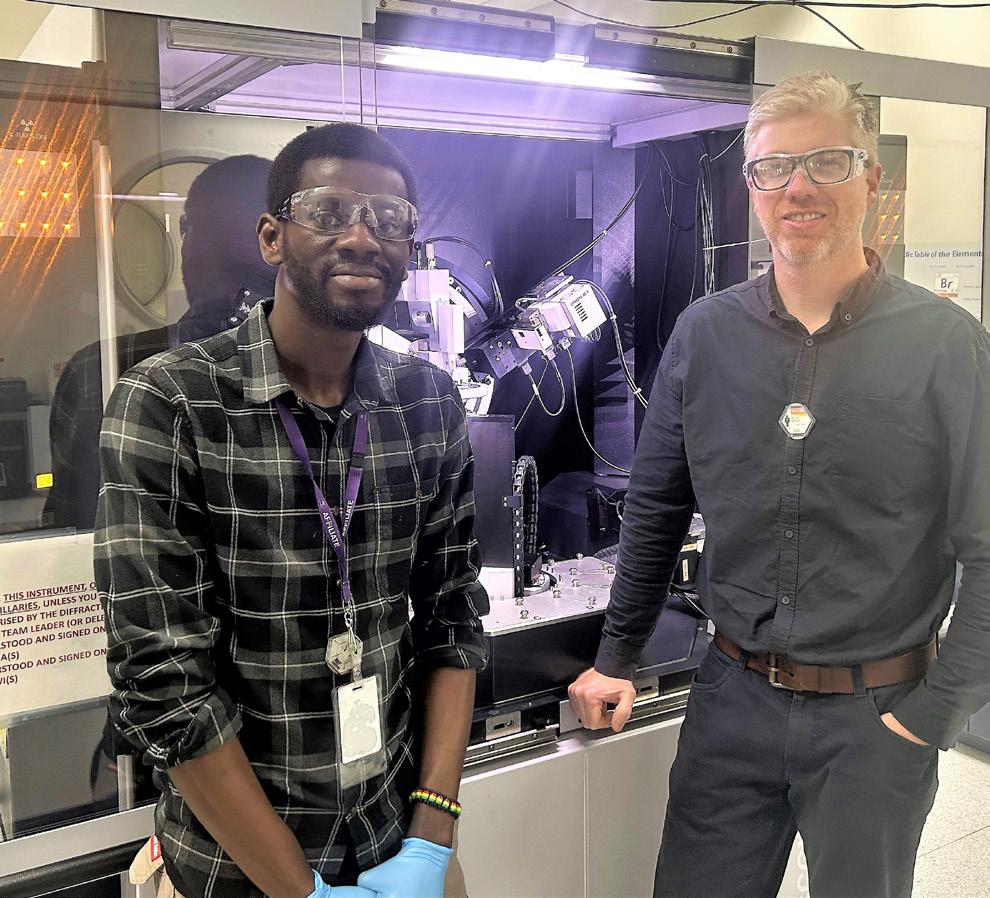
PhD Daniel Dodoo (UON) and PI Dr Nathan Webster, CSIRO
4 https://people.csiro.au/m/b/ben-muir
5 https://www.csiro.au/vimeo/inside-our-rapid-automated-materials-and-processing-centre/video-transcript
PhD Daniel Dodoo (UON) working on advanced X-ray diffractometer (XRD)































































Intractable problem-solving with industry
We have a close-working relationship with industry partners of the Centre particularly through invention, research, development, and commercialisation of technology.
In addition, we also engage with other organisations for applying Centre research to find solutions for problems that cannot be solved using conventional technology, so are deemed intractable with other organisations. Two examples follow:
West Cobar Metals (ASX: WC1)
West Cobar is a minerals exploration and development company focused on rare earths and battery minerals in Australia and the USA. In February 2023, West Cobar advised shareholders that beneficiation test work on representative ore samples from the Newmont deposit was underway, heralding COEMinerals ongoing work.
Speaking to the relationship in December 2022, West Cobar Metals Non-Executive Chairman, Rob Klug shared 5 , “The ARC Centre of Excellence for Enabling Eco-Efficient Beneficiation of Minerals will bring diverse high-level capability and expertise on mineralogy and beneficiation of the Salazar REE clays. The Centre is globally recognised for the development of transformational technologies for enabling a competitive and environmentally sustainable future for Australia’s minerals industry. We look forward to continuing our collaboration with them.”
QEM Limited (ASX:QEM)
A vanadium-bearing catalyst recycling project is being carried out on QEM’s behalf, utilising COEMinerals UQ members as part of wider Hydrometallurgy Research Laboratories/School of Chemical Engineering work. Clay-based deposit ore-samples are being studied at the UQ node to explore the potential of the Centre’s novel flotation techniques with the aim of exploring new ways to optimise the critical mineral Vanadium Pentoxide (V2O5) grade via fine-particle beneficiation. Vanadium is set to play a growing role in battery use, against the backdrop of a growing need for renewable, and other energy storage devices.
“The COEMinerals-QEM collaboration is an opportunity to reach across scientific disciplines, and beyond traditional mineral processing research, to develop cutting edge innovation and technologies that improve the recovery of critical metals. COEMinerals provides a great framework that enables us to build interdisciplinary collaborative networks across Australian research and industry communities,” CI A/Prof Liza Forbes (UQ).
Engaging with government
Centre research, novel technologies and new beneficiation techniques were showcased to multiple state, federal as well as international government and industry delegations/representatives in 2023, including:
The Sub Working Group (SWG) on Energy Efficiency with the Australia-Germany Energy Partnership, headed by Luke Menzel, CEO of the EEC and Susann Bollmann, Member of the Executive Board and Head of Projects and Financial Forum Energy Efficiency at the German Business Initiative for Energy Efficiency (DENEFF)
Australian Federal Minister for Industry and Science, The Hon. Ed Husic MP
Australian Federal Minister for Newcastle, Sharon Claydon MP
NSW Minister for Finance and Natural Resources, The Hon. Courtney Houssos MP
5chrome-extension://efaidnbmnnnibpcajpcglclefindmkaj/https://coeminerals.org.au/ uploads/West-Cobar-Metals-engages-COEMinerals-Media-Release-5-Dec-2022.pdf

Minister for Natural Resources of NSW, The Hon. Courtney Houssos, MLC

41
Senator Susan McDonald (Shadow Minister for Resources, Queensland)
Department for Industry, Innovation and Science (DIIS), S.A. State Chief Entrepreneur and Chief Scientist engagement
Germany Industry and Trade Delegation to UON node tour
S.A. Chamber of Mines and Energy, Mining and Extractives Committee engagement
AustMine, an association representing Australia’s Mining Engineering Technology Sector (METS) engagement
OZ Minerals, Smart Mining Networking presentation
Further, The Hon. Jason Clare provided a comment for inclusion in a COEMinerals media release
In addition, COEMinerals members contributed to:
International Copper Association Australia (ICAA) Roadmap to Zero Project and meetings with Australia’s Director of Industrial Energy Efficiency Policy
Critical Energy Minerals RD&D Capability Assessment
Western Australia’s ‘road map to decarbonise our state through integrated mineral carbonation
Provision of information to Australian Academy of Technological Sciences and Engineering (ATSE) that led to the inclusion of tin as a strategic metal
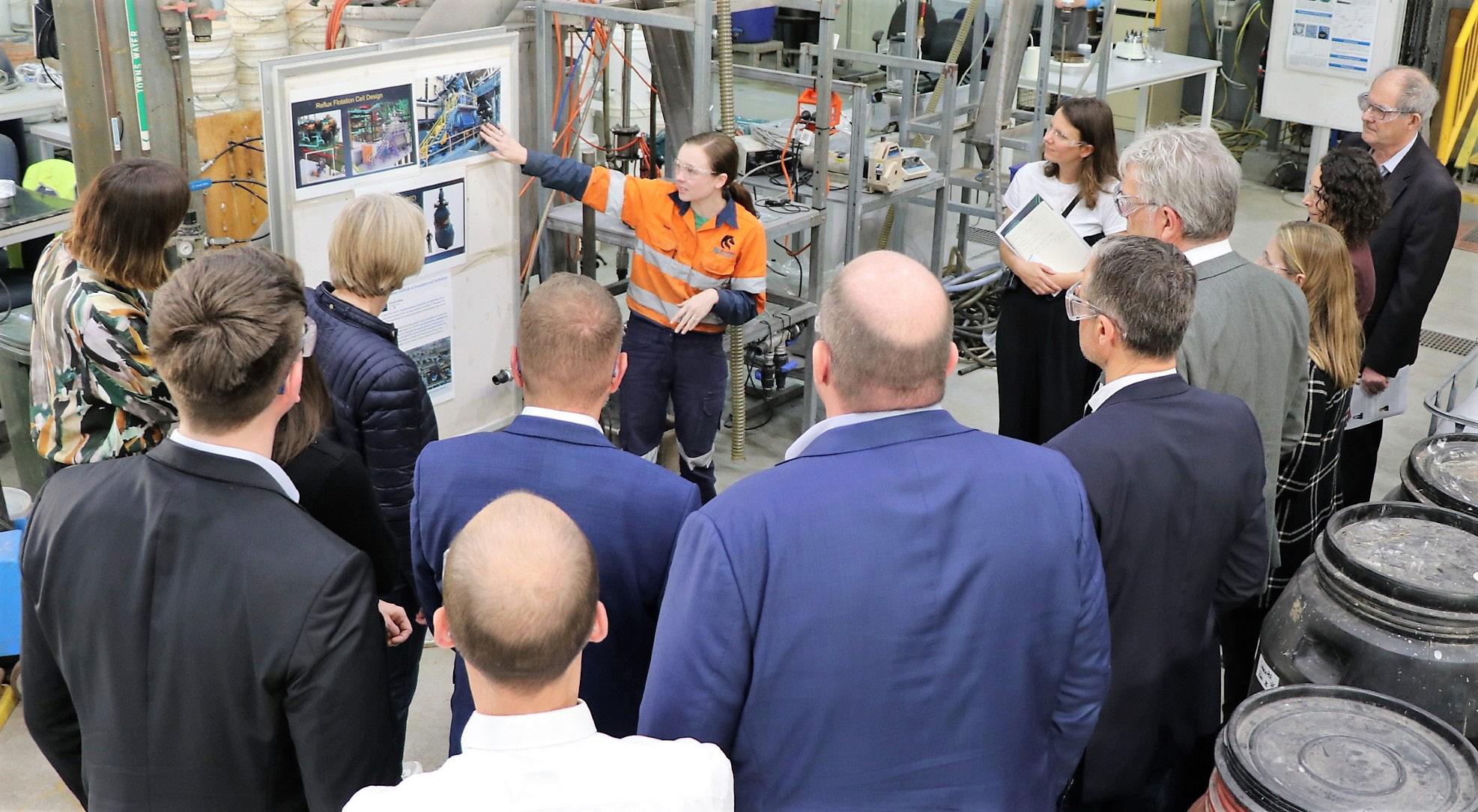
PhD Siân Parkes (UON) presenting Centre research and technology to a delegation

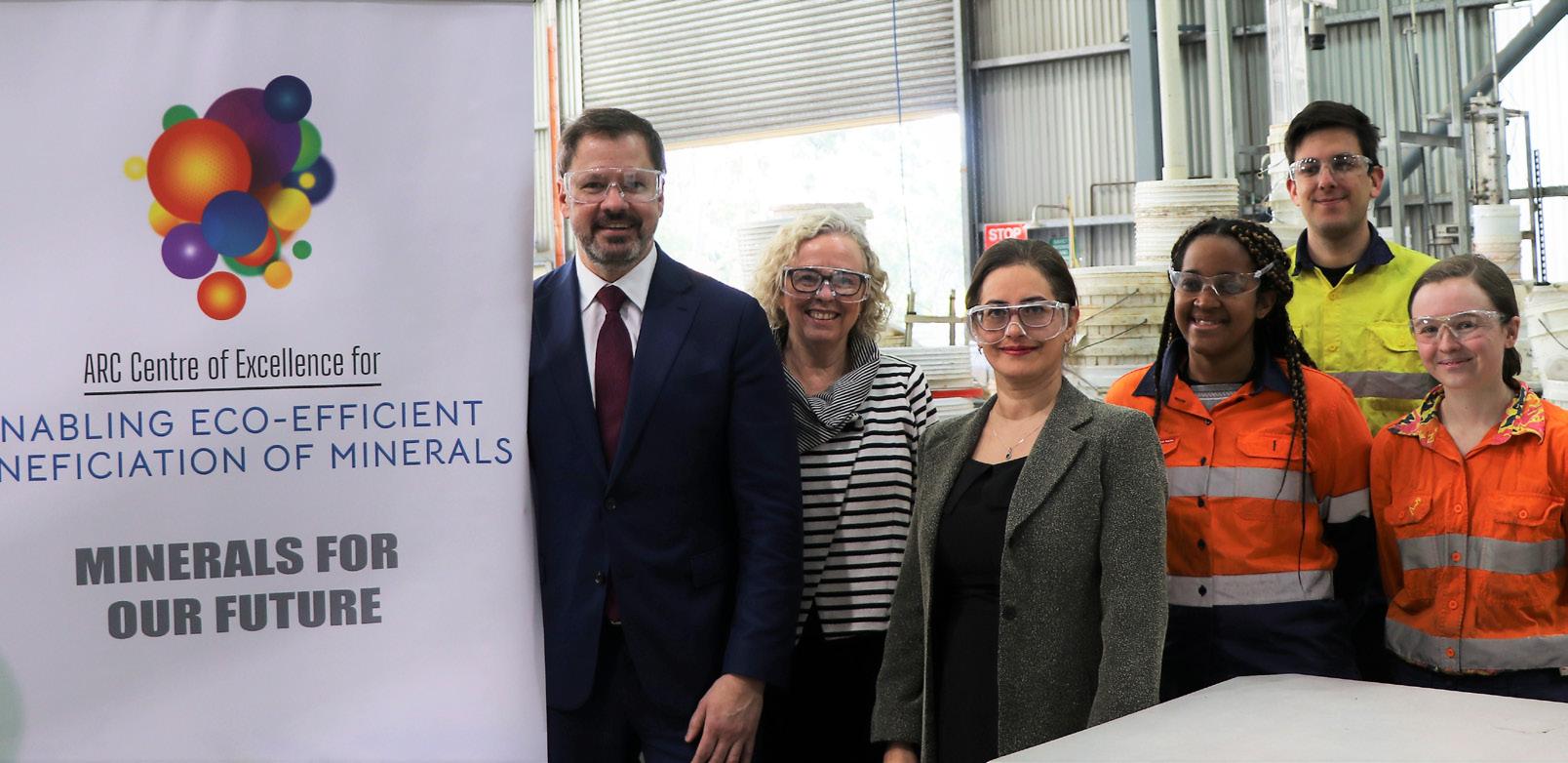
Minister for Industry and Science, The Hon. Ed Husic MP, and Ms Sharon Claydon MP (Member for Newcastle) visit UON Node
 Left to Right: CI A/Prof Elham Doroodchi, Ms Sharon Claydon MP (Member for Newcastle), Minister for Industry and Science, The Hon. Ed Husic MP, Centre COO Annemarie Fawkner and UON VC Prof Alex Zelinsky AO
Left to Right: CI A/Prof Elham Doroodchi, Ms Sharon Claydon MP (Member for Newcastle), Minister for Industry and Science, The Hon. Ed Husic MP, Centre COO Annemarie Fawkner and UON VC Prof Alex Zelinsky AO
Minerals are critical for Australia’s future. In December 2023 Australia updated its Critical Minerals and Strategic Materials lists to recognise the importance of a wider range minerals to modern technologies, economies and national security, and in support of Australia’s transition to net zero emissions. This further recognises the importance of minerals in enabling clean energy technologies, advanced manufacturing and other applications 1 .

1 https://www.industry.gov.au/publications/australias-critical-minerals-list-and-strategic-materials-list
43
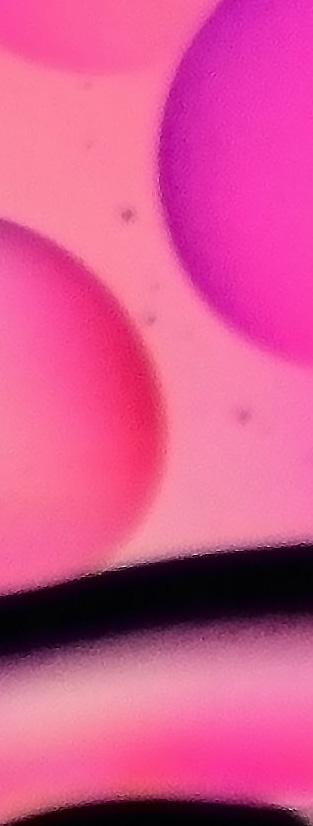


RESEARCH PROGRAMS
44
Program 1 Physics of Novel System Hydrodynamics Overview Program 1: Project Summaries 45 47 Program 2 Chemistry of Novel Hydrophobic and Selective interactions Overview Program 2: Project Summaries 59 61 Program 3 New Engineered Biopolymers and Synthetic Polymers Overview Program 3: Project Summaries 65 67 Strategic Evolution to Research Themes in 2024 Research Themes and 2024 Objectives 70 71
PROGRAM 1
PHYSICS OF NOVEL SYSTEM HYDRODYNAMICS
Research Program Leaders
Professor Bill Skinner, Laureate Professor Kevin Galvin and Laureate Professor Graeme Jameson
Overview
Program 1 comprises 32 projects across four subprograms, aimed at reducing energy and water consumption, while maximising the recovery of the resource to deliver high-grade product. Additionally, characterisation tools are being developed to investigate mineral properties and separation processes at enhanced levels of detail.
2023 has been a year of high productivity, allowing closer focus on achieving desired outcomes and refinement of key questions leading into the second half of the Centre’s life. A significant impact has been made in supporting several new technological innovations, via deep investigations into analytical challenges, basic processes and mechanisms and relating these outcomes to practical performance. Characterising bulk and surface properties of minerals (Projects 1-8)
High Resolution X-ray Microtomography (HRXMT) analysis methodology has been developed to enable highly accurate segmentation of 3D images and the measurement of surface-exposed grain perimeter and surface area and correlations with flotation performance
New methods have been developed, combining
X-ray and electron microscopy techniques, to correlate composition, structure and morphology of clays, with floatability. This leads to the potential to predict flotation behaviour of these gangue minerals to inform rejection
Installation of a new, high-compression/shear crusher – Gyratory Rolls Crusher (GRolls®) – to enable enhanced grain boundary breakage (dry and wet) at reduced energy consumption
Pre-concentration through coarse particle beneficiation to reduce the need for grinding (Projects 9-18)
New experimental evidence shows that the bubble-particle detachment involves bubble necking, detachment at the bubble neck, varying contact angle, wetting kinetics and shrinking of triple contact area, dynamic adsorption/desorption of surfactants during detachment, and deviation from the YoungLaplace theory of capillarity
The capability to synthesise controlled liberation, coarse composite particles has provided a reliable probe for monitoring particle behaviour in any processing environment, allowing technology performance comparison
An innovative technique has been developed to observe the interaction between particles and bubble clusters, via a cryogenic, X-ray CT method
New research has begun in predicting the concentration profile of particles in a flotation column. This work continues to support the NovaCell™ coarse particle flotations cell being commercialised by Jord International. A NovaCell™ Pilot Plant is due to engage in site trials in January 2024
Following work on establishing coarse particle flotation in the coarseAIR™ (a variation of the REFLUX® Classifier (RC™)), a new diagnostic for assessing the performance of coarse particle flotation technologies in general was developed
Fine particle separations to achieve faster and more efficient separations (Projects 19-27)
During 2023 the ConcordeTM technology improved bubble/fine particle interaction in a shockwave at elevated pressure. The system has been retrofitted to an existing industrial cell. The retrofit performed with high recoveries and good selectivity
The REFLUX™ Flotation Cell (RFC) has continued to be effective in reducing fine gangue mineral recovery, with successful research on fine nickel (Ni) ore and tailings as feeds, moving to fine copper (Cu) and molybdenum (Mo) ores. Pilot-scale unit analysis of hydrodynamic characteristics have also been undertaken, quantifying a range of parameters impacting the transition from the ‘bubbly’ zone to a froth product



45
A full-scale, water-in-oil emulsion agglomeration facility has been constructed and commissioned. Optimisation strategies are to be investigated in the next phase
The RCTM, which uses inclined channels, has delivered significant impact with manganese ores.
Solid-liquid separations to eliminate tailings dams (Projects 28-32)
Successful design and construction of the prototype High Pressure Dewatering Rolls (HPDR), specifically for the dewatering of fine mineral tailings. The new device has been successfully demonstrated on Cu and Ni tailings and limestone, delivering unprecedented high solids concentration products
Oil emulsions have been successfully used for aggregation/pelletising in dewatering. A continuous pelletisation process has now been demonstrated employing an upward-flowing screw pelletiser
Pilot and laboratory-scale experiments have demonstrated the synergistic impact of reagent choice and applied G-forces in enhancing the dewatering of concentrated suspensions

Personnel involved in Program 1 for 2023
Chief Investigators
Prof Chris Aldrich, Curtin
Prof Vishnu Pareek, Curtin
A/Prof Seher Ata, UNSW
A/Prof Anthony Stickland, UOM
Prof George Franks, UOM
Dr Eirini Goudeli, UOM
L/Prof Kevin Galvin, UON
A/Prof Elham Doroodchi, UON
Prof Grant Webber, UON
Prof Geoffrey Evans, UON
Dr Peter Ireland, UON
L/Prof Graeme Jameson, UON
Prof Alister Page, UON
Prof Ken Williams, UON
Dr Mahshid Firouzi, UON
Dr Susana Brito e Abreu, UQ
A/Prof Liza Forbes, UQ
Prof Anh Nguyen, UQ
Prof Yongjun Peng, UQ
A/Prof Kym Runge, UQ
A/Prof Mohsen Yahyaei, UQ
Prof Bill Skinner, UniSA
Prof Marta Krasowska, UniSA
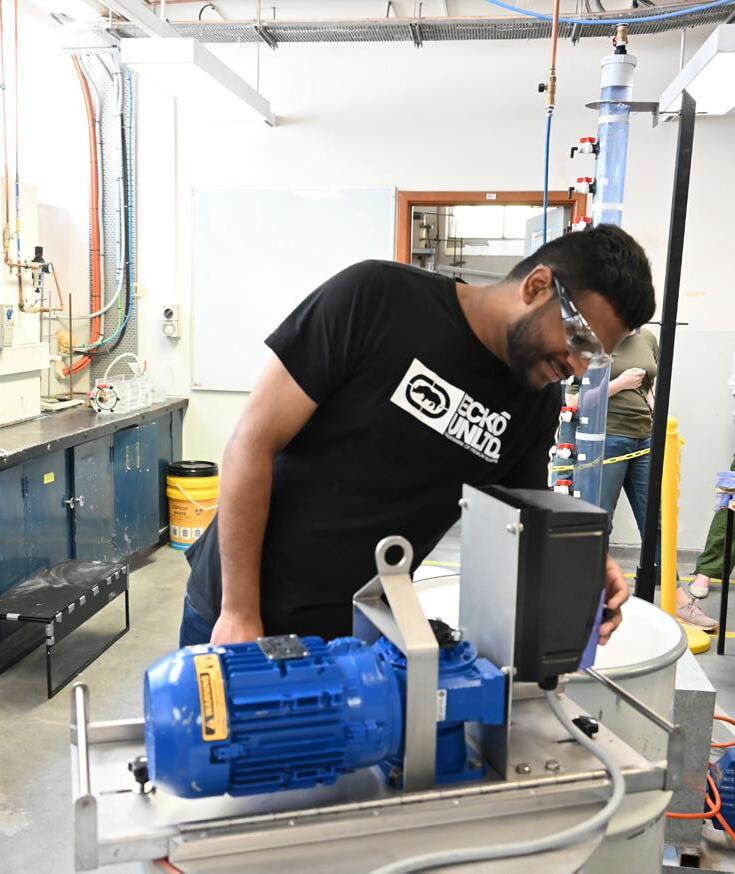
Associate Investigators
A/Prof Tejas Bhatelia, Curtin
Dr Boris Albijanic, Curtin
Prof Karen Hapgood, Swin
Dr Ghislain Bournival, UNSW
Prof Peter Scales, UOM
Dr Peter Sherell, UOM
Dr Liguang Wang, UQ
A/Prof Max Zanin, UniSA
Dr Richmond Asamoah, UniSA
Research Associates
Dr Emmanual Baawuah, Curtin
Dr Erica Avelar, Curtin
Dr Joseph Kim, UNSW
Dr Peipei Wang, UON
Dr Mohammad Hoque, UON
Dr Dusan Ilic, UON
Dr Tariqul Islam, UON
Dr Subhasish Mitra, UON
Dr Aleksej Lavrinec, UON
Dr Joshua Sovechles, UON
Dr James Zhao, UON
Dr Simon Iveson, UON
Dr Pouria Amani, UON
Dr Tuan Nguyen, UQ
Dr Karina Barbosa, UQ
Dr Wonder Chimonyo, UQ
Ms Hayla Miceli, UQ
Dr Farhana Diba, UQ
Dr Marko Hilden, UQ
Dr Ngoc Nguyen, UQ
Dr Duc Ngo-Cong, UQ
Dr Lucia Dzinza, UQ
Dr Juan Jose Frausto Gonzalez, UQ
Dr Qi Shao, UQ
Dr Dion Weatherly, UQ
Dr George Abaka-Wood, UniSA
Research Assistants
Mr Joshua Brown, UON
Dr Joshua Sutherland, UON
Ms Kitty Tang, UON
Miss Ai Wang, UON
Dr Raju Chowdhury, UON
PhD Students
Mr Bernard Selasie Agbenuvor, Curtin
Mr Mitchell Craig, Curtin
Mr Sayed Anzoom, UNSW
Mr Minuk Jung, UNSW
Mr Imtiaz Shah, UNSW
Miss Jackquline Eardley, UOM
Mr Sajid Hassan, UOM
Mr Lequan Zeng, UOM
Mr Daniel Dodoo, UOM
Mrs Siân Parkes, UON
Mr Virat Gurung, UON
Mr Syam Murali Mohan, UON
Ms Meolla Yvon, UON
Miss Margaret Amosah, UON
Mr Luke Crompton, UON
Mr Noyan Palabiyik, UON
Mr Joshua Starrett, UON
Mr Brady Wright, UON
Mr Abdullaziz Zakari UON
Mr Rocky Mensah, UON
Miss Abavi Naghmeh, UON
Mr Jiarui Chen, UQ
Miss Thao Nguyen, UQ
Miss Anran Niu, UQ
Mrs Carolina Carvajal, UQ
Mr Nhat Nguyen, UQ
Mr Quang Dao, UQ
Mr James Dankwah, UniSA
Ms Linda Ayedzi, UniSA
Technical Staff
Mr Raul Cavalida, UOM
Ms Laura Jukes, UOM
Mr Andy Grover, UON
Undergraduate Students
Emmanuel Katasigarakis, UNSW
Chunmei Fan, UOM
Emily Stiller, UON
Emma Gibbs, UON
Mitch Bartley, UON
Danny Smith, UON
Harrison Lack, UON
Samuel Jameson, UON
Sharni Tilbrook, UON
Ethan Hutchinson, UON
Theo Atkins, UON

PhD Thao Thi Phong (UQ) and
Sajid Hassan (UOM)
Professor Bill Skinner
PROGRAM 1: PROJECT SUMMARIES
Physics of Novel System Hydrodynamics
P1.1 Quantifying Bulk and Surface Properties of Minerals
1 Application of X-ray CT scanning in describing mineral surface liberation with increasing grinding and applied breakage mechanisms
Leader:
Prof Bill Skinner (UniSA)
Key Personnel:
Prof Mohsen Yahyaei (UQ)
Engagement with a METS company, CBSM Mining Services, involving the use of their GRolls® crusher technology that applies high compression and shear to dry feeds, led to enhanced grain boundary failure and “surface grade” of mineral phases. Following this success, a laboratory-scale GRolls® has now been delivered to the UniSA Node and is undergoing commissioning. This includes dry materials handling, classification and the installation of power consumption monitoring sensors. In addition, Computed Tomography (CT) characterisation has been carried out on synthetic composites.
The next quarter will focus on crushing several ores to flotation feed particle size distributions (PSD) and first stage product characterisation via CT and electron microscopy. Data will be compared with wet rod mill grinding to similar PSD.
2 Application of X-ray CT scanning in describing partition curves of mineral separators
Leader:
Prof Anh V Nguyen (UQ)
Key Personnel:
Prof Jan Miller, AI (Uni of Utah)
PhD Student:
Quang Dao (UQ)


This project quantifies separation performance through partition curves, via X-ray CT (XCT) scanning and refining particle segmentation through advanced image processing. A technique has been developed to segment individual particles with different densities with high accuracy. The washability curves of lead-zinc mineral samples and the partition curves of the dense medium cyclone were reconstructed from the enhanced XCT analysis. The upcoming phase focuses on establishing XCT calibration for coal washability on a commercial scale. Concurrently, the research investigates the influence of exposed grain perimeter versus surface area on flotation behaviour. Deliberate variations in hydrophobised pattern perimeters are employed to scrutinise the dynamics of bubble detachment. Experimental scope extends to coarse flotation in composite minerals. Subsequently, the research analyses bubble detachment mechanisms across perimeters, utilising XCT and mineral-liberation analysis for accurate surface area quantification. This multifaceted approach advances the understanding of particle behaviour in, and improved techniques for, mineral processing applications.

47
TITLE LEADER & KEY PERSONNEL PROJECT SUMMARIES
NO
3 The manipulation and analysis of data from XRCT to quantify mineral surface liberation, with a particular focus on fine particle characterisation
Leader:
A/Prof Kym Runge (UQ)
Key Personnel:
Prof Stephen Neethling, AI (Imperial College)
X-ray micro-CT (XRT) has the potential to non-destructively measure particle liberation without the stereological problems associated with 2D imaging techniques. To unlock this opportunity, optimum sample presentation methods need development, problems with mineral identification need to be overcome and user-friendly open-source software to process the images is required.
DragonFly was identified as the most promising software platform to process the XRT images and programming of custom-built add-ins to facilitate analysis of mineral sample images is currently underway. A new XRT machine (TESCAN UniTomXL Spectral) was also identified that incorporates spectral analysis capability for improved mineral identification. Mineral processing samples previously measured by mineral liberation analysis (MLA) have been sent to TESCAN to enable an assessment of this new technology.
4 Investigation of breakage mechanisms on fracture along grain boundaries
5
6 Characterisation of clays, including the role of salts in copper flotation
Leader:
Prof Mohsen Yahyaei (UQ)
Key Personnel:
Prof Chris Aldrich (Curtin)
PhD Students:
Carolina Macarena Carvajal (UQ)
Bernard Selasie Agbenuvor (Curtin)
Leader:
Prof Bill Skinner (UniSA)
Key Personnel:
Dr Colin Macrae (CSIRO)
Mineral characterisation, including optical and advanced electron microscopy, nanoindentation, and in-depth crystal orientation analysis of selected samples, was conducted to assess the mechanical properties of individual minerals. In addition, a discrete element method (DEM) ‘ESyS’ particle model has been developed to study the breakage modes of minerals under applied loads. The crystal orientation characterisation, along with a complete characterisation of the mechanical deformation in the selected mineral system, was accomplished. Moving forward, the project aims to assess the breakage modes of minerals, explore the effect of the crystal orientation on the mechanical responses, and advance the DEM-ESyS particle model to address a fully comprehensive mechanical study on samples.
This project involves the investigation of selected samples from previously published research, alongside micro-fabricated chemical imaging standards. Examples include challenging systems, such as arsenian pyrite system, in which sub-10 micron zoning of variable Fe-As-S composition surrounds euhedral pyrite grains. Also, a target system for this project is micron scale surface chemical heterogeneity. A beamtime proposal is currently being written for access to the Australian Synchrotron’s X-ray Fluorescence Microscopy (XFM) beamline for detailed (<500 nm resolution) of thin sections of zoned arsenian pyrite.
Leader:
Dr Eirini Goudeli (UOM)
Key Personnel:
Anthony Stickland (UOM)
Prof George Franks (UOM)
A/Prof Liza Forbes (UQ)
Prof Peter Scales, AI (UOM)
Dr Nathan Webster, PI (CSIRO)
PhD Student:
Daniel Dodoo (UOM)


Clays are found in a range of mineral deposits. In flotation, clays give rise to issues such as viscosity, surface coating, and selectivity problems. In hydrophobic clays, they result in grade penalties in product streams. The fast and efficient characterisation of both the quantity and types of clays within a process stream, along with the prediction of their implications for flotation, remains poor.
This project aims to assess the role of clays in copper flotation with reference to ionic and other treatments that both reduce the viscosity of the clay rich suspensions and reduce the surface area and effect of clays on flotation. The effect of both morphology and the crystallinity of the clays on the flotation response is being assessed. Specifically, the project is using X-ray diffraction analysis (XRD) along with scanning electron microscopy (SEM) microscopy in conjunction with CSIRO to characterise, predict and control particle interactions and subsequent downstream effects. The morphology of pure talk and clay rich ores from various industries has been characterised using X-ray and electron beam techniques aiming to enable the design of more efficient processes in both flotation and tailings management.
48
PROGRAM 1: PROJECT SUMMARIES
Physics of Novel System Hydrodynamics
P1.1 Quantifying Bulk and Surface Properties of Minerals
7 Measurement of surface chemical heterogeneity at the micron scale
Leader:
Prof Bill Skinner (UniSA)
Key Personnel:
Prof Marta Krasowska (UniSA)
Dr Susana Brito e Abreu (UQ)
The selective flotation of auriferous arsenian pyrite from refractory ores using thionocarbamate has been investigated. The effect of physical and chemical heterogeneity on wettability and wetting film stability in mineral flotation has been explored. The investigation extends to surface chemistry changes across phase boundaries in the zoned, Fe-As-S system. A beamtime proposal is underway to access the ESCA Microscopy beamline at Elettra Sincrotrone Trieste, Italy, offering imaging X-ray photoelectron spectroscopy imaging (XPS) with spatial resolutions down to 50 nm.
8 Correlation of surface chemical heterogeneity at the micron scale with hydrophobicity and particle-bubble interaction forces
Leader:
Dr Susana Brito e Abreu (UQ)
Key Personnel:
Prof Bill Skinner (UniSA)
Prof Marta Krasowska (UniSA)
PhD Student:
Anran Niu (UQ)


The flotation behaviour of minerals is heavily dependent on the surface properties of mineral particles and their interactions with air bubbles. This, in turn, depends on the minerals surface chemistry which is manipulated in flotation. However, how surface chemistry determines mineral hydrophobicity and interactions with air bubbles at the micrometre scale is not well understood. This project investigates the effect of surface chemistry changes of sulphide minerals (collector adsorption or oxidation) on surface hydrophobicity and interactions with bubbles. Contact angle measurements coupled with atomic force microscopy (AFM) have revealed the complex interplay between surface chemistry, mineral structure/topography, and the presence of surface nanobubbles on the resulting hydrophobicity. The results have also shown that this interplay differs between chalcopyrite and pyrite minerals. A custom AFM colloidal probe has been built and will be used to quantify the interaction forces of varying mineral surface chemistries and better understand the interactions with air bubbles.


49
LEADER
KEY
PROJECT
NO TITLE
&
PERSONNEL
SUMMARIES
P1.2 Coarse Particle Separations
10 Enhancement of bubble-particle attachment and recovery at coarse particle size and low surface liberation-Part I
Leader: Prof Bill Skinner (UniSA)
Key Personnel:
Prof Anh V Nguyen (UQ)
PhD Student: James Dankwah (UniSA)
This project examines the complex interplay between hydrodynamics and pulp/surface chemistry in low-turbulence, froth-free fluidised bed flotation environments. Particle size distributions, composite particles (degree of surface liberation, simple-complex locking), operating parameters and feed preparation (wet, dry, chemistry), together with reagent type and strategy (collector, depressants, frothers) are investigated in the context of specific application within flowsheets. The use of a constant density/particle size material (quartz or alumina) has been investigated as bed material in a hydrofloat fluidised-bed flotation cell. This approach allows fluidisation and bed permeability to be optimised prior to feed introduction and, potentially, offer a means to extend flotation performance outside normal feed particle size ranges.
10ii Enhancement of bubble-particle attachment and recovery at coarse particle size and low surface liberation - Part II
Leader:
Prof Anh V Nguyen (UQ)
Key Personnel:
Prof Bill Skinner (UniSA)
PhD Student: Nhat Nguyen (UQ)
The project focuses on the flotation of coarse and composite particles. The research investigates the complex interplay between hydrodynamics and surface chemistry in controlled-turbulent environments by linking particle/surface characteristics, flow conditions, and reagents. The new research outcomes have identified the major failure of the conventional detachment theories, including the conjecture of the constant contact angle at detachment and location of detachment at the triple contact line. The new experimental evidence shows that the detachment involves bubble necking, detachment at the bubble neck, varying contact angle, wetting kinetics and shrinking of triple contact area, dynamic adsorption/desorption of surfactants during detachment, and deviation from the Young-Laplace theory of capillarity. The acceleration of bubble surface at detachment was significant and can be accounted for by revising the classical Young-Laplace theory. The surface morphology and chemical heterogeneity of real particles and surfaces with the slip-and-stick physics of triple contact line motion are responsible for the failure of the classical detachment theories. The project continues to examine the bubble-particle detachment kinetics and ultimately develops useful models and approaches for quantifying the detachment of coarse composite particles and incorporates the outcomes into the pilot-scale studies using new devices including the HydroFloatTM cells.
11 Interaction of bubble-particle clusters with a froth zone in coarse particle flotation


Leader:
L/Prof Graeme Jameson (UON)
Key Personnel:
A/Prof Seher Ata (UNSW)
PhD Student:
Sayed Anzoom (UNSW)
It is imperative to investigate the role of particles and the interactions between bubble clusters to improve coarse particle recovery. This work aims to shed light on the subject by examining the static and dynamic behaviour of coarse particles in flotation cells using cutting-edge analytical techniques including X-ray micro-CT and X-ray radiography in addition to specially designed setups. Recent experimental work has indicated that a key barrier to effective recovery is the pulp-froth interface which presents a complex hydrodynamic condition. The CT studies have demonstrated the critical function that particles play in bubble cluster bridging, and their study will be extended to investigate clusters under different operating conditions. Preliminary X-ray radiographic investigations have provided fresh insights into the dynamics of a three-phase froth and the trajectory of coarse particles from the pulp-froth interface to the cell lip. The project’s ultimate goal is to further understand the fundamental mechanisms of coarse particle recovery by quantifying phenomena at the pulp-froth interface and within the froth phase.
50
PROGRAM 1: PROJECT SUMMARIES
Physics of Novel System Hydrodynamics
P1.2 Coarse Particle Separations
12 Determination of the Umf in fluidised bed flotation
Leader:
L/Prof Graeme Jameson (UON)
PhD Student:
Noyan Palabiyik (UOM)
An apparatus has been used in which a well-defined polysized feed of quartz particles was fluidised and elutriated batchwise in a vertical column. It was established that there is no minimum fluidisation velocity of a polysized sample. The finest particles are usually elutriated from a polysized sample in an overflow stream, leaving behind the coarsest particles. A settled layer forms in the base of the column, with an expanded bed of particles of intermediate size above them. The project has therefore morphed into a new area, in which we seek to be able to predict the concentration profile of particles in the column, and the composition of the overflow stream, for batch and continuous operations. A new larger apparatus is under construction, that will enable the use of larger feed masses, so minimise the loss of test particles withdrawn from the column on the overall behaviour. In parallel, a theory is being developed that will enable the prediction of the size and concentration profile of particles as a function of time and position in the column and the overflow stream. We begin with a twophase system of polysized particles in a rising liquid stream. Subsequently we expect to investigate a three-phase system in which fine gas bubbles are injected into the fluidising liquid. The effect of the bubbles on the hydrodynamic diffusivity of the particles will be investigated. The key variables are the concentration of particles and their particle size distributions, as a function of time and position in the column. The project provides fundamental support for the NovaCellTM coarse particle flotation cell being commercialised by Jord International Pty Ltd (Jord).
13 Application of inclined channels in enhancing early gangue rejection through gravity and flotation separation - Applied

Leader:
Prof Vishnu Pareek (Curtin)
Key Personnel:
L/Prof Kevin Galvin (UON)
Amira Global

Sink-hole fluidisation exploits the interplay of downward gravitational force and the upward momentum exerted on particles by a fluid phase. This phenomenon offers a unique avenue for customising the momentum experienced by various particles within the sink-hole, thereby enabling the separation of particles based on their density and size. Currently, a comprehensive experimental and modelling investigation is underway to elucidate the impact of sink-hole size, shape, and quantity on the process. Simultaneously, efforts are being made to model the clustering behaviour of particles observed in DEM simulations conducted at the UON.
51
LEADER & KEY
PROJECT
NO TITLE
PERSONNEL
SUMMARIES
14 Application of inclined channels in enhancing early gangue rejection through gravity and flotation separation - Fundamental
Leader:
L/Prof Kevin Galvin (UON)
Key Personnel:
Prof Vishnu Pareek (Curtin)
Dr Angus Morrison (UQ)
Dr Kathryn Hadler, AI and Prof Jan Cilliers, AI (Imperial College)
PhD Students:
Joshua Starrett (UON)
Luke Crompton (UON)
FLSmidth
15 Influence of turbulence on coarse
Leader:
A/Prof Elham Doroodchi (UON)
Key Personnel:
Prof Geoffrey Evans (UON)
A/Prof Kym Runge (UQ)
PhD Student:
Syam Murali Mohan (UON)
This project aims to reduce energy and water consumption in mineral processing through efficient extraction of the unwanted gangue minerals at coarser sizes. The REFLUX® Classifier (RCTM) uses inclined channels to improve the performance of fluidised bed separators. This project extends its application to produce particle size classification of low-grade feeds, and in turn efficient coarse particle flotation. The experimental and computational work has led to new knowledge on how to achieve very sharp separations based on particle size up to ~300 mm, and more recently to coarser particle sizes. Following the recent work on establishing coarse particle flotation in the coarseAIRTM (a variation of the RCTM), a new diagnostic for assessing the performance of coarse particle flotation technologies in general was developed. This diagnostic deduces the underpinning distribution of flotation rate constants in the feed and how the flotation system partitions this material between the product and the reject.
16
Fluidiser
Leader:
L/Prof Kevin Galvin (UON)
Key Personnel:
Prof Chris Aldrich (Curtin)
PhD Student:
Mitchell Craig (Curtin)
FLSmidth

Coarse particle flotation is of great importance as it will enable significant energy savings, higher plant capacities, and improved tailing management. Particle detachment due to turbulence and poor particle suspension, however, impose a challenge, limiting coarse particle flotation in industrial applications. This study uses new fundamental hydrodynamic techniques to quantify bubble-particle interaction in well-defined turbulent environments, with the aim of determining how and why coarse particle detachment from bubble-multiparticle aggregates occur in flotation. An experimental study is also being undertaken to quantify, understand and improve particle suspension. Attachment of particles to bubbles is found to improve the bubble surface stability by shielding the bubble surface from hydrodynamic forces. This improvement becomes significantly evident at bubble surface loadings beyond 15%. Particle suspension was confirmed to be a strong function of particle size and density but also air rate, cell aspect ratio and impeller size and speed. The findings of the study will ultimately assist with optimising existing flotation cells and designing new particle separators.
Numerical modelling complementary to the DEM model of the Sink-Hole Fluidiser has not yielded additional insights in the separation of particles in the Sink-Hole Fluidiser. As a consequence, the focus has shifted to the use of artificial intelligence to analyse the complex patterns of hydrodynamic behaviour resulting from the interplay between gravity, particle-particle and fluid-particle forces in the bed. The data generated from the Sink-Hole Fluidiser experiments enabled visualisation of the formation and collapse of granular aggregates in the region of the sink-hole. These aggregates appear to be a direct result of the interaction between coarse particles and the fluidised bed medium and appear to play a key role in the physical separation of the coarse particles. Algorithms are currently under development to facilitate quantitative analysis and in-depth understanding of the granular flow behaviour that could potentially lead to improved equipment design and advanced control strategies.
52
particle detachment from air bubbles
Density separation using the Sink-Hole
PROGRAM 1: PROJECT SUMMARIES
Physics of Novel System Hydrodynamics
P1.2 Coarse Particle Separations (continued)
17 Investigation of novel granular flow mechanism for achieving a density-based separation
Leader: L/Prof Kevin Galvin (UON)
Key Personnel:
Prof George Franks (UOM)
Prof Chris Aldrich (Curtin)
PhD Student: Mitchell Craig (Curtin)
FLSmidth
18 Water-efficient electrostatic beneficiation
Leader:
Dr Peter Ireland (UON)
Key Personnel:
Prof Grant Webber (UON)
Prof Karen Hapgood, AI (Swin)
Dr Kathryn Hadler, AI (Imperial College)

PhD Student: Abavi Naghmeh (UON)
The Sink-Hole Fluidiser is a novel dry separation technology that has been shown to produce sharp separations based on density in the size range of 2-10 mm. The separation mechanism appears to be new, with the separation density much higher than the air fluidised bed suspension density. This project has developed a DEM model incorporating the effects of vibration on the fluidisation of the sand medium within the novel system geometry. The model quantifies the floating or sinking of the coarse test particles, providing fundamental insights into the mechanism that underpins the physical separation. The work has identified a critical phase transition state that gives rise to separation densities much higher than the suspension density. The modelling has permitted the effects of key features of the vibration, including frequency, amplitude, and phase shift to be investigated, while also providing detailed quantification of the complex, dynamic, physical state of the system.
A model architecture has been developed to model several different electrostatic separator types. Published simulations of a free-fall separator using this architecture revealed that angled feed injection with a counter-directional electric field leads to more efficient separation than other free-fall configurations. Validation of these results is being performed using our benchtop electrostatic separator with both model particles and mineral mixtures. A by-product of this work has been experiments on separation of glass from silicon for solar panel recycling.
The separation apparatus and modelling architecture are being subjected to continuous iterative modification and improvement. For example, the model is being adapted to include particle aggregation and air entrainment, and the benchtop separator to permit a variety of controlled feed configurations. A larger “phone booth” sized separator is being constructed to investigate scale-up of the process. In the Space Resources Utilisation field, lunar regolith simulant has been sourced for electrostatic separation experiments.

53
LEADER & KEY PERSONNEL PROJECT SUMMARIES
NO TITLE
P1.3 Fine Particle Separation
19 Enhanced bubble-particle adhesion kinetics of ultrafine particles through bubble particle interaction in a shockwave at elevated pressure
Leader:
L/Prof Graeme Jameson (UON)
Key Personnel:
A/Prof Seher Ata (UNSW)
A/Prof Kym Runge (UQ)
PhD Student:
Imtiaz Shah (UNSW)
This project explores fine particle flotation utilising ultrasonic standing waves to foster bubble-particle aggregate formation through attractive acoustic radiation force, termed acoustic agglomeration. The Concorde™ flotation cell utilises shockwaves at elevated pressure to achieve enhanced flotation of ultrafine particles through improved bubble particle interactions, achieving high recoveries and good selectivity. Regression models were developed to correlate performance metrics with cell feed and operating conditions, identifying optimal operating conditions for maximising performance.
Ongoing experiments aim to optimise the impact of acoustic transducer arrangement, design, and frequency on ultrafine particle flotation. To produce a shockwave in a gas-liquid mixture it is necessary to accelerate the flow so that the speed of sound is exceeded locally, downstream of a convergent-divergent nozzle. The rate of dissipation of mechanical energy is a function of the pressure in the flow upstream of the nozzle. Experiments have been conducted in which the rate of capture of hydrophobic particles is measured as a function of the driving pressure. A model has been developed to enable the contributions to the overall recovery in a multi-reactor system to be calculated. Planned activities include sizing and bubble size analysis is planned to better understand the mechanisms driving recoveries and to enable a comparison with conventional flotation.
20 Enhanced bubble-particle adhesion kinetics of ultrafine particles in a shear field at an air bubble sparger surface
Leader:
Dr Mahshid Firouzi (UON)
Key Personnel:
L/Prof Kevin Galvin (UON)
A/Prof Kym Runge (UQ)
PhD Student:
Brady Wright (UON)
Rocky Mensah (UON)
FLSmidth
21 Fast flotation of fine particles
Leader:
Prof Bill Skinner (UniSA)
Key Personnel:
L/Prof Kevin Galvin (UON)
PhD Student:
Linda Ayedzi (UniSA)


FLSmidth
This project aims to enhance the recovery of fine valuable particles, with a particular emphasis on the role of fine hydrophilic gangue particles, which have been overlooked despite their significant impact. Central to the project is an investigation of the intense kinetics within a downcomer, created using a gas sparger arrangement in a REFLUX™ Flotation Cell (RFC). Noting the RFC is a new flotation technology device that delivers counter-current washing via a concentrated bubbly-zone, with no froth. Additionally, the project explores the impact of salinity on the recovery of fine particles. The RFC’s innovative approach to managing these dynamics represents a significant advancement in flotation processes, especially for fine particle recovery. A particularly promising application of this project is the reprocessing of old tailings dams to extract minerals and metals, which can support land rehabilitation efforts. Furthermore, the project’s findings are expected to enable the effective use of recycled water in mineral processing, offering significant environmental and economic benefits.
The project focuses on entrainment reduction in ultrafine (< 10 micron) flotation feeds, critical to achieving high grade concentrates in these systems. Silica(te) rejection in pentlandite flotation and clay rejection from rare earth bearing phases are current systems under study. The RFC has shown high performance and will, in the next stages of the project, be applied to graphite, Cu/Mo and PGM systems.
54
PROGRAM 1: PROJECT SUMMARIES
Physics of Novel System Hydrodynamics
P1.3 Fine Particle Separation (continued)
22 Counter current washing of a concentrated bubble column, quantifying the limits of flotation separability using novel release analysis
Leader:
L/Prof Kevin Galvin (UON)
Key Personnel:
Prof Yongjun Peng (UQ)
A/Prof Kym Runge (UQ)
PhD Students:
Siân Parkes (UON)
Jiarui Chen (UQ)
FLSmidth
23 Mechanism for coarsening of flotation froths
Leader:
Prof Anh Nguyen (UQ)

Key Personnel:
Prof Roe-Hoan Yoon, AI (Virgina Tech)
Dr Liguang Wang, AI (UQ)
Prof Stephen Neethling, AI (Imperial College)
PhD Student:
Thao Nguyen (UQ)
The novel method established in the previous year to benchmark flotation technologies, including the RFC, was revisited, leading to a clearer fundamental insight, and direct application in new studies concerned with low grade copper and nickel ores, as well as a nickel tailings stream. The work consistently showed the significant performance advantage of the RFC over conventional mechanical cells in terms of at least a 5-10 fold reduction in footprint and significant cleaning of the concentrate. The flotation of graphite flakes was also investigated, showing the effects of particle shape on cleaning. Other work delivered new advances in our understanding of flotation at ultrafine sizes showing a dependence of the flotation rate constant on composition, and evidence showing the kinetics of gangue entrainment at the bubble surface. Counter current washing of clays in saline systems was also investigated.
Understanding and maintaining an adequate froth phase is immensely crucial since it directly affects the flotation recovery and grade of collected minerals. Its macroscopic properties including froth drainage and froth stability are two essential elements playing an important role in affecting the performance of the flotation froth phase. For coarse particle flotation, the greater the stability of the froth, the higher the number of valuable particles attached to the bubbles, resulting in increased minerals recovery. This project explores the intrinsic connection between microscopic and macroscopic froth properties and then develops new solutions to increase the efficiency of the separation process. Our findings highlight the positive influence of hydrogen bonding between surfactants and water molecules at the aqueous bubble interface on foam/froth stability. Ongoing studies explore the impact of this interaction on foam and froth drainage, and its application for the intensification of froth flotation separation of real minerals and coal feeds.

TITLE LEADER & KEY PERSONNEL PROJECT SUMMARIES
NO
24 Hydrodynamics of an emerging froth from a concentrated bubble column
Leader:
Prof Geoffrey Evans (UON)
Key Personnel:
Dr Subhasish Mitra (UON)
Dr Peter Ireland (UON)
Prof Jan Cilliers, AI (Imperial College)
PhD Student: Abdullaziz Zakari (UON)
26 Ultrafine recovery of precious metals using nano-scale permeable films of oil
Leader:
L/Prof Kevin Galvin (UON)
Key Personnel:
Prof Vishnu Pareek (Curtin)
Prof Robert H. Davis, PI (Uni Colorado Boulder)
PhD Student:
Meolla Yvon (UON)
Jord International
27 Ultrafine gravity separation using inclined channels subjected to different G forces including standard gravity
Leader:
L/Prof Kevin Galvin (UON)
Key Personnel:
A/Prof Aaron Noble, PI (Virgina Tech)
PhD Student:
Margaret Amosah (UON)
FLSmidth
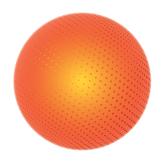
The RFC provides superior hydrodynamics enabling fast flotation for both fine and coarse size particles which is not limited by the system kinetics. This is possible due to frothless operation which involves complex transition of a bubbly flow regime into a froth phase outside the inverted fluidised bed at the top of an RFC unit in the presence of counter current washing. Efficient washing aids in desliming and enhances mineral grade which requires understanding of bubble-particle interactions, surface loading and role of turbulence therein. These aspects have been studied by quantifying bubble surface loading and rise velocity of particle laden bubbles. Hydrodynamics of a pilot plant scale RFC unit have also been characterised by quantifying the bubble size distribution and associated gas volume fraction for a range of feed, air, wash water and underflow rates. Recent advances focus on understanding the bubbly to froth phase regime transition.
A novel agglomeration technology for selectively capturing hydrophobic particles was investigated theoretically and experimentally, the aim being to improve the recovery and concentration of minerals, especially from tailings. A concentrated water in oil emulsion is used as the binder, greatly reducing the consumption of oil. The binder contains a salt that induces osmosis and permeation, which overcomes the viscous hydrodynamic resistance to collisions. The theoretical work, which has already quantified the enhanced capture efficiency, examined the effects of internal mass diffusion limitations on the particle capture. A systematic experimental study on the challenges of recovering ultrafine nickel sulphides in the presence of magnesium silicates was also undertaken, with the objective of minimising the capture of the silicates through suppression of electrostatic forces. A full-scale facility was constructed and commissioned. After two weeks of experimental work, the facility achieved rapid agglomeration, but required elevated binder concentrations.
Gravity separation offers the potential for significant advantages over flotation of metal oxides including manganese dioxide, iron ore and cassiterite. These benefits include the elimination of toxic chemicals, faster processing and improved recovery and upgrade. Advances in iron ore beneficiation will lead to direct reduction of iron ore, hence decarbonisation. This work seeks to overcome the historical limitations of gravity separation by targeting the recovery of particles down to 10 microns. This research explores the use of inclined channels in the gravity separation and desliming of these relatively fine particles. Remarkable separations have been obtained, and new knowledge concerning the partition surface quantified. The work with the manganese ore has already achieved industry impact, and new impact in iron ore is expected in 2024 using closely spaced inclined channels. The Graviton, which applies G-forces to the inclined channels, is now entering its next phase of commercialisation with support from partner FLSmidth.

56
PROGRAM 1: PROJECT SUMMARIES
Physics of Novel System Hydrodynamics
P1.4 Solid-Liquid Separation and Dewatering
28 Investigation of water expression from thickened suspensions using high pressure dewatering rolls
Leader:
A/Prof Anthony Stickland (UOM)
Key Personnel:
Prof Peter Scales (UOM)
Prof Ken Williams (UON)
PhD Student:
Sajid Hassan (UOM)
29 Influence of oscillatory motions on water migration, liquefaction and dewatering
Leader:
Prof Ken Williams (UON)
Key Personnel:
Dr Dusan Ilic, RA (UON)
PhD Student:
Virat Gurung (UON)


Ultrafine or clay-rich tailings require high pressures to recover process water and to achieve stackable concentrations. High Pressure Dewatering Rolls (HPDR) is a novel technology developed by the University of Melbourne that can apply the required pressures in a continuous, cloth-less filter. This project has successfully designed, built and commissioned a new HPDR prototype specifically for fine mineral tailings. We have demonstrated that the new prototype can process copper tailings, nickel tailings, and limestone to high solids concentrations. Models of fluid flow and solid-liquid separation have been developed to aid design and predict equipment size requirements for full-scale implementation. A detailed technoeconomic evaluation is underway and we are discussing potential commercialisation with miners and equipment manufacturers.
Experimental tests for moisture migration under oscillation, including material characterisation tests, have been completed for iron ores. A theoretical model has been developed to simulate moisture migration under oscillation by modifying the Green-Ampt equation. At present, experimental design work is under development to study moisture migration through coupled discrete element method-smoothed particle hydrodynamics (DEM-SPH) simulations. This includes designing experiments for calibration, conducting the calibration experiments both in the laboratory and in the simulations, and finally conducting the moisture migration experiments with the calibrated particles in the simulations, validating the results with the experimental data.
57
LEADER
PROJECT
NO TITLE
& KEY PERSONNEL
SUMMARIES
30 Application of G forces in the expression of water from concentrated suspensions
Leader:
Prof Anh Nguyen (UQ)
Key Personnel:
Prof Roe-Hoan Yoon, AI (Virgina Tech)
Dr Liguang Wang, AI (UQ)
PhD Student: Andrew Doi (UQ)
31 Solid-liquid separation using nano-scale permeable films of oil
Leader:
Dr Eirini Goudeli (UOM)
Key Personnel:
A/Prof Anthony Stickland (UOM)
L/Prof Kevin Galvin (UON)
Prof Peter Scales, AI (UOM)
Dewatering of fine tailings presents an emerging strategy for the sustainable disposal of mineral tailings via solid dry stacking. Not only is high-speed water removal required, but the resulting semi-solid material must have high mechanical strength and low stickiness for subsequent handling and disposal. This project develops an efficient dewatering technology via applying high G-force aided by chemical reagents. The pilot- and laboratory-scale experiments demonstrate the synergic combination of high G force enabled by solid bowl centrifugation (SBC) and novel chemical reagents for efficient tailings dewatering and the benefits of co-disposal by mixing dewatered fine tailings with coarse rejects. SBC delivers a stable and consistent dewatering performance, outperforming traditional dewatering approaches based on filtration whose performance is intermittent and strongly dependent on the origin of the tailings. Fundamental understanding and practical knowledge generated in this project are crucial for developing effective solutions for sustainable tailings management in modern mining practices.
High-molecular weight polymeric additives play a crucial role in dewatering and managing tailings in the minerals industry, enhancing the settling rate and permeability, strengthening the particulate bed while reducing the attainable solids concentration. This project aims to introduce an oil phase to flocculated aggregates providing a route for low-shear pelletisation processes.
The manufacture and commissioning of an upward flowing screw pellitisation device has been completed to test the new concepts in a continuous flow reactor which is more likely to produce acceptable results than batch processing. Physical characterisation of pellets was carried out to analyse moisture content and pellet size. In addition, the oil agglomeration system developed for the project has shown good success in aiding the spread of oil on hydrophilic surfaces in coarse flotation studies. A model tailings suspension and an oil emulsion system have been used for aggregation, along with conventional flocculants. Laboratory trials show both aggregation and densification in a helical uplift pelletiser.


Leader:
Prof George Franks (UOM)
Key Personnel:
A/Prof Liza Forbes (UQ)
Dr Eirini Goudeli (UOM)
PhD Students:
Jackquline Eardley (UOM)
Lequan Zeng (UOM)
The project aims to improve recovery of fine minerals by flocculation/flotation approach. Study of aggregation of fine hematite over quartz has been completed. Understanding adsorption isotherms, turbidity and aggregate size measurements help to understand the influence of polymer characteristics on aggregation. Aggregates can be produced which are in the size range amenable to recovery by flotation. Preliminary flotation results are promising in terms of improving the recovery of fine micron size hematite from quartz particles. Additional work is needed to improve the grade of the concentrate.
Discrete element method-computational fluid dynamics (DEM-CFD) modelling has also been used to understand the aggregation and breakage dynamics of aggregates under shear conditions similar to that encountered in industrial scale flotation cells. Work has commenced to model aggregates produced with bridging polymers in addition to the Derjaguin, Landau, Verwey and Overbeek (DLVO) induced aggregation studied.
58
32 Ultrafast particle recovery through formation of small hydrophobic aggregates
PROGRAM 2

CHEMISTRY OF NOVEL HYDROPHOBIC AND SELECTIVE INTERACTIONS
Research Program Leaders
Professor George Franks and Associate Professor Liza Forbes
Overview
The overall objective of Program 2 is to support robust, fast and efficient separation technologies that are both selective and hydrophobic. This is achieved by studying the effect of hydrophobic reagents on the surface properties of mineral particles. Below are some of the key highlights for progress made within each of the sub-programs in 2023:
2.1 Development of Novel Flotation Collectors
A novel surfactant (Vitamin E derivative developed in Program 3) has shown relatively fast adsorption kinetics and moderate interfacial activity at an oil-water interface. An emulsion formulated with this emulsifier showed outstanding selectivity for copper (and gold) nanoparticles, extending the applicability of such emulsions in the recovery of coarse and fine particles
The stability of oil-in-water emulsions for application in coarse particle recovery was investigated. A novel surfactant (Vitamin E derivative developed in Program 3) was found to produce more stable emulsions than the surfactant typically used as a collector. The higher molecular weight of the novel reagent
is believed to be responsible for its improved performance
Contact angle measurements have demonstrated spreading of oil across mineral surfaces can be controlled using a combination of surfactants and a trigger to activate the spreading
2.2 Development of Novel Delivery Systems
The objective of this sub-program is to examine new ways of introducing reagent chemistries into mineral processing systems. The key highlights were:
Hydrophobic talc particles can be recovered with the use of a novel hydrophobic emulsion binder. We demonstrated that pre-aggregating the particles with a polymeric flocculant prior to binder agglomeration reduces the oil required by 50%
Preliminary investigation of placing collector on surfaces of bubbles (rather than mineral particles) indicate that the approach is effective to enhance coarse particle hydrophobicity and shows promise in coarse particle flotation applications
A novel RAFT polymer-based surfactant used in an emulsion binder has been shown to increase talc recovery by 10% over traditional binders, and the polymer is recoverable posttalc agglomeration. Work is underway to

optimise the RAFT polymer design to increase thermo-responsiveness to aid recoverability
2.3 Hydrophobic Interactions in Dewatering
The objective of the third sub-program is to exploit mineral surface properties to improve suspension dewatering. The key highlights were:
The application of novel advanced beneficiation, conventional and novel chemistry led to improved recovery of rare earth minerals. Theoretical via density-functional theory (DFT), and experimental approaches are complementary. There has been an industry applied component and theoretical component
Agglomerating with oil-in-water emulsions and flocculating clay particles has been shown to produce centimetre size pellets. A continuous pelletisation machine was designed and fabricated by collaborators at UOM and Deakin
Chalcopyrite (a copper iron sulphide mineral) was found to selectively flocculate from quartz suspensions using conventional polymers. Separation by selective flocculation and sedimentation has been shown to be somewhat effective. Initial flotation experiments indicate that the flocculation/flotation approach is a better separation method than sedimentation
Professor George Franks
59
Personnel involved in Program 2 for 2023
Chief Investigators
Dr Ellen Moon, Deakin
Prof San H. Thang, Monash
Prof Chun-Xia Zhao, UoA
A/Prof Anthony Stickland, UOM
Prof George Franks, UOM
Dr Eirini Goudeli, UOM
Prof Erica Wanless, UON
Prof Grant Webber, UON
L/Prof Kevin Galvin, UON
Dr Susana Brito e Abreu, UQ
A/Prof Liza Forbes, UQ
Prof Marta Krasowska, UniSA
Dr David Beattie, UniSA
Prof Bill Skinner, UniSA
Associate Investigators
Prof Karen Hagood, Swin
Prof Peter Scales, UOM
A/Prof Kizuku Kushimoto, UOM
Ms Amalie Moller, UniSA
Research Associates
Dr Negin Amini, Deakin
Dr Casey Thomas, UOM
Dr Nilanka Ekanayake, UOM
Dr Shane Usher, UOM
Dr (Will) Wei Sung Ng, UOM
Dr Joshua Willott, UON
Dr Lucia Dzinza, UQ
Dr Juan Jose Frausto Gonzalez, UQ
Dr Qi Shao, UQ
Ms Isabella Verster, UQ
Dr Unzile Yenial Arslan, UQ
Dr Amir Beheshti, UniSA
Dr Piotr Pawliszak, UniSA
Dr Malgorzata Hermanowska-Young, UniSA
PhD Students
Mr Yuri Fernandes, Deakin
Mr Yunzhou Qian, UOM
Mr Yuxuan Luo, UOM
Mr Lequan Zeng, UOM
Ms Regina Medeiros, UOM
Mr Azeez Aregbe, UOM
Miss Candice Brill, UQ
Mr Alireza Allahyari, UniSA
Miss Farzane Barzegarsattari, UniSA
Research Assistants
Erin Wallace, UON
Mr Tran Binh, UQ
Technical Staff
Mr Raul Cavalida, UOM
Ms Laura Jukes, UOM
Mr Andy Grover UON
Mr Abhishek Sharma, UON
Undergraduate Students
Hien Thao Nguyen, UOM
Nicole Yan, UOM
Zheng Xie, UOM

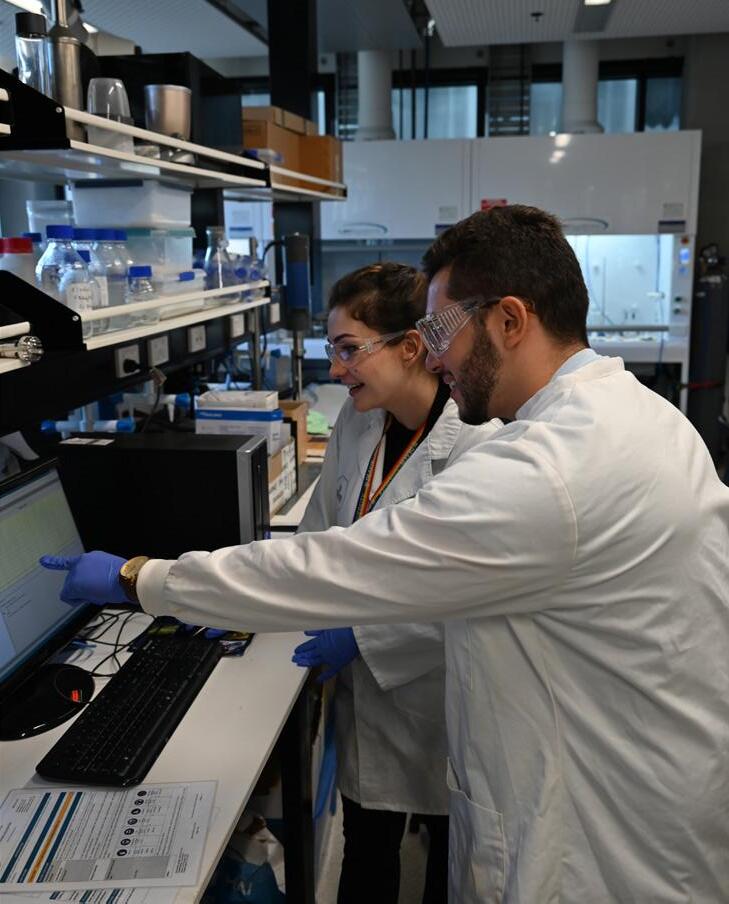

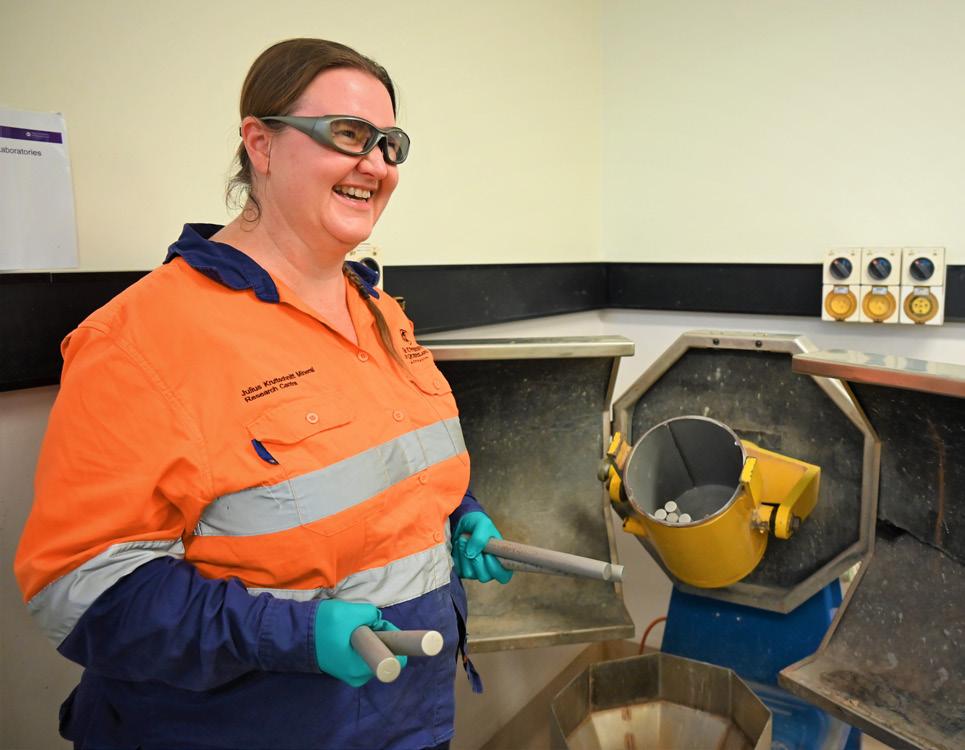

 PhD Yuxuan Luo (UOM)
PhD Yuxuan Luo (UOM)
60
PhD Yuri Fernandes and ECR Dr Negin Amini (Deakin)
PhD Candice Brill (UQ)
PhD Farzane Barzegarsattari and AI Amalie Moller (UniSA)
PROGRAM 2: PROJECT SUMMARIES

Chemistry of Novel Hydrophobic and Selective Interactions
P2.1 Flotation Collectors
33
34 Application of oils to enhance adhesion contact with coarse particles exhibiting low surface liberation and Application of oils to enhance flotation collection with coarse particles exhibiting low surface liberation
Leader:
Prof David Beattie (UniSA)
Key Personnel:
Prof George Franks (UoM)
Prof Marta Krasowska (UniSA)
Prof San H. Thang (Monash)
PhD Student:
Azeez Aregbe (UOM)
35 Wetting, spreading, and adhesion of oils on composite mineral surfaces
36 Application of synthetic and biopolymers in selective recovery of minerals
Leader:
Prof Marta Krasowska (UniSA)
Key Personnel:
Prof Erica Wanless (UON)
Prof David Beattie (UniSA)
PhD Student:
Farzane Barzegarsattari (UniSA)
Leader:
Prof David Beattie (UniSA)
Key Personnel:
Prof George Franks (UOM)
Prof San H. Thang (Monash)
Prof Chun-Xia Zhao (UoA)
Prof Marta Krasowska (UniSA)
PhD Student:
Alireza Allahyari (UniSA)
A novel surfactant (Vitamin E derivative) has shown relatively fast adsorption kinetics and moderate interfacial activity at an oil-water interface. An emulsion formulated with this emulsifier showed outstanding selectivity for copper (and gold) nanoparticles, extending the applicability of such emulsions in the recovery of both coarse and fine particles. The Vitamin E derivative was found to produce more stable emulsions than those formed with potassium amyl xanthate. The results indicate that hydrophiliclipophilic balance (HLB) is not the only factor determining emulsifier efficacy. An emulsion stability chart incorporating HLB and molecular weight (MW) of several commercial and novel surfactants is proposed to better predict emulsion stability for application in coarse and fine particle recovery. Interfacial tension alone is not a good indicator of emulsion stability as the influence of HLB, MW and zeta potential also play a significant role.
Surface hydrophobicity is a key factor in bubble-particle attachment process. The hydrophobicity of the mineral surface can be altered either by the adsorption of surfactants or polymers, or by encouraging the oil spreading and adhesion. A study into the effect of a biopolymer on bubble interactions with a graphite surface has been completed. The effect of mineral surface hydrophobicity on the collision (as characterised by the strength and frequency of the bubble bounce off) process has been completed.
The investigation of the wetting, spreading and adhesion of oil droplets has commenced. The experimental work will initially explore the effect of surface forces on droplet attachment to hydrophobic surfaces in the absence of adsorbing molecules.
Studying adsorption on mineral surfaces is problematic as few techniques allow one to quantify adsorption directly, and even fewer allow one to do this as adsorption occurs (i.e. in situ, with measurement happening with mineral surfaces exposed to solution). One of the only techniques that allows for this type of investigation (which is critical for determining binding mechanisms and kinetics of adsorption/desorption) and is able to be applied directly to mineral particles is attenuated total reflection Fourier transform infrared spectroscopy (FTIR). We are using this to interrogate the adsorption of offthe-shelf and bespoke (synthesised at Monash) polymers and surfactants. The work has focused on the use of this technique to study the adsorption of synthesised reagents on clay minerals.
61
LEADER & KEY PERSONNEL PROJECT
NO TITLE
SUMMARIES

P2.2 Novel Delivery Systems
37 Ultrafine particle deposition and adhesion with permeable hydrophobic surfaces
Leader:
Prof Grant Webber (UON)
Key Personnel:
Dr Susana Brito e Abreu (UQ)
Ultrafine particles may be recovered via interactions with permeable hydrophobic surfaces and interfaces. This project seeks to develop an emulsion binder from renewable materials. Emulsions have been prepared using water and sunflower, with corn starch, cellulose or fly ash particle stabilisers. A range of oil:water ratios and amount of added stabiliser have been evaluated with the aim of producing a stable high internal phase water-in-oil emulsion. The corn starch has proven the most promising stabiliser, resulting in stable emulsions across a broad spread of compositions, though only stable oil-in-water emulsions have been produced. Project progress will rely on identifying a water:oil:stabiliser system that produces water-in-oil emulsions while satisfying the overall objectives of sustainable materials.
38 Binder adhesion of hydrophobic flocs
Leader:
Prof George Franks (UOM)
Key Personnel:
L/Prof Kevin Galvin (UON)
Prof Peter Scales, AI (UOM)
This project aims to recover fine particles in an emulsion binder. The project investigates the possibility of reducing the amount of oil binder required by preflocculating the particles with a polymer. Research has focused on talc agglomeration as a model mineral. This work has analysed the requirements of various charged commercially available polyacrylamides and the corresponding conditions (shear rates and conditioning times) suitable for implementation of such a technology. A 50% reduction of oil requirement for the same talc recovery was observed when the appropriate dosage of polymer was added. This was found to be facilitated by the alteration of the stirring time and shear rate to ensure that the flocs due to the polymer were not broken upon the addition and delivery of the emulsion binder.
39 Development of novel bespoke hydrophobic materials having large specific surface area to support selective separations
Leader:
Dr Ellen Moon (Deakin)
Key Personnel:
Prof San H. Thang (Monash)
L/Prof Kevin Galvin (UON)
Prof Karen Hapgood, AI (Swin)
Prof Steve Armes, PI (Sheffield)

PhD Student:
Alisha Debas (Monash)
Jord International
The use of recoverable RAFT polymers to stabilise high internal phase emulsions to agglomerate ultra-fine minerals is being explored, focussing on characterising the novel emulsions and optimising the RAFT polymer chemistry.
RAFT polymer-containing emulsions were shown to have comparable stability (over 30 days) to ‘traditional’ emulsions, while still showing improved, or comparable, talc recovery, dependant on the RAFT polymer dose. In investigating the recoverability of the RAFT polymer post-agglomeration, it was found to be predominantly present in the wastewater, existing as reverse micelles. This somewhat unexpected finding is promising for the scaling of this technology, as recovery from wastewater is much simpler than from the agglomerates. Work to optimise the design of the RAFT polymer surfactant saw success, with the use of bio-derived RAFT agent to reduce the environmental impact, and an increase in the temperature responsiveness of the polymer, which will simplify recovery.


62
PROGRAM 2: PROJECT SUMMARIES
Chemistry of Novel Hydrophobic and Selective Interactions
P2.2 Novel Delivery Systems (continuted)
40 Influence of hydrophobic particles on interfacial stability of emulsions and foams
Leader:
Prof Erica Wanless (UON)
Key Personnel:
Dr Ellen Moon (Deakin)
Prof Chun-Xia Zhao (UoA)
Prof Karen Hapgood, AI (Swin)
Prof Steve Armes, PI (Sheffield)
Attachment of hydrophobic particles to the air-water interface is a critical process in the beneficiation of minerals using froth flotation. Liquid marbles at water droplets stabilised by hydrophobic particles and the adsorption of particles at oil-water interfaces are critical for the formation of Pickering emulsions. In all three cases it is the behaviour of the particles at the fluid interfaces that dictate the interfacial performance.
This project looks to build fundamental understanding of the behaviour of hydrophobic particles at the air-water interface. The focus of this year was on liquid marble formation and stability via electrostatic transfer to pendent droplets. Two classes of particles were characterised: hydrophobic platelet particles and low-density polymer particles with metallic shells. These investigations advanced knowledge of the role of particle conductivity together with density and hydrophobicity.
41 Investigation of direct reagent addition to bubble surfaces via the gas phase on hydrophobic particle recovery
Leader:
A/Prof Liza Forbes (UQ)
Key Personnel:
Prof George Franks (UOM)
Ms Isabella Verster, RA (UQ)
PhD Student:
Candice Brill (UQ)
This project seeks to improve the efficiency of coarse particle flotation through novel reagent addition methods. This is achieved by introducing flotation collectors on the surfaces of bubbles rather than the surfaces of particles.
A user-friendly collector delivery method has been developed to accomplish this. The methodology was tested, and an experimental campaign was completed in a conventional flotation system, with the data analysis progressing. The laboratory work to test this concept in fluidised bed flotation is underway.
The work attracted the interest of Glencore, who have commissioned an additional investigation into the viability of using this reagent addition method to avoid the installation of costly reagent conditioning tanks at one of their operations.

63
LEADER & KEY PERSONNEL
NO TITLE
PROJECT SUMMARIES
P2.3 Understanding the Influence of Hydrophobic Interactions in Dewatering
42 Thermodynamic guidance of RAFT polymerisation to control hydrophobicity at mineral surfaces
Leader:
Prof Alister Page (UON)
Key Personnel:
L/Prof Kevin Galvin (UON)
Prof San H. Thang (Monash)
Prof Bill Skinner (UniSA)
Prof Cyril O’Connor, AI (Uni Cape Town)
Engagement with a mining company refocused the project around rare earth mineral (REM) recovery. A new strategy, built around fractionation and high quality desliming, is being developed. Preliminary flotation results on samples provided by the industry partner indicated upgrade for light rare earths of Cerium (Ce), Promethium (Pm) and Neodymium (Nd) from the second flow fraction (as compared to the other flow fractions post hydrodynamic fractionation) of deeper core samples. Regarding the fundamental streams within the project, fluorescence results showing phage display peptides developed at University of Adelaide selectively aggregate on monazite particles. The team is now considering how to integrate such peptides into flotation experiments. The theoretical aspect of the project focused on selective coordination of REM with as lanmodulin-based peptides towards enabling selective magnetic separation of particular REM. It is envisaged that the project will investigate the performance of these biomolecules in thermoresponsive polymers for improved recovery in 2024. Molecular dynamics focused on modified lanmodulin-based peptides, specifically those in which targeted residues in the lanmodulin EF hand loop 1 peptide sequence were replaced with proline to restore some degree of pre-structuring as compared to the isolated native peptide chain.
43 Dewatering of small hydrophobic flocs
Leader:
A/Prof Anthony Stickland (UOM)
Key Personnel:
Dr Ellen Moon (Deakin)
Prof Karen Hapgood, AI (Swin)
PhD Students:
Yuxuan Luo (UOM)
Yunzhou Qian (UOM)
44 Application of responsive synthetic and biopolymers through reversible switching from hydrophilic to hydrophobic conformations
Leader:
Prof George Franks (UOM)
Key Personnel:
Prof Erica Wanless (UON)
Prof San H. Thang (Monash)
PhD Students:
Regina Medeiros (UOM)
Lequan Zeng (UOM)


Flocculation of tailings using high-molecular weight polymers is used throughout the minerals industry to increase the settling rate and hence the permeability of the particulate suspension. Unfortunately, this same process increases the strength of the particulate bed and reduces the attainable solids concentration. In short, the minerals industry has always favoured speed of water removal over extent. This project looks to include an oil phase to the flocculated aggregate to provide a route to low shear pelletisation processes. The work uses a model tailings suspension and an oil emulsion system (with analogies to road aggregate binders) for aggregation, along with conventional flocculants. Laboratory trials show both aggregation and densification in a novel continuous helical uplift pelletiser. We have also developed models of aggregation and densification to provide understanding of the mechanisms at the particle-scale and to inform operating conditions.
This project aims to improve the recovery of fine chalcopyrite particles via the flocculation/ flotation approach. Commercially available cationic and anionic flocculants have been used to selectively aggregate either chalcopyrite or quartz. Studies included adsorption isotherms, aggregate size measurements and turbidity. Aggregates of chalcopyrite have been observed under conditions where the quartz does not aggregate. The aggregates are in the appropriate size range for separation from the quartz under the same shear conditions expected in flotation cells. The separation of aggregated particles by selective flocculation and sedimentation has been conducted. Initial investigation of the role of polymer molecular weight on the aggregates ability to resist break-up under shear has been conducted. Preliminary flotation results indicate that the approach can be used to improve the recovery of chalcopyrite although improvement in grade is still needed.
64
PROGRAM 3
NEW ENGINEERED BIOPOLYMERS AND SYNTHETIC POLYMERS
Research Program Leaders
Professor Chun-Xia Zhao, Professor San H. Thang and Professor David Beattie
Overview and summary
Program 3 aims to use the knowledge of how biomolecules and synthetic organic molecules and polymers interact with minerals, coupled with novel synthesis concepts from chemistry and biochemistry, to design mineral processing chemicals that give unrivalled performance in recovering valuable minerals, whilst also allowing the recovery of as much water as possible.
Program 3 represents a concerted effort towards advancing mineral processing technologies with a focus on efficiency and sustainability. Below are some of the key advancements in 2023:
One significant aspect of the project involves the development of biomolecule-based collectors for selective flotation of minerals using phage display methodologies. This methodology has been further explored and optimised for screening peptides for selective binding to REE minerals
Innovative approaches, such as using machine learning to predict targeting peptides and employing elastin-like polypeptides for metal ion binding, have been pursued, showcasing substantial progress in biomolecular engineering
Practical applications, including selective binding in real mineral samples using fluorescence-labelled peptides, demonstrated promising results
Novel RAFT-derived polymeric reagents have been designed and synthesised for mineral beneficiation and clay flocculation. Functional groups can be incorporated into our synthetic RAFT polymers and used to study their binding efficiencies and selectivity. These reagents, synthesised through innovative RAFT polymer chemistry have been shared with other researchers in the Centre (Program 2). The closed feedback loop between synthesis and evaluation ensures the optimisation of these RAFT polymers for various applications in flotation, flocculation and dewatering
Additionally, the program addresses challenges in dewatering clay suspension waste streams by developing novel bio-inspired flocculants tailored to specific clays. Collaborative efforts across multiple universities aim to optimise these flocculants for large-scale manufacturing, promising improved clay suspension processing and management of tailings
Stimuli-responsive biomolecules have been designed and synthesised using bacterial factories for hydrophilic-to-hydrophobic switch in response to temperature. This enables the controlled aggregation of particles
Professor Chun-Xia Zhao
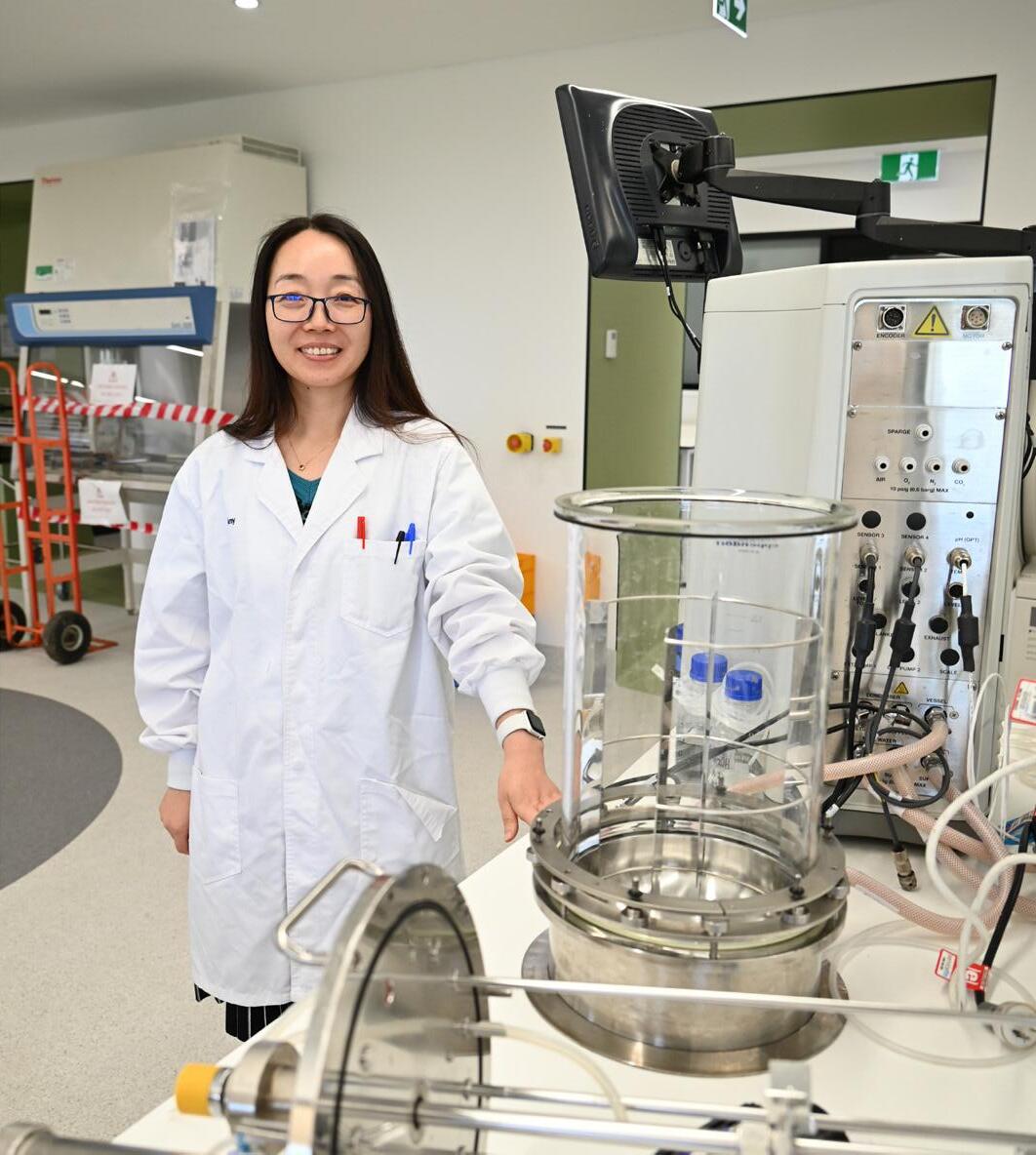


65
Personnel
involved in Program 3 for 2023
Chief Investigators
Prof San H. Thang, Monash
Dr Chris Ritchie, Monash
A/Prof Seher Ata, UNSW
Prof Chun-Xia Zhao, UoA
Prof George Franks, UOM
Prof Erica Wanless, UON
Prof Grant Webber, UON
Dr Susana Brito e Abreu, UQ
A/Prof Liza Forbes, UQ
Prof Yongjun Peng, UQ
Prof David Beattie, UniSA
Prof Marta Krasowska, UniSA
Research Associates
Dr Tina Hsia, Monash
Dr Aditya Ardana, Monash
Dr Guangze Yang, UoA
Mr Shankar Devkota, UoA
Dr Josh Willott, UON
Dr Wonder Chimonyo, UQ
Dr Amir Beheshti, UniSA
Dr Piotr Pawliszak, UniSA
PhD Students
Mr Yuxi Liu, Monash
Mrs Samadhi Fernando, Monash
Mr Danesh Perera, Monash
Ms Alisha Debas, Monash
Mr Matthias Orchard, UoA
Ms Yang (Sabrina) Yang, UoA
Miss Yang (Jessica) Li, UoA
Ms Sonia Khandaker, UON
Ms Rupinder Kaur, UniSA
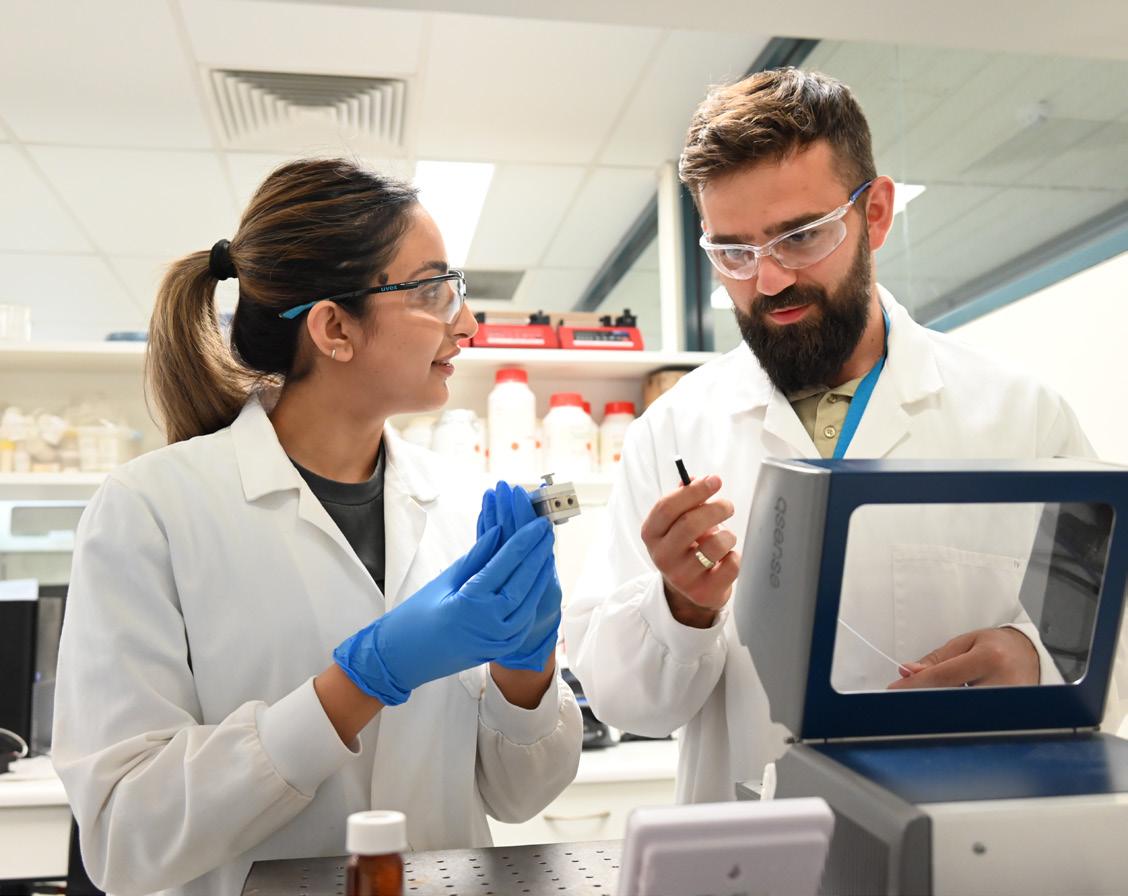





66
PhDs Ricky Zhao and Matthias Orchard (UoA)
PhD Rupinder Kaur and ECR Dr Piotr Pawliszak (UniSA)
PhD Yuxi Liu (Monash)
PROGRAM 3: PROJECT SUMMARIES
New Engineered Biopolymers and Synthetic Polymers
P3.1 Engineering of Selective Polypeptide and RAFT Polymers
45 Development of bio-polymer collectors for selective flotation of specific minerals
Leader:
Prof Chun-Xia Zhao (UoA)
Key Personnel:
Prof David Beattie (UniSA)
Dr Susana Brito Abreu (UQ)
Prof Marta Krasowska (UniSA)
PhD Students:
Rupinder Kaur (UniSA)
Yang (Sabrina) Yang (UoA)
The project made significant strides in the development of biomolecule-based collectors for selective flotation of minerals. Underpinning this progress is the use of phage display methodologies. This includes identifying peptides with specific binding affinities to REE and noble metals. Notably, our screenings at varied pH levels led to the selectivity in differentiating these elements in different scenarios. The innovative use of machine learning to predict REE-targeting peptides and the development of elastin-like polypeptides for silver ions mark substantial advancements in biomolecular engineering. Practical applications showcased promising results, including the use of fluorescence-labelled peptides for selective binding in real mineral samples and the initiation of peptide-functionalised beads for efficient REE separation. Further toward application relevance, comparative studies on in situ detection of adsorption (amount, affinity, and reversibility) have been undertaken for peptides on hydrophobic surfaces, oxide surfaces, and clay surfaces, using spectroscopic and gravimetric techniques.
46 Development of RAFT polymer collectors for selective flotation of specific minerals
Leader:
Prof San H. Thang (Monash)
Key Personnel:
Prof Erica Wanless (UON)
A/Prof Liza Forbes (UQ)
PhD Student:
Sonia Khandaker (UON)


Alpha-tocopherol (Vitamin E) is found in various foods and oils. Vitamin E, a hydrophobic compound with a hydroxyl group is therefore highly applicable for the development of various bio-inspired reagents in this project to improve the froth flotation process. The addition of various chain length polyethylene glycol (PEG) to Vitamin E yields novel reagents with frothing properties. Further functionalisation of the PEG-incorporated Vitamin E led to dual-property reagents, examples include xanthate-functionalised collectors targeting chalcopyrite particles, hydroxamic and phosphoric acid-functionalised collectors targeting rare earth elements (in collaboration with UON). The Vitamin E xanthate collectors were also utilised for oil-in-water emulsion stabilisation, demonstrating prolonged stability compared to potassium amyl xanthate (in collaboration with UOM). In addition, incorporating Vitamin E into RAFT polymer produced controlled polymers double the adsorption capacity compared to commercial polyacrylamide collectors when targeting hematite (in collaboration with UON).
67
LEADER & KEY PERSONNEL PROJECT
NO TITLE
SUMMARIES
47 Development of bio-polymer reagents for achieving hydrophobic flocs from hydrophilic clays

Leader:
Prof Grant Webber (UON)
Key Personnel:
Prof Chun-Xia Zhao (UoA)
Prof George Franks (UOM)
PhD Student:
Matthias Orchard (UoA)
Developing effective and efficient methods for the dewatering of clay suspension waste streams is a significant challenge for the minerals industry. Flocculants are used to generate large aggregates that settle rapidly to increase throughput. Traditional flocculants, however, are non-specific in their action and create high voidage beds that retain large quantities of water. This project aims to develop novel bio-inspired flocculant that can be tailored to bind to specific clays, irrespective of positive or negative charge surface chemistry, and can be manufactured sustainably in large-scale quantities. To date, a number of DNA sequences of peptides have been identified that exhibit strong and specific binding to various clay types in small scale tests. Testing of these bio-flocculants with clay suspensions has begun, including measuring adsorption isotherms and characterising suspension stability.
48 Development of RAFT polymer reagents for achieving hydrophobic flocs from hydrophilic clays
Leader:
Prof San H. Thang (Monash)
Key Personnel:
Prof Grant Webber (UON)
Prof George Franks (UOM)
PhD Student:
Danesh Perera (Monash)
This project is dedicated to the synthesis of well-defined RAFT polymers using bio-based material cardanol (cashew nut shell oil), serving as innovative agents for aggregation, agglomeration, and flotation across various initiatives within the Centre. Additionally, the project encompasses the development of a unique cardanol-based collector for haematite flotation, featuring the oleate (R-COO- Na+) functionality. Within this endeavour, a dual-capability RAFT polymer has been synthesized, which can function as collector and flocculant. To enhance selectivity towards chalcopyrite, the polymer has been incorporated with a novel acetylcarbamothioate (-O-C(=S)-NHCO-CH3) functionality. The bi-functional RAFT polymer is explored in comparison to a xanthate-based polymer with identical molecular weight and hydrophobicity provided by the cardanol moiety. All these efforts are focusing to advance the understanding and utilisation of RAFT polymers in mineral flotation processes.


68
PROGRAM 3: PROJECT SUMMARIES
New Engineered Biopolymers and Synthetic Polymers
P3.2 Hydrophobic-Hydrophillic Switching of Proteins and Synthetic Polymers
49 Development of stimuli responsive biopolymers for controlling froth stability
Leader:
Prof Chun-Xia Zhao (UoA)
Key Personnel:
Dr Chris Richie (Monash)
Dr Susana Brito Abreu (UQ)
Prof David Weitz, AI (Harvard)
PhD Student:
Yang Li (UoA)
50 Development of stimuli responsive RAFT polymers
Leader:
Dr Chris Ritchie (Monash)
Key Personnel:
Prof George Franks (UOM)
Prof Yongjun Peng (UQ)
A/Prof Seher Ata (UNSW)
PhD Students:
Samadhi Fernando and Yuxi Liu (Monash)
51 Development of stimuli responsive RAFT polymers for controlling froth stability
Leader:
Prof Yongjun Peng (UQ)
Key Personnel:
Prof San H. Thang (Monash)


Surfactants play a crucial role in mineral flotation. However, traditional chemical-based surfactants often pose significant environmental and health risks due to their non-biodegradability, toxicity, and persistence. To address these challenges, bio-inspired surfactants have emerged as promising alternatives, characterised by their well-defined compositions, biodegradability, biocompatibility, and the ability to finely adjust their functionality by modifying the amino acid sequence. In the past, we present a comparative analysis of traditional foaming agents for froth flotation – methyl isobutyl carbinol (MIBC), dipropylene glycol (DPG), and di(propylene glycol) methyl ether (DPM) – alongside biosurfactants – a bio-inspired peptide surfactant known as AM1 and a protein-based surfactant named DAMP4. Additionally, the pH- and metal ion-responsive properties of these biosurfactants categorise them as an innovative class of smart materials, broadening their potential applications. Our research findings offer fresh insights into the prospective use of these biosurfactants in diverse fields, providing a sustainable and eco-friendly alternative approach to the mineral processing.
In the mining industry, chemical reagents play a crucial role in the processing of ores. However, as ore grades decline and ores become more complex, there is a growing need for environmentally friendly chemistries that can improve existing approaches and produce particles with desired physicochemical properties. This challenge has prompted the exploration of bio-inspired chemical motifs found in pigments, leading to the successful synthesis of materials with varying hydrophobicity and molecular weights. These materials exhibit responsiveness to stimuli like pH and light, while also acting as selective collectors for clay minerals. Ongoing research aims to investigate the potential of these reagents as versatile solutions that can simultaneously facilitate the flocculation and froth flotation of fine particles.
Traditional amine collectors are generally utilised in industry during reverse iron ore flotation to separate gangue minerals like quartz. These amines, however, encounter challenges including excessive frothability and poor selectivity, limiting flotation separation efficiency. This project explored alternative surfactants, including RAFT block copolymers, highlighting their potential as selective substitutes for dodecylamine (DDA). A series of new commercial amine derivatives developed by Nouryon were investigated to manage frothability without affecting impartation of mineral surface hydrophobicity compared to DDA. The results showed that despite relatively similar flotation recovery, an ester functional group (R-C=O) on monoamine molecular structure matrix introduced an optimal polarity ranking which governed the underlying molecular interactions and restricted propensity for frothing in comparison to ether group (R-C-O-) or DDA. The project showcased great capability of the molecular structures identified in controlling frothing without compromising flotation performance during reverse iron ore flotation. The molecular structures may also be used to replace traditional amine collectors in the flotation of other commodities.
69
NO TITLE LEADER & KEY PERSONNEL PROJECT SUMMARIES
STRATEGIC EVOLUTION TO RESEARCH THEMES IN 2024
The Centre is transitioning from ‘Research Programs’ to ‘Research Themes’ in 2024
Context
During the first half of the Centre the ‘Research Projects’ were assembled according to three ‘Research Programs’ for the purpose of building the science base of the Centre. Individual projects were aligned with typically one or more of the thematic objectives of the Centre, ensuring the research retained a strong industry relevance. The Centre Research Programs were:
1. Physics of Novel System Hydrodynamics
2. Chemistry of Novel Hydrophobic and Selective Interactions
3. New Engineered Biopolymers and Synthetic Polymers
During 2023 the Centre Executive, with advice from the Advisory Board and International Advisory Panel, reviewed the progress of the Centre’s three Research Programs and Projects, identifying impressive progress within each of the research programs. What was needed, however, was more vertical integration of the science programs into the research projects to address the thematic objectives more directly. For example, within a given project the opportunities arising from the new chemistry could be fed directly into the reagent delivery systems which could in turn be introduced into the novel hydrodynamic separators.
The Centre’s Executive, Board and Panel agreed that the research program should be restructured and that the new projects, consisting of a more
complex and integrated science base, should be aligned with the original thematic objectives, now referred to as the Research Themes. This approach would help drive innovation, support the interdisciplinary research, discovery, development and transfer of the technology more effectively. This change facilitates the next major phase of the Centre.
Introducing 2024 Research Themes
In 2024 the Centre’s science-based Research Projects will have a theme-based purpose aligned with the original thematic Centre Objectives:
1. Removal of waste ore at coarse particle sizes to pre-concentrate the ore, and hence reduce energy consumption in grinding hard rock and water losses to tailings
2. More efficient processing of fine particles to maximise resource recovery and concentrate the product to reduce emissions during downstream processing
3. More effective solid-liquid separation to recover more water and ultimately eliminate tailings dams
The research undertaken in the first phase of the Centre was based on an integrated research program aimed at building each of the science components with reference to the thematic objectives. This phase was necessary for creating the so-called green shoots in preparation for this new phase. We had not planned for this change, it was a natural evolutionary step, now seen as ideal for exploiting the Centre’s advances. This approach allows much more meaningful and
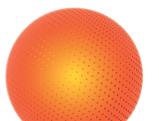
purposeful conversations to proceed within our interdisciplinary mix.
The three new Research Themes are described on the following page and include their 2024 objectives.
Laureate Professor Kevin Galvin



Research Themes and 2024 Objectives
Research Theme 1: Early Gangue Rejection
Research supporting Research Theme 1 is focused on the recovery of minerals at coarse particle sizes, while rejecting liberated and near-barren gangue particles.
Success should lead to lower tonnages for grinding to finer particle sizes to achieve mineral liberation, thus minimising energy (and water) consumption in primary comminution circuits. The efficacy of this approach will always be a function of ore mineralogy (primary grain size of mineral phases and associations). The ability of comminution technologies to produce sufficient surface exposure of value minerals for bubble-particle attachment in coarse particle flotation also depends on the hydrodynamic environment for the recovery of coarse-composite, bubble-particle aggregates. Appropriate analytical methods are required to interrogate bulk and surface properties of particles produced from comminution, classification, and concentrate/tailings streams.
Projects will examine breakage mechanisms accessible by physical (compression, shear) approaches, and strategies exploiting differential properties of mineral phases (e.g. High Voltage Pulse (HVP) and GRolls® technology) in ores –coupled with 2D and 3D characterisation of bulk/ surface liberation and chemical heterogeneity, at micron scales. Beneficiation technologies, exploiting controlled hydrodynamic conditions in flotation (e.g. HydroFloat, coarseAIR™ technologies, etc), density/gravity (e.g. Sink-Hole Fluidiser technology), selective agglomeration and wet vs dry electrostatics will be investigated.
Novel methods to assess coarse particle flotation will need to be developed to help improve the translation of these technologies to the industry. Furthermore, new reagent molecules, their wetting, spreading and adhesion, including delivery and adsorption mechanisms will be studied, along with their capacity to perform different functions in response to manipulating pulp conditions.
Objectives for Research Theme 1 in 2024 include:
Investigating the bulk/surface liberation of comminution products from HVP and compression/shear GRolls® technologies
Correlating 3D mineralogy with flotation performance of coarse, composite particles
Building scope of knowledge on the upper and lower recovery limitations of fluidised-bed flotation as a function of particle size, surface liberation and cell parameters
Exploring the application of Time-of-Flight Secondary Ion Mass Spectrometry (ToF-SIMS) in mineralogical analysis below 10 micron scales
Investigation of improved recovery of coarse composite particles using novel emulsion collectors with controllable spreading
Detailed investigation of the effect of surface forces on the attachment and spreading of oil droplets at mineral surfaces
Detailed investigation of the influence of collector addition either through the solution phase (conventional) or through the gas phase (novel) within a lab scale fluid bed flotation cell
Evaluation of coarse particle flotation systems supported by effective and accessible ways to benchmark the flotation performance
Dry separation of coarse particles will be investigated using the sink-hole fluidiser supported by Discrete Element Modelling

Research Theme 2: Fine Particle Separation
Research supporting Research Theme 2 is associated with developing rapid and efficient beneficiation technologies aimed at minimising the loss of high-value minerals, achieved through advancements in fine particle beneficiation to optimise resource recovery and product grade.
This Theme will harness various new biomolecules and RAFT polymers (developed in Program 3 research, during the first half of the Centre) to selectively bind and separate fine particles through multiple pathways including froth flotation, and agglomeration. Additionally, novel systems will be developed to deliver reagents to particle surfaces, enabling precise control of their hydrophobicity for collection via flotation or ultrafast agglomeration.
Ultrafine metal oxides including cassiterite, alumina, manganese dioxide and hematite are very difficult to beneficiate and are therefore often discharged to tailings dams. The so-called ‘slimes’ increase the suspension viscosity, making both gravity separation and flotation problematic. These problems are currently intractable but will be addressed directly using combinations of new technologies developed by COEMinerals. New advances in gravity separation utilising the Graviton to remove the ultrafine slimes, and changes to the REFLUX® Classifier (RC™) are providing solutions to these challenges. This work is likely to advance to the validation stage on mine sites from 2024.
The innovative agglomeration technology
XtractOre™ will be further refined to enhance the recovery and concentration of fine particles. Fundamental inquiries into the agglomeration process, such as understanding the permeability of oil films and strategies to minimise oil consumption, will be investigated.
71
Multiphase Discrete Element Method (DEM) coupled with Computational Fluid Dynamics (CFD) models will be developed to study fine particle aggregation, providing valuable insights into mechanisms, and guiding the development of improved aggregation reagents.
Moreover, new computational tools, combined with artificial intelligence and machine learning techniques, will be leveraged to expedite the design of novel polymer and biomolecule-based reagents for fine particle separation. Through these concerted efforts, Research Theme 2 aims to revolutionise the field of fine particle separation, paving the way for more efficient and sustainable mineral processing practices.
Objectives for Research Theme 2 in 2024 include:
Exploration of the key roles of peptides including RAFT polymers in selective binding to mineral particles, and investigating the impact of particle size on their interaction with biomolecules
Exploration of the recovery strategy of biomolecules with selective binding to mineral particles
Demonstrating the specific selectivity and mineral particle recovery using real mineral particles
Exploration of computational and artificial intelligence (AI) methodologies for accelerating the discovery of biomolecules with selective binding
Systematic investigation of the role of polymer molecular weight and shear rate on the selective aggregation of chalcopyrite from quartz
Investigation of the flotation of chalcopyrite with conventional and novel polymers (sourced from Program 3 research) including selectivity from pyrite
Characterisation and improved understanding
of entrapment of gangue particles in aggregates of valuable minerals
Investigating the fundamentals of flotation kinetics within the downcomer utilising well defined flow fields to build an integrated model to address selectivity
Investigating the benefits of ultrafine desliming to address challenges in flotation and gravity separation
Advancing ultrafine physical separation to maximise the recovery and concentration of metal oxides
Research Theme 3: Solid-Liquid Separation
Research Theme 3 aims to improve the efficiency of solid-liquid separations in order to recycle more water during the process, reduce the amount of water and solids going to tailings waste, and to make those tailings safe to store by dry stacking, ultimately to eliminate the need for tailings dams.
The centre aims to reduce water consumption in mineral processing, improve the safe storage of tailings, and enable the elimination of tailings dams.
Understanding of how different reagents and delivery systems influence the size, density and water content of aggregates is crucial to designing efficient solid-liquid separation technologies. New chemical reagents including biopolymers and RAFT polymers will be developed for improved operation as we continue to learn more about how the polymer chemistry influences functionality and performance. This new chemistry is part of the solution to the problem.
The other part of the solution is the development of new technologies to recover the water and make the tailings dry. The theme will develop the new equipment based on initial discoveries made in Research Program 1 over the first half of the Centre. These include further development, scale up and transfer to industry of the HPDR technology,
and the new pelletisation apparatus also developed during the first half of the Centre.
Further work using novel reagent delivery systems to enable the bulk of the fine tailings to be recovered using froth flotation will be investigated. The Graviton offers the potential to separate the tailings into two portions, one which is coarser than 10 microns, which is easy to dewater, and the portion finer than 10 microns, which is responsible for liquefaction, and very difficult to dewater. This fine portion will have a relatively small volume and could be processed using new polymers directly in a thickener or by fast flotation. The concentrate would then be processed using an agglomeration or pelletisation technique ahead of the HPDR to produce dry stackable material.
Objectives for Research Theme 3 in 2024 include:
Scale-up of the emulsion pelletisation process and assessment for commercialisation
Full-scale models and designs for the HPDR together with a detailed technoeconomic evaluation of the technology. This will aid discussions on commercialisation opportunities with potential manufacturers and end-users
Development of a processing scheme to recover aggregate tailings via froth flotation
Investigation of novel reagents that promote the aggregation of ultrafine particles for dewatering
Investigation of the influence of oscillatory pressure fluctuations on water migration
Investigation of the relative merits of centrifugal versus pressure driven segregation in solid-liquid separation


Verbinding Связь








Hubungan Conexão Sambandham Umoja Koneksyon Yhteys bağlanti
Kubatanidza Ka bom Songjog Connection Связь Hubungan Conexão Sambandham Umoja Koneksyon Yhteys bağlanti සම්බන්ධතාවය Ka bom Songjog Connection Verbinding Hubungan Conexão Sambandham Umoja Koneksyon


The hashtag activity continuted for the Centre’s 2023 Annual Conference with the ‘#Whoarewe’ and ‘what are you connected to?’ The aim was for members to find new connections.









Yhteys bağlanti සම්බන්ධතාවය Kubatanidza Songjog Connection Verbinding Связь Conexão Sambandham Umoja Koneksyon bağlanti ම්බන්ධතාවය Kubatanidza Ka bom Songjog Connection Verbinding Связь Hubungan Conexão Umoja Koneksyon Yhteys bağlanti ම්බන්ධතාවය Kubatanidza Ka bom Songjog Connection


ම්බන්ධතාවය







OUR PERFORMANCE 2023 Highlights 75 Operations Overview 77 Gender Equity Diversity and Inclusion 79 Signature Lecture and Seminar Series 80 Future Leaders in Focus 81 Centre Outreach 85 Training and Mentoring Overview 87 Communications and Media 88 Publications 89 Financial Statements 92 COEMinerals 2024 Plans 93 Our Centre in Pictures Peek into some of our labs 95 97 Glossary of Terms 99 74 Sambandham ම්බන්ධතාවය Connection Verbin Umoja Kubatanidza Verbinding Связь Koneksyon Kubatanidza Ka Hubungan Yhteys Songjog Conexão Samban ම්බන්ධතාවය Connection Verbindin
2023 HIGHLIGHTS

77 Internode Visits
- 46 research related
- 31 relationship building
Media Coverage
17 x Media articles and interviews featuring COEMinerals members, innovation or technology
4 x visits from COEMinerals Panel and Board Members
4 x visits from International Partner and Associate Investigators
9 x Mine site/
industry site visits
Conference Participation
14 x Keynote speakers

52 x Conference presentations
12 x Poster presentations
5 x Conference organisers
5 x Session chairs
Schools Education
Outreach
800+ primary and high school students ‘inducted’ to Magic Minerals along with 70 primary and high school STEM teachers
17 x Awards/ prizes/promotions/ Fellowships and other milestone moments
5 x PhD 3MT finalist/ winners
Centre Website
9,000 page views
248 view of 2022 annual report
2,800 new website user (200 of those via social media channels)

7 x Centre event sponsorships

75
8 x COEMinerals organised conferences/ workshops

$1,074,166 of funding awarded to COEMinerals members
25 x International Institution visits by COEMinerals members
3 x Journal editorships
Centre-organised event: International Flotation Symposium - 130 attendees (national and international)
15 x Government enagement interactions
8 x visting delegation visits to Centre Nodes

8 x new PhDs
3 x PhD internships/work experience
LinkedIn
150+ LinkedIn posts garnering
10,000+ responses
850 LinkedIn followers (630 new in 2023)

16,000 post impressions
4% engagement rate
Twitter (X)
76+ Tweets
161 followers
10 x Committee memberships
76
OPERATIONS OVERVIEW
I’m always in awe at the research we do in the Centre.
As the administrative leader of a large and complex Centre of Excellence across nine universities, with more than 120 members I do not claim to know all of the science. However when I talk to, or go on lab tours with our amazing Future Leaders, and they explain their research in ‘simple terms’ and with such passion and excitement, it is hard not to be swept up by their enthusiasm and emotions. I also get a first-hand understanding of how the Centre is addressing real world challenges and come to the conclusion that our members really do get to work on some cool projects!
Communications Officer Kim Stockham and I have a lot of fun when we visit Centre nodes. It is wonderful to spend time with members. A core aim of visiting each node is to get to know our Centre members better in a relaxed environment, where some may feel more comfortable sharing experiences. We also remind members of the
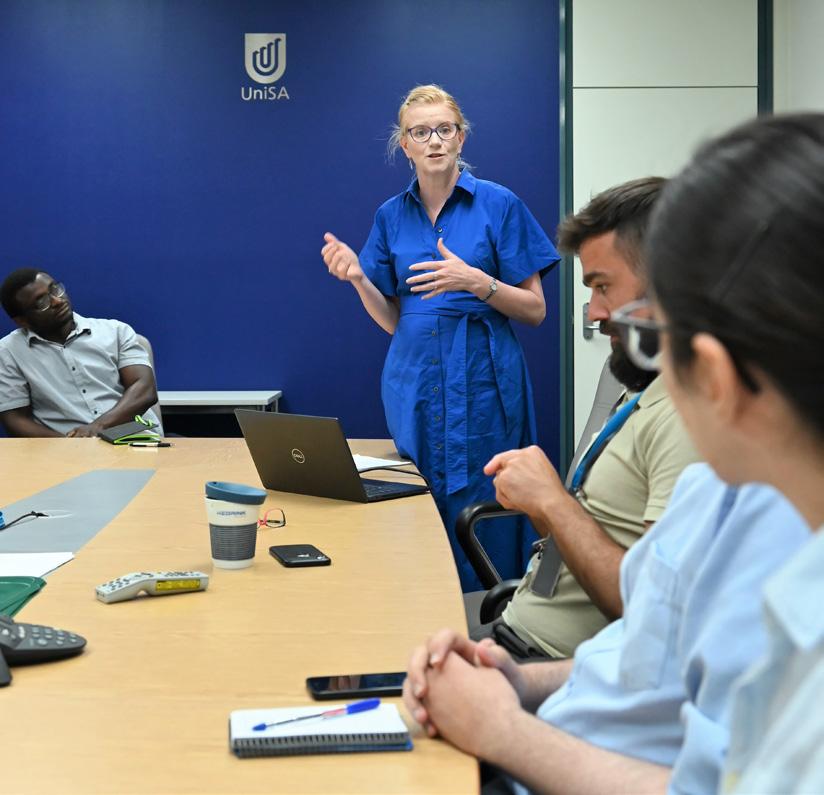

must-dos, top up any missed training and elevate the operational priorities of the Centre. This ensures everyone is ‘on the same page’ and pulling in the same direction. We also unearth some great personal stories to help fuel Centre brand-building.
We always take the opportunity to encourage and celebrate Future Leaders’ participation in Centre activities, such as school outreach and even public speaking, which we believe are exceptionally important as they build confidence, represent the Centre to wide ranging audiences and make their own career-building connections.
COEMinerals conference
In July we held our annual COEMinerals face-toface conference, a three-day event at Newcastle Conservatorium this year and hosted by CI Prof David Beattie (UniSA). At our event, we were honoured by the presence of IAP members, Prof Cyril O’Connor (who gave the opening address) and Dr Martin Rudolph. To start the conference a beautiful Welcome to Country was given by Aboriginal Elder Aunty Cheryl .
The program included GEDI group work (lead by Dr Ellen Moon) directly linking to the conference theme of making ‘Cultural Connections’. Getting to know each other’ activities incorporated last year’s #whoarewe activity, with the 2023 addition of ‘connection’. Here we encouraged members to find new connections that they may not have known existed, for example, scientific, cultural or community connections.
One of the biggest event highlights was the inclusion of a ‘Cultural Immersion’ Aboriginal weaving session by local indigenous organisation Speaking in Colour. A whole team event, we learnt about traditional Aboriginal weaving,

its historical cultural significance as well as its relevance in contemporary society and created our own individual woven keepsakes and piece for a collaborative Centre artwork designed by Speaking in Colour.
There were also activities designed to build ‘life skills’ (sometimes called ‘soft’ skills) along with 3MT®-style presentations, technical talks and responsible research training elements. Our amazing School Education Outreach group trained all PhDs and ECRs on the delivery of ‘Minerals Magic’ activities, so members in all nodes could confidently deliver this locally to school students. While our CIs and MCRs (as a suggestion from IAP) attended a TRL overview. The conference dinner at Fort Scratchley was organised by the Future Leaders who conducted ‘Cultural Trivia’. It was a fun night, full of laugher, and also educational, as we learnt more about all of the many amazing communities, cultures and backgrounds of our diverse membership.
The program also included a mentoring career development component for PhDs and ECRs, where industry and academic mentors shared resume and interview tips relevant to research or industry career paths. Mentors re-enforced the importance of having work experience, getting involved with outreach and building a professional network. Since then, it has been very rewarding to see some of our
77
PhDs moving into internships or industry jobs; and gaining feedback from interviewers about the value of their Centre-driven experiences, including on-site work experience, community and charitable service, their personal commitment to delivering environmental outcomes and being part of a diverse and inclusive workplace.
International Flotation Symposium
The International Flotation Symposium (IAS), also held at Newcastle Conservatorium in July, honoured L/Prof Graeme Jameson AO and further connected our team to global experts in mineral processing. By all feedback measures it was a great success. An unconventional highlight was by a concert pipe organ interlude performance by former Chief Scientist of Australia, Prof Robin Batterham AO.
Other visitors and collaborators in 2023
There was an influx of Centre international PI visitors in 2023 keen to learn more about our incredible work, including Prof Zhenghe Xu (SUSTech, China), Prof Robert H. Davis (Uni of Colorado Boulder) and AI Prof Roe-Hoan Yoon (VirginiaTech). Beyond Cyril and Martin, as mentioned above, we also had the pleasure of face-to-face visits from IAP member Barun Gorain (Ore2Metal Inc) and Advisory Board Chair, Prof Simon Biggs (VC JCU). In addition, we welcomed ARC representative Prof Steven Weller to the IFS, along with some of the world’s leading flotation-science / mineral processing experts from institutions and industry, who toured the Centre’s labs and learnt of our work as part of the program. Some, like A/Prof Kirstin Corrin (Uni of Cape Town) staying beyond the event to spend more time with our team.
Regularly welcoming government and clean energy / sustainability representatives is a highlight.
The Centre also actively encourages and enables internode research and collaboration visits between
members; celebrated via our LinkedIn social channel.
As you will read in the following pages, our Centre Outreach, GEDI initiatives, Training and Mentoring and Signature and Seminar Series lectures enhance learning opportunities at the Centre, inspire and inform the team about wide ranging related topics to their work and help them make connections and build community spirit.



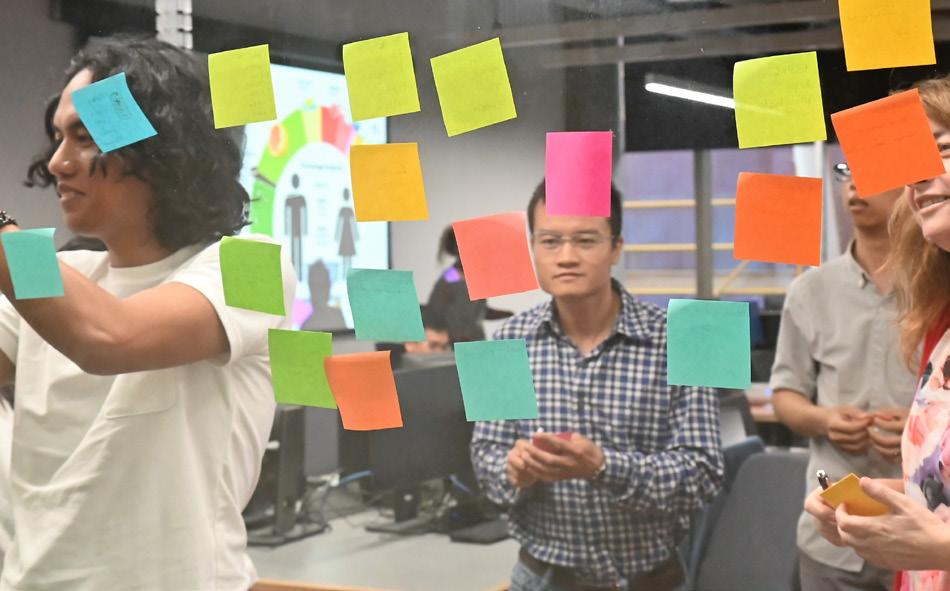
















































































78
L/Prof Graeme Jameson AO and Prof Robin Battereham AO
Annemarie Fawkner Centre Chief Operations Officer
Welcome to Country by Aunty Cheryl Smith
Our Future Leaders ready to welcome our IFS attendees Workshop during UQ Node visit
GENDER EQUITY DIVERSITY AND INCLUSION
The Centre is committed to fostering an inclusive and equitable organisational culture.
In 2022 we laid the foundation for the Centre’s Gender Equity Diversity and Inclusion (GEDI) work with a theme of ‘inclusion’, and in 2023 we built on that with a theme of ‘making connections’.
Connections are often best built in-person, and so we took the opportunity at the Centre’s Annual Conference to learn more about each other as people as well as scientists. In response to member feedback, one of the areas of connection we explored in depth was cultural connections, with a view to learning about and celebrating the cultures both within and outside of our Centre. We delivered on this in multiple ways including small group discussions and a PhD-organised fun session of trivia night where we all learnt more about each others’ cultures, from foods and places of significance, to what culture meant to each of us.
A highlight was a visit from the team at ‘Speaking in Colour’, who, through a hands-on lesson in Aboriginal weaving taught us about Aboriginal history in the Newcastle region and shared their
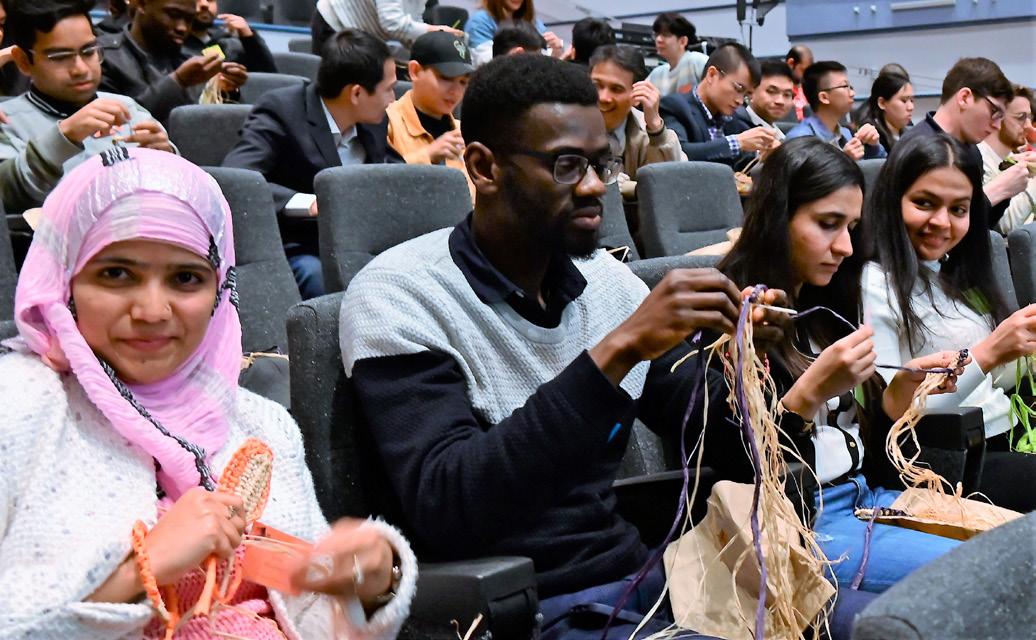
own experiences of Aboriginal culture.
Each node also supports activities locally to engage the team, build a community and celebrate Centre teamwork, as well as cultural and personal milestones, which are often also shared on the Centre’s LinkedIn social channel with our wider online community.
We are also driving inclusion and understanding associated with mental health and well-being, for example supporting ‘R U OK?’ and ’Movember’ charitable cause support, where our ‘Mo-team’ raised more than $1,600.
We help foster connections between Women in STEM in many ways, including supporting attendance at mineral sector networking events, such as International Women’s Day (IWD). We proactively highlight women in STEM on Centre social channels and reflect this gender equity across other programs, including school outreach, mentorship activities, Signature Series speakers and more.
Behind the scenes, the GEDI Committee has been delivering on aspects of GEDI activity developed last year in support of the Centre’s strategic plan. Acknowledging the complexities associated with GEDI-related actions we wished to tackle, we sought external expertise to guide us in key areas. We also worked on building a GEDI SharePoint site to house key GEDI information, Centre guidelines and policies, as well as being a space to recognise and celebrate the non-work aspects of member identities. We intend to finalise this for roll-out in 2024.
Dr Ellen Moon Leader, COEMinerals GEDI Committee


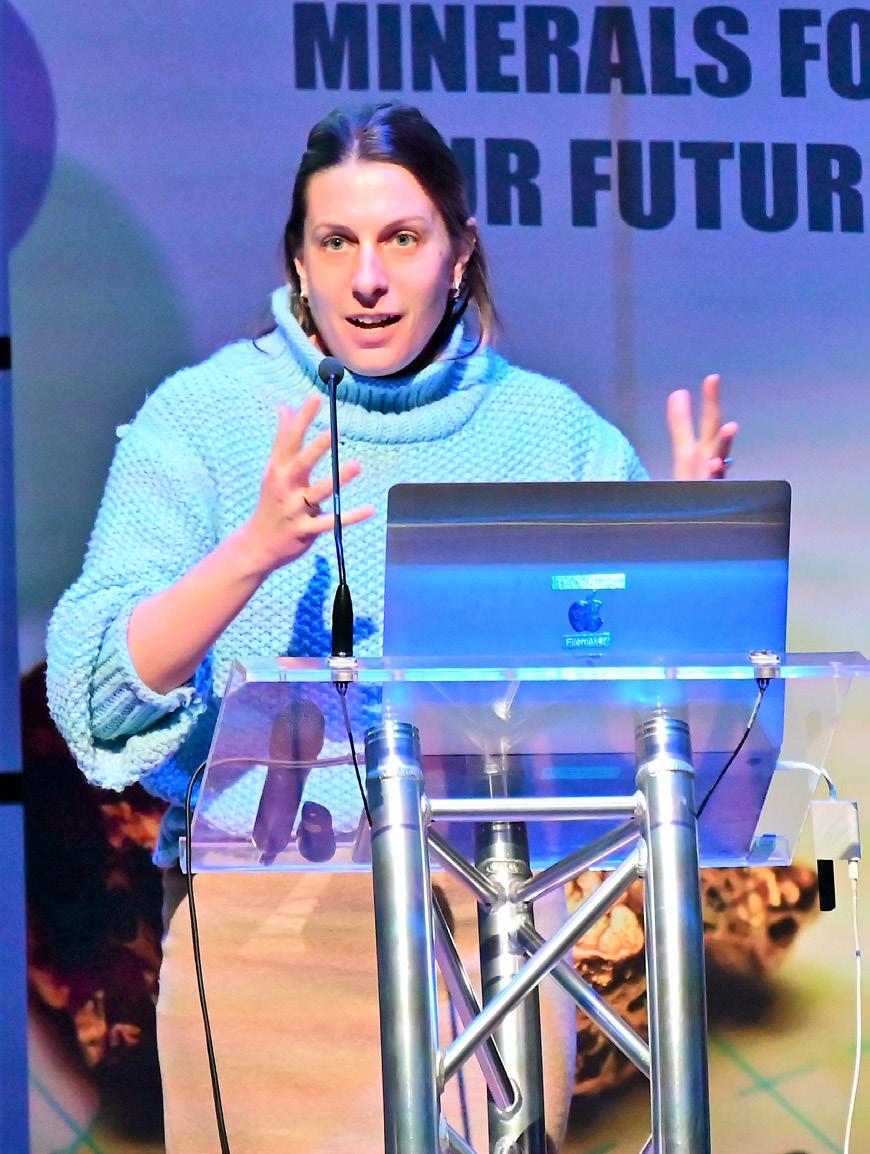

79

SIGNATURE LECTURE AND SEMINAR SERIES
CI Prof George Franks (UOM) coordinates COEMinerals Signature Lectures and Internal Seminars and is master of ceremonies.
Signature Lecture Series
Invited eminent scientists or industrialists from around the globe join COEMinerals team members to deliver a topic update via the Centre’s prestigious Signature Lecture Series. These lectures enable Centre members and other interested parties to join a video-call presentation to learn from and engage with research and industry experts from Australia and around the world. Speakers are well-respected and internationally acclaimed. They each explore a topic relating to modern mineral processing, spanning the technical to the philosophical, as well as incorporating community insights and providing context to wider challenges in solving aspects associated with creating sustainable change and circular economy. In this friendly forum, speakers tend to share their personal views and spur curiosity, questions and new ideas from attendees.
Signature Series lecture topics in 2023 included a long list of latest scientific learnings, minerals industry updates including sustainability progress insights, and pro-tips for careers in the minerals sector.
Internal Seminar Speakers in 2023:
22 Feb Dr Dusan Ilic and PhD Erhan Noyan Palabiyik (UON)
8 Mar Dr Casey Thomas and PhD Yuxuan Luo (UOM)
22 Mar Dr George Abaka-Wood (UniSA) and Dr Ellen Moon (Deakin)
5 Apr PhDs Thao Nguyen and Candice Brill (UQ)
31 May Dr Nqoc Nguyen (UQ)
14 June Dr Lucia Dzinza (UQ) and Dr Milin Shah (Curtin guest co-speaker)
9 Aug Dr Tina Hsia, PhDs Yuxi Liu and Samadhi Fernando (Monash)
20 Sept Dr Negin Amini (Deakin) and Dr Piotr Pawliszak (UniSA)
4 Oct PhD Matthias Orchard (UoA) and Dr Subhashish Mitra (UON)
15 Nov Prof David Beattie (UniSA)
Signature Lectures in 2023:
19 Apr - Eleonore Lebre, Sustainable Minerals Institute, University of Queensland, Complex orebodies - Using spatial data to understand the ESG context around mining projects
3 May - Rebecca Siwale, Gender Diversity, Equity and Inclusion and Craig Wilson, Industry/University Relationships, FLSmidth
17 May -Amy Lamb, Challenges for Innovative Process Development in Mining, Rio Tinto
28 June -Mari Lundström, Minerals, batteries and energy transition, Aalto University, Finland
26 July - Jun Oshitani, Dry separation based on float-sink and density segregation in a gas-solid fluidised bed, Okayama University of Science, Japan
6 September - Ricardo Jeldres, Exploring Flocculation Behavior of Clay-based Tailings in Seawater and Low-Quality Waters, Universidad de Antofagasta, Chile
29 Nov - Cyril O’Connor, Review of important developments in flotation chemistry since the 1st International Mineral Processing Congress in 1952 and challenges and opportunities for the future, University of Capetown, South Africa
13 Dec - Diana Drinkwater, Developing a New Generation of Mineral Processing Professionals, Metcelerate
Internal Seminar Series
Each month the Centre provides short-seminars (about 20 minutes in duration) that deep-dive scientific progress of Centre researchers. They contain highly technical details of the projects to a COEMinerals internal audience, making them quite different to Signature Lectures. The added-value of these seminars is the lively scientific debate generated about the research presented, which spurs follow-up connections and conversations between members and nodes.



80
FUTURE LEADERS IN FOCUS
Beyond providing world-relevant problemsolving research opportunities, we create and support wide-ranging opportunities for PhD and ECR researchers to build their personal and professional skills and experience to help nurture the development of these future leaders. Feedback and insights from Centre PhD and ECRs follow.
Future Leaders Committee overview
The COEMinerals Future Leaders Committee (FLC) comprises of PhDs and ECRs. It serves, connects and represents the interests of all Centre PhDs and ECRs to the COEMinerals leadership team. The group plays a leading role in building personal networks across nodes, as well as advocating for training to specifically address the areas of professional development important to the PhD cohort and ECR members.
A major project from the FLC in 2023 was the finalisation of the ‘Minerals 102’ lecture series delivered by Dr Simon Iveson (UON). The committee provided feedback on both the structure and topics of the course, and regularly collected this feedback from PhDs and ECRs through the year.
The Committee also had a key role in setting up, managing attendee registration, and organising social events at the annual COEMinerals Annual Conference as well as the International Flotation Symposium held in July. The Committee also encouraged and supported the mentoring program, in particular, the Human Resources (HR) and resume writing workshop section of the Annual Conference.
In addition, the FLC partnered with the Centre’s GEDI committee to organise ‘Cultural Trivia’ for all attendees.
PhD Joshua Starrett
FLC Chairperson, 2023
COEMinerals leadership trainingparticipant feedback
ECR Dr Lucia Dzinza (UQ) participated in COEMinerals’ Leadership Course in 2023, sharing:
“I found the ECR leadership training to be a very useful course. It was informative and interactive. From a researcher’s perspective, it was insightful, and touched on lots of relevant topics including: the importance of focusing on areas of interest as a researcher, including the best ways to get funding/ collaborations, writing papers, how to make the best use of conferences, how to make time for important tasks, how to avoid procrastination, how to deal with perfectionism, the types of distractions we experience in our workspace and how best to deal with them. Overall, I extremely enjoyed being part of the course!”
Collaboration with industry – a PhD and ECR perspective
“Engaging in collaborative work with the industry enhances professional development by providing a unique opportunity to bridge theoretical knowledge with real-world applications, fostering a dynamic skill set that is both relevant and impactful in the evolving professional landscape.”
PhD Sajid Hassan (UOM)
“Participating in a collaborative industry project has refined my skills as an engineer, including tasks ranging from crafting technical reports to adept project management and meeting tight deadlines! We have gained valuable insights helping to identify and address certain design issues as a result. This adds an extra layer of interest to my work. The experience of being among the few females in this equipment development field is not only encouraging, but holds significant personal value as it will help equip me for a role with industry.”
ECR Dr Nilanka Ekanayake (UOM)

Train the Trainers - Minerals Magic group training for PhDs and ECRs on the Centre’s School Educational Outreach Program
81
Industry on-site experiences
PhD Luke Crompton (UON) spent the summer of 2023/24 on-site in a hands-on metallurgy role with gold mining company Evolution Mining in Parkes in NSW (formerly known as CMOC Northparkes). In addition to learning “everything he possibly could” from the metallurgy team while there, he also gained a much wider perspective for research application on-site, as well as a better appreciation of the logistics, challenges and career opportunities on a mine site, including gaining experience about:
Plant shutdown and startup procedures
Inspection and maintenance of plant equipment such as cone crushers, conveyors, SAG and ball mills, cyclones, pumps, mechanical flotation cells, Jameson™ Cells
Sampling campaign to calibrate on-stream analyser equipment and ensure ongoing operator confidence in real-time analyser outputs
Cyclone surveys to quantify the impact of changes to vibrating screen layouts and cyclone vortex finder diameter on final particle size to the flotation circuit
Measurement of reagent dosage to optimise copper recovery and minimise operating costs
Participating in an alarm management campaign to ensure that alarms present at a rate that can be assimilated by an operator subject to their dynamic priority
Regular critical review of plant operation and short term optimisation planning
PhD Siân Parkes (UON) also attended Evolution mine site to present research results on their feed in the RFC, followed by a discussion with several of their team members and an in-depth tour of the mine site. ECR Dr Peipei Wang (UON), PhDs Luke Crompton, Margaret Amosah and Joshua Starrett (UON) were also involved and gave presentations.
PhD Carolina Macarena Carvajal Gutierrez (UQ) visited Evolution in March 2023, sharing that it provided her with, “the opportunity to share my research and get feedback from industrial experts”.
Multiple UON PhDs visited Bayswater Power Station in May 2023
PhD Sonia Khandaker (UON) visited Tomago Aluminium smelter in November 2023, sharing: “Following an introduction by the site manager, I visited their potlines where molten pure aluminium was separated from their oxides. Then we toured the carbon plant, where they produce carbon anodes which are used in their potlines, and the casthouse, where molten aluminium is transferred to holding furnaces to be alloyed into many grades. We also visited the warehouse, where the cast aluminium is stored and ready for shipment, followed by Q&A. It was a productive day. I really loved it and appreciated for being able to attend this on-site experience.”
UON Centre Members visited UNSW Node for a “Virtual Mine site” visit, May ‘23




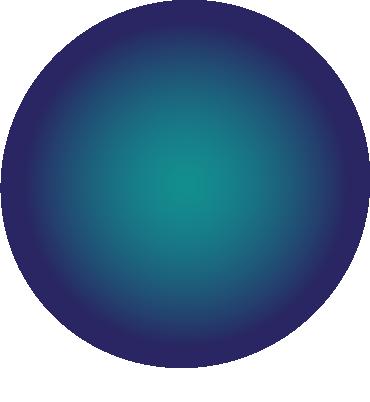

82
UON PhDs at Evolution (previously CMOC Northparkes)
UON node visit to UNSW virtual mine, hosted by CI A/Prof Seher Ata
PhD Carolina Macarena Carvajal Gutierrez (UQ) visit to Evolution

Sector work experience
Yang (Jessica) Li (UoA) interned as a Technical Assistant (Vacation Student Program), Process Team in Santos (Ltd)’s Brisbane office Nov 22-Feb 23, where she used her disciplinary knowledge in chemical engineering to perform process calculations for compressors.
“I employed my understanding of thermodynamics, fluid mechanics and heat transfer to determine the polytropic efficiency, power consumption and polytropic head of the compressors. This allowed me to contribute to the project and develop my technical skills which could be used in my future research with the Centre.”
Jessica encountered several new experiences and challenges associated with the workplace role: “The experiences allowed me to develop new personal skills and strategies. As a process engineer technical assistant, I had to communicate with personnel in various departments such as production and operating teams, each with its own priorities and challenges. To ensure everyone ‘was on the same page’ I employed several communication strategies I learned or have been trained in during the past few years of my PhD with COEMinerals, including making an effort to understand the language and communication style of each department and to communicate in a way that was meaningful. Secondly, I ensured my communications were clear and concise, and followed-up. One of the biggest learnings for me with English as my second language, was the use of slang. Improving my ‘local’ language nuances, through engagement and conversations with

members of the COEMinerals team is definitely helping me build this skill!”
Other experiences :
PhD Joshua Starrett (UON) began a part-time role position with Centre partner FLSmidth while also continuing his COEMinerals research role
ECR Dr PeiPei Wang (UON) engaged closely on research activity with BHP Mitsubishi Alliance (BMA) and Tata Steel (India) in 2023
Business and community engagement
Following a keynote by COEMinerals CI Prof Grant Webber (UON), three PhDs from UON (Meolla Yvon, Joshua Starrett and Siân Parkes) spoke to 100 attendees about and their research during the Business Hunter Energy and Resources Series Luncheon in September 2023. The PhDs wowed the crowd, and fielded questions from the floor as well as ‘working the room’ to make connections with community members, energy/mining business representatives and recruitment firms.
Industry mentorship
ECR Dr Negin Amini (Deakin) embraced the opportunity to build industry mentorship connections in 2023. She shared: “I was lucky enough to be matched with a mentor in the AusIMM program this year, co-ordinated by AusIMM Women in Mining Network Victoria (WIMnet Victoria) and supported by Deepcore Drilling, GHD, Rio Tinto and Global Victoria. I was one of ten early career females working in the minerals industry selected. I had a monthly face to face catch up with my mentor who was a great guidance for me in my career and there were other opportunities to network with professionals in the minerals industry. I also participated in a leadership day with the other mentees which was a standout for me. Two empowering speakers ran workshops for the mentees, teaching us skills and knowledge on how to become better leaders. I highly recommend this program to all females working in any field in the minerals sector as it is quite rewarding.”
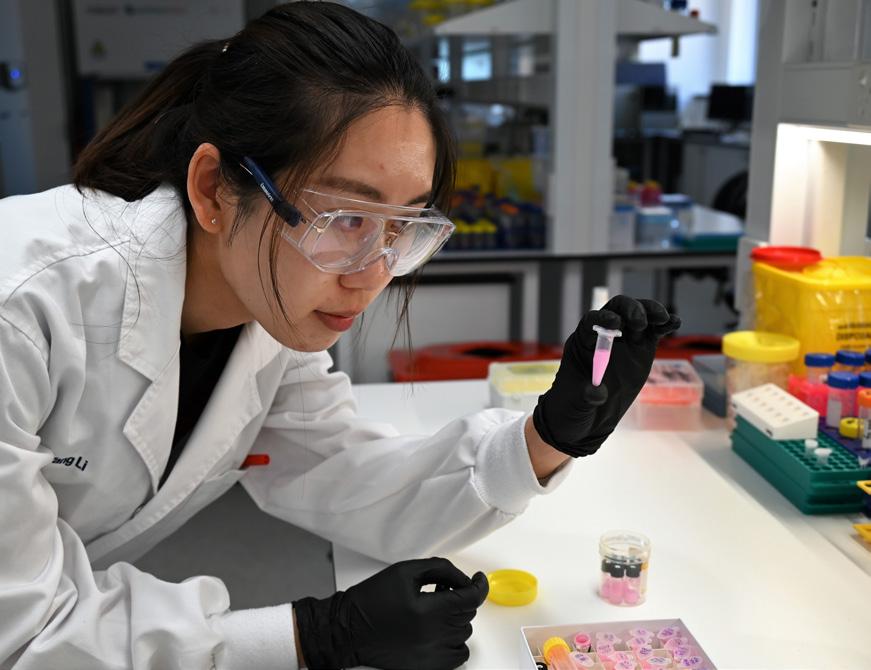
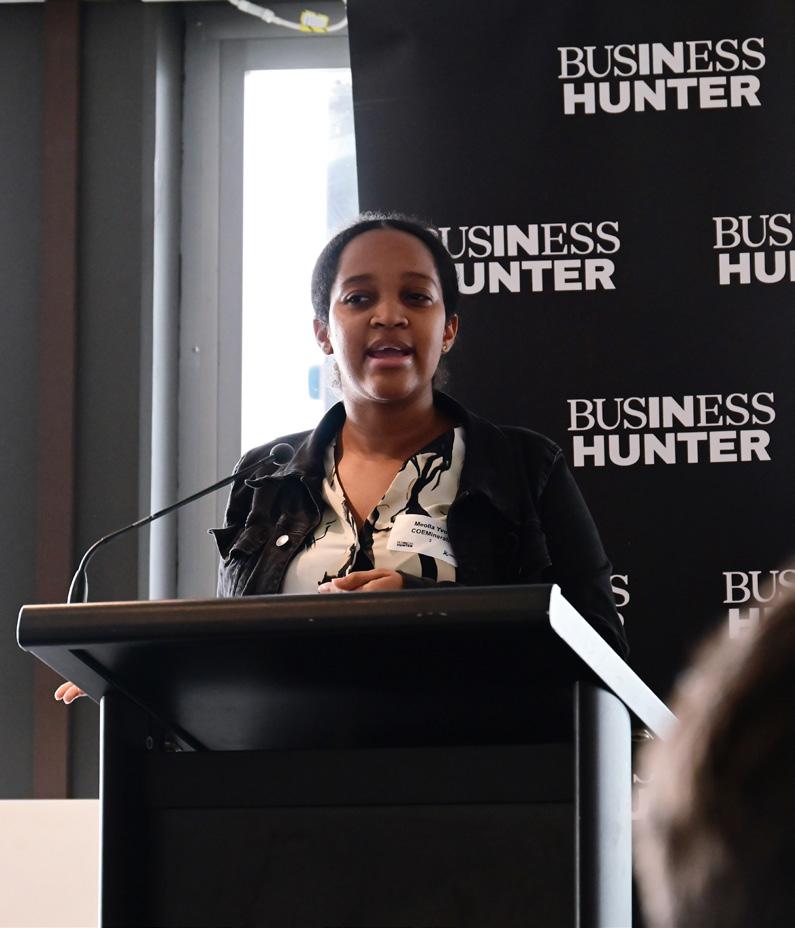
Dr Amini’s industry mentor, Diane Kovacs, a GHD Ltd Principal, Lead Auditor (Environment) and Technical Director, EHS Management also commented on the experience: “It is a privilege to have the opportunity to mentor and support a young professional in their career journey. Being able to share experiences and discuss strategies to allow them to progress their professional, and at times their personal development, has been extremely rewarding. Mentoring is a wonderful opportunity to give back to the profession and assist someone to find and achieve their goals.”

83
Far Left: PhD Jessica Li (UoA)
Left: PhD Meolla Yvon (UON) at Business Hunter luncheon
PhD and ECR awards and accolades

PhD Regina Medeiros and ECR Dr Casey Thomas (UOM) were awarded Researcher Development and Travel Grant scholarships from the Royal Society of Chemistry to support research in fields relevant to Chemical, Materials and Biomedical Engineering
ECR Casey Thomas (UOM) won a poster award at the UK Colloids meeting (Cornwall, UK)
‘Three Minute Thesis’ (3MT®) competition wins:
o PhD Joshua Starrett progressed to the Grand Final at UON, and was the UON representative at the Asia-Pacific 3MT® Grand Final, explaining the importance of his work in minerals (Silica) separation
o PhD Regina Mederios (UOM) won the Outstanding Oral Presentation award in the Australasian Colloids and Interface Society (ACIS) 3MT® competition, explaining how her work aligned to achievement of multiple United Nations (UN) Sustainability Goals (SDG)
o PhD Jackquline Eardly (UOM) progressed to the 3MT® Grand Final at UOM, sharing insights about recovery of tiny hematite mineral particles that would be lost to waste using current methods
o PhD Rupinda (Roop) Kaur progressed to the 3MT® Grand Final at UniSA, speaking to her work utilising peptides in mineral processing
ECR Dr George Abaka-Wood was presented with a UniSA FII Director’s Award recognising innovative research with potential for impact on advancement of scientific knowledge
PhD Yang (Jessica) Li from UoA was elected President of the School of Chemical Engineering Higher Degree Research (HDR) Committee
PhD Matthias Orchard rom UoA was elected Vice President of the HDR Committee and also organised and hosted the student conference for the School of Chemical Engineering, overviewing his COEMinerals role and research
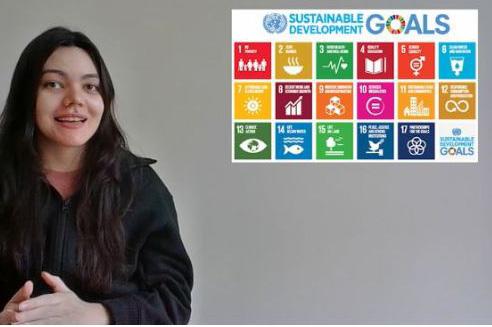
PhD Regina de Mederios (UOM) 3MT presentation

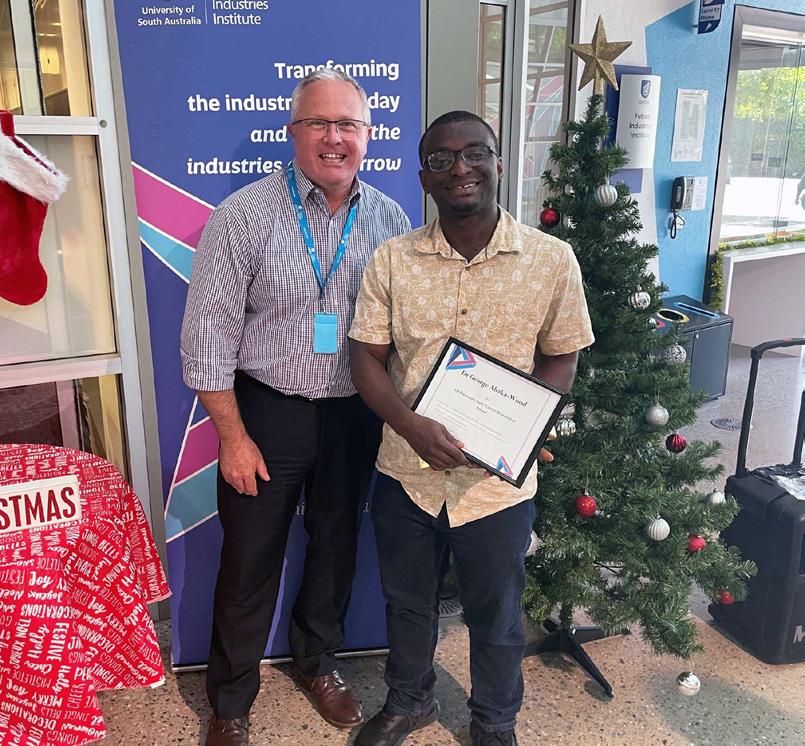
ECR George Abaka-Wood with his UniSA FII Director’s Award
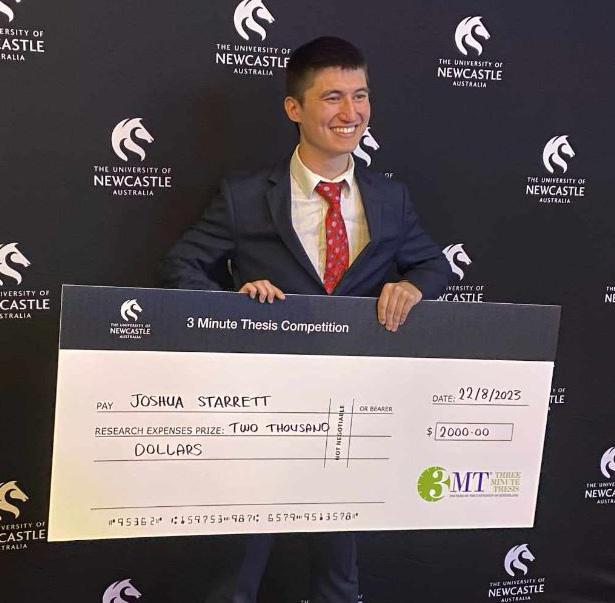
PhD Joshua Starrett and 3MT UON Grand Final prize
84
CENTRE OUTREACH
Supporting Objective 4 of Centre’s strategic Plan, ‘to establish a positive impact of COEMinerals with the community’, COEMinerals PhD and ECRs have embraced broader community outreach in 2023, particularly with school-aged children in support of STEM learning. Key activities include the Centre’s two educational outreach programs:
Minerals Magic – hands on primary and high school minerals-science which is a hands-on activity that helps demonstrate the importance and challenges involved with improving mineral processing
Science and Engineering Challenge – activity development for primary and high schools
Minerals Magic
Following a trial in 2022, a train-the trainer workshop of the Centre’s schools educational outreach program ‘Minerals Magic’ (referred to Minerals Kitchen in the 2022 Annual Report: Science kits for schools) was conducted by the Minerals Magic School Educational Outreach Team during the COEMinerals annual conference in 2023. This enabled other node members to implement the activity and by end of 2023 to more than 800 primary and high school-aged students, who are now ‘inducted’ to Minerals Magic.
With a hands-on approach, workshop attendees take part in science experiments that utilise ingredients and items that can be purchased at low cost or found in many homes, including coffee and chickpeas. Desktop experiments such as the Minerals Magic activities showcase mineral processing fundamentals and raises the awareness of why minerals matter ‘for our future’. It also introduces the Centre’s research, which is helping
to make the minerals sector more efficient and sustainable. Depending on location and format, these events are sometimes supported by lab tours. In summary Minerals Magic was implemented to over 800 participants that include:
more than 500 primary and high students (and their teachers), as a feature of the UON ‘Childrens’ University’ program
UON’s ‘UniSteps’ program
UON Open Day
Deakin University (Burwood campus) Open Day
UoA ‘Mining & Extraction’ Day for year 9-10 high school students
approx. 70 STEM primary and high school teachers (at STEM 202 3)
Member comments on outreach activities
PhDs Matthias Orchard and Yang (Sabrina) Yang and Jessica Li (UoA) coordinated and delivered a COEMinerals outreach program as a ‘Mining & Extraction’ activity for years 9 and 10 students on Energy, Mining, and Resources at UoA, demonstrating mineral processing fundamentals and encouraging STEM studies including:
A sorting challenge: desliming mineral grades using: flour, cocoa powder, skittles, sprinkles.
Coarse Particle Flotation concept: students can visualise how bubbles attach to chickpeas and pop up and down, and the difference between cooked and uncooked chickpeas (akin to what happens in mineral processing) using sparking water, a spoon and a transparent cup
Fine Particle Flotation concept: similar to above, but with higher complexity, and using coffee grinds and sand with an effervescent tablet in water
PhD Jessica Li, (UoA)


As a member of the COEMinerals Outreach Team, I had the privilege of conducting engaging Minerals Magic experiments for high school students during UON ‘Children’s University’. The experience not only helped me enhance my communication skills but also provided valuable insights from the intellectually curious minds of the school students. The best part for me was seeing the surprise and excitement on the students’ faces during the experiments. They asked a bunch of questions, showing they were really into it.
Understanding STEM is crucial, and through outreach we can explain engineering to students in ways they can easily understand. I have observed how helpful these outreach events are because I have witnessed students appreciate them and ask questions that show they want to know more about engineering.
My experience with outreach has been a lot of fun. Beyond imparting engineering insights to students, these experiences offer a valuable opportunity for me to develop essential soft skills, step outside the confines of the lab, and embrace a more relaxed and enjoyable side of professional engagement.
PhD Margaret Amosah (UON)
Delivering Minerals Magic to primary and high school students was definitely an eye-opening experience. I had to learn how to communicate complex scientific ideas to students in an understandable and digestible way in order to keep them continuously engaged in the topic. There is particularly a very notable difference in communicating the same scientific concepts of mineral processing to primary vs high school students! Seeing the students make the connection between the experiments they did at a desk and the real-world mineral processing concepts of froth
85
flotation was extremely rewarding, and I wish that I had been taught more applied scientific concepts back in my home country of Malaysia!
Teaching students about STEM concepts is extremely important as they make up the future workforce that would lead the world to improved technological innovations. Specifically in terms of mineral processing, this outreach engagement may inspire some students to build a career in the minerals industry which is currently experiencing a decline. An increased influx of workforce in the minerals industry will support the extraction of critical minerals essential for constructing renewable technologies, vital for addressing climate change impacts for current and future generations.
PhD Syam Murali Mohan (UON)
Science and Engineering Challenge
There are three COEMinerals teams developing games for the Science and Engineering Challenge (SEC) as part of a Centre working group, lead by COEMinerals CI Prof Mohsen Yahyaei (UQ). The teams moved from concept to prototype in 2023 for 2 x science and engineering challenges associated with filtration and size classification, as well as conceptualising another game based on a flotation challenge.
All three games have been designed to have various levels of complexity, making them suitable for primary and high school students. They can also be complex enough for national competitions, according to the school outreach program managers at UNSW.
A ‘Particle Sieving Game’ prototype will be ready for wider testing at the next COEMinerals conference. The ’game team’ consists of PhDs Syamsundar Menon and Virat Gurung (UON)
The conceptual design of two other games has been completed by a Water Filtration Game Team,
consisting of PhDs Daniel Dodoo and Azeez Aregbe, as well as Dr Eirini Goudeli (UOM). The Separation of Hydrophobic Materials game team consists of PhD Candice Brill and ECR Dr Lucia Dzinza (UQ).

Other outreach activities
Monash: Multiple high school STEM students took part in lab work experience with the Centre from Oxley College, Berwick College, Caulfield Grammar School and Presbyterian Ladies College (PLC) College gaining the chance to synthesise materials and performing organic synthesis, polymerisation and flotation experiments
UOM: ECR Dr Casey Thomas, PhDs Jackquline Eardley and Regina Medeiros provided lab tours and equipment demonstrations to around thirty
Yr10 students, as part of wider learning about engineering study and careers in June 2023. The aim was to inspire students from across Victoria on the cusp of choosing final electives, and to build a curiosity in engineering and consideration of STEM degrees
UQ: Multiple school groups visited the Centre for lab tours and talks in 2023, including around 25 Yr11 students from Aspley State High School and a cohort of high school students in November 2023 from the UQ Change Makers program. Further, CI A/Prof Liza Forbes presented foundational scientific concepts to Grade 3 students at Kenmore South State School
UNSW: CI A/Prof Seher Ata was keynote speaker at the AusIMM Young Leader Summit in 2023, and appeared in a short video shared online introducing mineral processing (AusIMM)1
ECR Dr Dusan Ilic (UON) presented to the “Hunter Pi in the Sci Science Discussion Group” for senior citizens in Maitland, introducing them to mineral processing and related computer modelling fundamentals
CI Prof Vishnu Pareek (Curtin) delivered an introductory address at Fukuoka International School Japan, interacting with primary and high school students with a particular emphasis on resources and materials needed for the energy transition
Multiple Centre members attended Industry Association AusIMM’s IWD and other events in Melbourne, Adelaide and Sydney

86
1https://www.youtube.com/watch?v=3T4DXKoTDX4
TRAINING AND MENTORING OVERVIEW
Training and mentoring is a crucial objective of the Centre.
Future Leaders Program
In 2023, the Future Leaders Program (FLP) initiative continued with a focus on various aspects of academic development, professional skills and technical proficiency. We seamlessly integrated online workshops with face-to-face training sessions during our COEMinerals Annual Conference.
Several CIs delivered technical training sessions tailored to their areas of expertise in particular in the areas of process control, design and synthesis of peptides and proteins and RAFT polymerisation: From basic to advanced.
Feedback from FLC, saw us deliver training called ‘Mineral Processing 102’. The course introduced participants into fundamentals and applied areas of mineral processing. The course was delivered by Dr Simon Iveson (UON) over a 1 year period.
Mentoring
Mentoring took on a twist with a focus on job application process which included resume writing for both industry and academic fields. The session included tailored advice from a panel of HR expert, industry and academia who answered questions from the Future Leaders relating to interview and resume writing.
In addition, at the annual conference we held an industry mentoring panel session featuring technical experts who spoke on the importance of industry/ academic partnership.
Industry Training
A number of our COEMinerals members offer training to industry throughout the year
Addressing knowledge gaps: The Ngadju Conservation Aboriginal Corporation (NCAC)
InterMet: course content to 25 South American Mineral Processing community members
InterMet: Flotation Chemistry to 19 participants including Antamina Mine (in Southern Peru), Copper Corporation and Eriez
2-day professional development course to 11 Rio Tinto Technology and Innovation Centre team members
2 x short courses ‘Metallurgy for non-Metallurgists’ to 15 gold mining companies in the Amira Global P420 program



87 Training Type Course Name Group Academic Development Understanding and embedding responsible research conduct All Members Statistics for Mineral Processing PhDs and ECRs (UQ) Professional Skills Messaging and Storytelling All Members Communication Course PhDs and ECRs GEDI Training - Bystander Training All Members Cultural Immersion - Aboriginal weaving All Members Leadership Course ECRs Technical Minerals 102 PhDs and ECRs Process Control PhDs and ECRs Design and synthesis of peptides and proteins All Members RAFT Polymerisation: From Basic to Advanced All Members Flotation Training – Fundamentals, Laboratory Testing and Flotation Circuits PhDs and others (UniSA) Mentoring Job Application Process Workshop PhDs and ECRs Industry and Academia Collaborations ‘The odd couple’ All Members
COMMUNICATIONS AND MEDIA
All communication efforts support the growth of a positive reputation for the Centre based on its people, research, technology, education and growing influence.
The Centre continues to deliver to ‘Phase 1’ of the Communications Strategy for communications and brand-building, supporting the Centre’s Strategic Objective of ‘establishing a positive impact of COEMinerals with the minerals sector, community, government and other researchers’.
A Centre narrative and refreshed messaging was developed in 2023 with team input and rolled out with training to all members in conjunction with a media-storytelling workshop. PhDs and ECRs are now beginning to confidently represent the Centre in wide ranging forums including media interviews, including ABC radio and Herald articles, and presenting Centre news in community and business events.
The communications issue and crisis plan, ensures member are well prepared for media interviews or large audience engagement.
Communications achievements in 2023
17 media stories with members featured, comments shared or Centre and technology mentions by media outlets, including coverage driven by third party media releases. Coverage included mining publications, mainstream news, radio interviews and industry-followed expert blogs or news
Social media post and engagement highlights

o 1,600 LinkedIn followers (630 of those new in 2023)
o 10,000+ people responded to Centre
LinkedIn posts (likes, comments and reposts)
o 60+% of the Centre’s LinkedIn community works in the METS/mining sector or in research or higher education, which is in line with our Centre focus, member roles and PhD career aspirations
o Posts achieved almost 16,000 impressions and a 4% engagement rate
2,700 new website users in 2023 and 9,000 page views
Organic search trends are positive, with more than 400 people finding the website via proactive search
Momentum for communications activity and brand building will grow over the Centre’s lifetime with a goal of COEMinerals to becoming a lead scientific voice, and its members ‘go to’ talent’, for media interviews on first stage beneficiation, where they are able to succinctly simplify Centre research and explain why sciencebased minerals sector transformation is important.
In 2024, the Centre also plans to implement Phase 2 of the Communications Strategy, building the Centre’s brand with a ramp in media coverage, growing engagement and reach via social media and other channels.
Kim Stockham Communications Officer


Federal Minister for Education, The Hon. Jason Clare MP said the work of the Australian Research Council was critical to developing the world’s best researchers. “Researchers like Josh (Starrett) are changing the game and demonstrating the very real benefits that Australian research can deliver to key industries.”


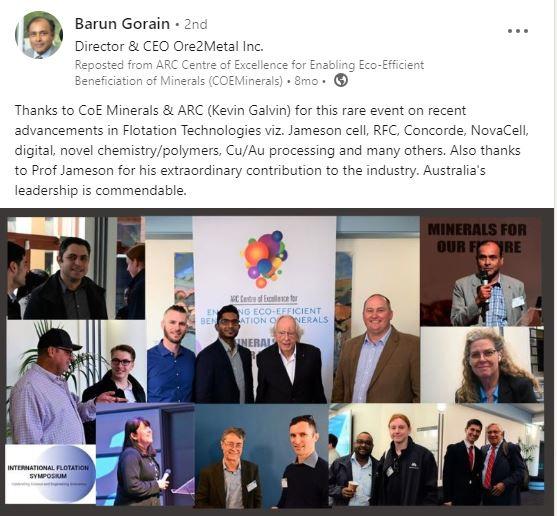
88
PUBLICATIONS
COEMinerals Refereed Publications
G.B. Abaka-Wood, B. Johnson, J. Addai-Mensah, W. Skinner, Recovery of Rare Earth Elements Minerals in Complex Low-Grade Saprolite Ore by Froth Flotation, Minerals. 12 (2022) 1138. https://doi. org/10.3390/min12091138.
K. Abood, T. Das, D.R. Lester, S.P. Usher, A.D. Stickland, C. Rees, N. Eshtiaghi, D.J. Batstone, Characterising sedimentation velocity of primary waste water solids and effluents, Water Research. 219 (2022) 118555. https://doi.org/10.1016/j.watres.2022.118555
P. Amani, N. Amiralian, S.S.A. Athukoralalage, M. Firouzi, Ecoefficient pickering foams: leveraging sugarcane waste-derived cellulose nanofibres, J. Mater. Chem. A 11 (2023) 24379–24389. https://doi.org/10.1039/D3TA04917E
N. Amini, B. Fan, T. Hsia, E.M. Moon, K. Hapgood, S.H. Thang, RAFT Polymer-Based Surfactants for Minerals Recovery, ACS Omega 8 (2023) 40532–40546. https://doi.org/10.1021/acsomega.3c05270
X. Cai, B. Fan, S.H. Thang, C.J. Drummond, N. Tran, J. Zhai, Paclitaxel-loaded cubosome lipid nanocarriers stabilised with pH and hydrogen peroxide-responsive steric stabilisers as drug delivery vehicles, J. Mater. Chem. B 11 (2023) 403–414. https://doi. org/10.1039/D2TB01530G
J. Chen, W. Chimonyo, Y. Peng, Compare graphite flotation and coal flotation in Reflux Flotation Cell, Powder Technology 428 (2023) 118846. https://doi.org/10.1016/j.powtec.2023.118846
L.J. Crompton, Md.T. Islam, K.P. Galvin, Assessment of the partitioning of coarse hydrophobic particles in the product concentrate of the CoarseAIR™ flotation system using a novel mechanical cell reference method, Minerals Engineering 198 (2023) 108088. https://doi.org/10.1016/j.mineng.2023.108088.
J.B. Dankwah, R.K. Asamoah, G.B. Abaka-Wood, M. Zanin, W. Skinner, Influence of bed material density on fluidized bed flotation performance: A study on the flotation performance of quartz and alumina beds in the HydroFloat, Minerals Engineering 203 (2023) 108321. https://doi.org/10.1016/j.mineng.2023.108321
Q.D. Dao, T.V. Nguyen, D.M.A.T. Nguyen, N.N. Nguyen, C.V. Nguyen, A.V. Nguyen, Application of X-ray computed tomography scanning in describing partition curves of dense medium cyclones, Minerals Engineering 201 (2023) 108164. https://doi.org/10.1016/j. mineng.2023.108164
T. Das, S.P. Usher, D.J. Batstone, M. Othman, C.A. Rees, A.D. Stickland, N. Eshtiaghi, Impact of volatile solids destruction on the shear and solid-liquid separation behaviour of anaerobic digested sludge, Science of The Total Environment 894 (2023) 164546.
https://doi.org/10.1016/j.scitotenv.2023.164546


A. Doi, T.A.H. Nguyen, N.N. Nguyen, C.V. Nguyen, F. Raji, A.V. Nguyen, Enhancing shear strength and handleability of dewatered clay-rich coal tailings for dry-stacking, Journal of Environmental Management 344 (2023) 118488. https://doi.org/10.1016/j. jenvman.2023.118488
M. Drechsler, W. Skinner, Commercialisation pathway for low energy wet/dry gyratory rolls crusher comminution technology, Minerals Engineering 204 (2023) 108419. https://doi.org/10.1016/j. mineng.2023.108419
M.D. Farrelly, J. Zhai, A.Y.J. Tiong, L. van ‘t Hag, H.H. Yu, J. Li, L.L. Martin, S.H. Thang, Membrane interaction and selectivity of novel alternating cationic lipid-nanodisc assembling polymers, Biomater. Sci. 11 (2023) 5955–5969. https://doi.org/10.1039/D3BM00477E
L. Forbes, C.J. Brill, I. Verster, Aerosol collector addition in flotation – evaluation of delivery options, Physicochem. Probl. Miner. Process. 59 (2023). https://doi.org/10.37190/ppmp/174475.
P. Forson, W. Skinner, R. Asamoah, Investigating the selective flotation of auriferous arsenian pyrite from refractory ores using thionocarbamate, Powder Technology 426 (2023) 118649. https://doi. org/10.1016/j.powtec.2023.118649
M.M. Hoque, J.B. Joshi, G.M. Evans, S. Mitra, A critical analysis of turbulence modulation in particulate flow systems: a review of the experimental studies, Reviews in Chemical Engineering (2023). https://doi.org/10.1515/revce-2022-0068
Md.T. Islam, A.V. Nguyen, Bubble-assisted matte transportation into slag phase: A numerical investigation, Minerals Engineering 202 (2023) 108286. https://doi.org/10.1016/j.mineng.2023.108286
M. Jefferson, U. Yenial-Arslan, C. Evans, C. Curtis-Morar, R. O’Donnell, A. Parbhakar-Fox, E. Forbes, Effect of pyrite textures and composition on flotation performance: A review, Minerals Engineering 201 (2023) 108234. https://doi.org/10.1016/j. mineng.2023.108234
M.U. Jung, Y.C. Kim, G. Bournival, S. Ata, Industrial application of microbubble generation methods for recovering fine particles through froth flotation: A review of the state-of-the-art and perspectives, Advances in Colloid and Interface Science 322 (2023) 103047. https://doi.org/10.1016/j.cis.2023.103047
Y. Li, G. Yang, Y. Weng, L. Xu, F. Hou, S. Devkota, C.-X. Zhao, Exploring biosurfactants as a sustainable alternative to chemical surfactants, Colloids and Surfaces A: Physicochemical and Engineering Aspects 677 (2023) 132291. https://doi.org/10.1016/j. colsurfa.2023.132291
X. Liu, C. Aldrich, Explaining anomalies in coal proximity and coal processing data with Shapley and tree-based models, Fuel 335 (2023) 126891. https://doi.org/10.1016/j.fuel.2022.126891
X. Liu, C. Aldrich, Recognition of flotation froth conditions with k-shot learning and convolutional neural networks, Journal of Process Control 128 (2023) 103004. https://doi.org/10.1016/j. jprocont.2023.103004
A.P.G. Lockwood, G. Wadsley, N.J. Warren, J. Peakall, G.B. Webber, E.J. Wanless, D. Rhodes, M. Barnes, D. Harbottle, T.N. Hunter, Amphiphilic block copolymers as dual flocculation-flotation agents for rapid solid–liquid separation of radioactive wastes, Separation and Purification Technology 323 (2023) 124387. https://doi. org/10.1016/j.seppur.2023.124387
X. Ma, N.N. Nguyen, A.V. Nguyen, J.D. Miller, An investigation of mineral floatability versus mineral surface exposure and hydrophobicity by high-resolution X-ray microcomputed tomography, film flotation, contact angles, and modeling, Minerals Engineering 200 (2023) 108139. https://doi.org/10.1016/j. mineng.2023.108139
X. Ma, N.N. Nguyen, A.V. Nguyen, Modelling and model validation of particle stability and detachment from the particle-laden surface, Minerals Engineering 200 (2023) 108159. https://doi.org/10.1016/j. mineng.2023.108159
M.D. Nguyen, D. Donaldson, S. Adhikari, N. Amini, D.S. Mallya, M. Thomas, E.M. Moon, N.A. Milne, Phosphorus adsorption and organic release from dried and thermally treated water treatment sludge, Environmental Research 234 (2023) 116524. https://doi.org/10.1016/j. envres.2023.116524.
M.D. Nguyen, A.K. Sivaram, M. Megharaj, L. Webb, S. Adhikari, M. Thomas, A. Surapaneni, E.M. Moon, N.A. Milne, Investigation on removal of perfluorooctanoic acid (PFOA), perfluorooctane sulfonate (PFOS), perfluorohexane sulfonate (PFHxS) using water treatment sludge and biochar, Chemosphere 338 (2023) 139412. https://doi. org/10.1016/j.chemosphere.2023.139412.
T.T.P. Nguyen, F. Raji, C.V. Nguyen, N.N. Nguyen, A.V. Nguyen, Effects of Charged Surfactants on Interfacial Water Structure and Macroscopic Properties of the Air-Water Interface, ChemPhysChem 24 (2023) e202300062. https://doi.org/10.1002/cphc.202300062
J. Oshitani, S. Kato, T. Tsuji, K. Washino, S. Harada, H. Kajiwara, K. Matsuoka, G.V. Franks, Influence of air velocity and powder bed height on local density and float–sink of spheres in a gas–solid fluidized bed, Advanced Powder Technology 34 (2023) 104146. https://doi.org/10.1016/j.apt.2023.104146
89
K.B. Owusu, W. Skinner, C. Greet, R.K. Asamoah, Acoustic Sensing of Fresh Feed Disturbances in a Locked-Cycle Laboratory AG/SAG Mill, Minerals 13 (2023) 868. https://doi.org/10.3390/min13070868
S. Parkes, P. Wang, K.P. Galvin, Revisiting a flotation cell benchmark, Minerals Engineering 200 (2023) 108134. https://doi.org/10.1016/j. mineng.2023.108134
A.F. d. V. Rodrigues, H. Delboni, K. Silva, J. Zhou, K.P. Galvin, L.O. Filippov, Transforming iron ore processing – Simplifying the comminution and replacing reverse flotation with magnetic and gravity separation, Minerals Engineering 199 (2023) 108112. https:// doi.org/10.1016/j.mineng.2023.108112
A.F. d. V. Rodrigues, H. Delboni Junior, O.M.S. Rodrigues, J. Zhou, K.P. Galvin, Gravity separation of fine itabirite iron ore using the Reflux Classifier – Part I – Investigation of continuous steady state separations across a wide range of parameters, Minerals Engineering 201 (2023) 108187. https://doi.org/10.1016/j.mineng.2023.108187
P.J. Scales, S.P. Usher, M.B. Larsen, A.D. Stickland, H.-E. Teo, R.G. de Kretser, R. Buscall, Yielding and Flow in Aggregated Particulate Suspensions, Trans Indian Inst Met (2023). https://doi.org/10.1007/ s12666-023-03061-6.
P. Shi, V. Tholan, A.-E. Sommer, S. Heitkam, K. Eckert, K. Galvin, R. Rzehak, Forces on a nearly spherical bubble rising in an inclined channel flow, International Journal of Multiphase Flow 169 (2023) 104620. https://doi.org/10.1016/j.ijmultiphaseflow.2023.104620
Ž. Simon, F. Stojcevski, B. Dharmasiri, C. Luke Henderson, N. Amini, Circular Economy-Driven Additive Manufacturing: A Model for Recycling PLA/Copper Composites Through Multi-Extrusion Processing, Journal of Industrial and Engineering Chemistry (2023). https://doi.org/10.1016/j.jiec.2023.09.044
J.B. Starrett, K.P. Galvin, Application of inclined channels in the hydrodynamic classification of minerals by particle size, Minerals Engineering 195 (2023) 108002. https://doi.org/10.1016/j. mineng.2023.108002
K. Takeuchi, P.M. Ireland, G.B. Webber, E.J. Wanless, M. Hayashi, R. Sakabe, S. Fujii, Electrostatic Adsorption Behaviors of Polymer Plates to a Droplet, Langmuir 39 (2023) 9617–9626. https://doi.org/10.1021/ acs.langmuir.3c00485
Md. Tariqul Islam, A.V. Nguyen, Liquid-assisted irregular coarse particle fluidization in a fluidized bed flotation cell: Bed of low-density versus high-density particles, Minerals Engineering 201 (2023) 108153. https://doi.org/10.1016/j.mineng.2023.108153
N.K.S. Teo, B. Fan, A. Ardana, S.H. Thang, Aggregation-induced emission polymers via reversible-deactivation radical polymerization, Aggregate n/a (2023) e414. https://doi.org/10.1002/agt2.414
C.A. Thomas, B.T. Lobel, P.M. Ireland, E.J. Wanless, O.J. Cayre, G.B. Webber, Impact of high conductivity on particle transport to liquid droplets for liquid marble formation, RSC Appl. Interfaces (2023). https://doi.org/10.1039/D3LF00182B
A. Wang, G. Evans, S. Mitra, A review of bubble surface loading and its effect on bubble dynamics, Minerals Engineering 199 (2023) 108105. https://doi.org/10.1016/j.mineng.2023.108105
R.J. Wilson, Y. Liu, G. Yang, Y. Gao, C.-X. Zhao, Biosurfactant stabilized nanoemulsions as multifunctional magnetically targeted delivery vehicles, (2023) 2023.11.26.568750. https://doi. org/10.1101/2023.11.26.568750
L. Ye, P. Xiao, P. Scales, P. Webley, R. Singh, G.K. Li, Improved copper-based catalysts for alcohol-assisted CO2 hydrogenation: A comparative study between novel nano-stabilized and depositionprecipitation method, Molecular Catalysis 547 (2023) 113289. https:// doi.org/10.1016/j.mcat.2023.113289
U. Yenial-Arslan, M. Jefferson, C. Curtis-Morar, E. Forbes, Pathway to Prediction of Pyrite Floatability from Copper Ore Geological Domain Data, Minerals 13 (2023) 801. https://doi.org/10.3390/min13060801.
F. Raji, N.N. Nguyen, C.V. Nguyen, T.A.H. Nguyen, A.V. Nguyen, Molecular Signature of an Unexpected Hydrophobization of Silica Surfaces in Lead Nitrate Solutions as Detected by Sum Frequency Generation Spectroscopy, J. Phys. Chem. C 126 (2022) 21699–21707. https://doi.org/10.1021/acs.jpcc.2c07909
Book Publications
H.Han, M. Peng, A.V. Nguyen, Y. Hu, W. Sun, Z. Wei, The interfacial water structure at mineral surfaces, in: K. Wandelt, G. Bussetti (Eds.), Encyclopedia of Solid-Liquid Interfaces (First Edition), Elsevier, Oxford, 2023: pp. 552–566. https://doi.org/10.1016/B978-0-32385669-0.00079-9
A. Møller, A. Beheshti, W. Skinner, G. Franks, D. Beattie, M. Krasowska, Hydrophobic surfaces in mineral flotation: The effect of (physical and chemical) heterogeneity on wettability and wetting film stability, in: K. Wandelt, G. Bussetti (Eds.), Encyclopedia of SolidLiquid Interfaces (First Edition), Elsevier, Oxford, 2023: pp. 494–504. https://doi.org/10.1016/B978-0-323-85669-0.00126-4
N.N. Nguyen, C.V. Nguyen, A.V. Nguyen, The significant interfacial properties in the flotation separation of (critical) minerals from the Earth’s crust, in: K. Wandelt, G. Bussetti (Eds.), Encyclopedia of Solid-Liquid Interfaces (First Edition), Elsevier, Oxford, 2023: pp. 505–520. https://doi.org/10.1016/B978-0-323-85669-0.00080-5
Additional Centre related Publications
K.B. Owusu, W. Skinner, R.K. Asamoah, Acoustic Sensing and Supervised Machine Learning for In Situ Classification of SemiAutogenous (SAG) Mill Feed Size Fractions Using Different Feature Extraction Techniques, Powders 2 (2023) 299–322. https://doi. org/10.3390/powders2020018
A. Skrypnik, L. Knüpfer, P. Trtik, V. Tholan, S. Parkes, S. Heitkam, Neutron radiography of liquid foam structure near a vertical wall, Soft Matter 19 (2023) 8552–8560. https://doi.org/10.1039/ D3SM00983A.
R.K. Valenta, É. Lèbre, C. Antonio, D.M. Franks, V. Jokovic, S. Micklethwaite, A. Parbhakar-Fox, K. Runge, E. Savinova, J. SeguraSalazar, M. Stringer, I. Verster, M. Yahyaei, Decarbonisation to drive dramatic increase in mining waste–Options for reduction, Resources, Conservation and Recycling 190 (2023) 106859. https://doi. org/10.1016/j.resconrec.2022.106859
S. Parkes, B. Wright, P. Wang, E. Stiller1, M. Firouzi, K.P. Galvin, Investigating the Impact of Feed Gangue Concentration on Flotation Kinetics and Recovery in the REFLUX™ Flotation Cell, Flotation 23’, (2023) Cape Town, South Africa
Peipei Wang, Meolla Yvon, Siân Parkes, Kevin P. Galvin, Enhancing nickel grade and recovery with counter-current washing of the concentrated bubbly-zone of a single stage REFLUX™ Flotation Cell, Sustainable Mineral 23’, Falmouth, United Kingdom
Ireland, P.M. ‘Electrostatic Separation for Space Resources Utilisation’. Proceedings from 20th Australian Space Research Conference (2022) (published 2023), p.66, Sydney, Australia
Forbes L, Brill CJ, Verster I. Aerosol collector addition in flotation –evaluation of delivery options. Physicochemical Problems of Mineral Processing, 4th Advanced Chemistry World Congress, (2023), Barcelona, Spain



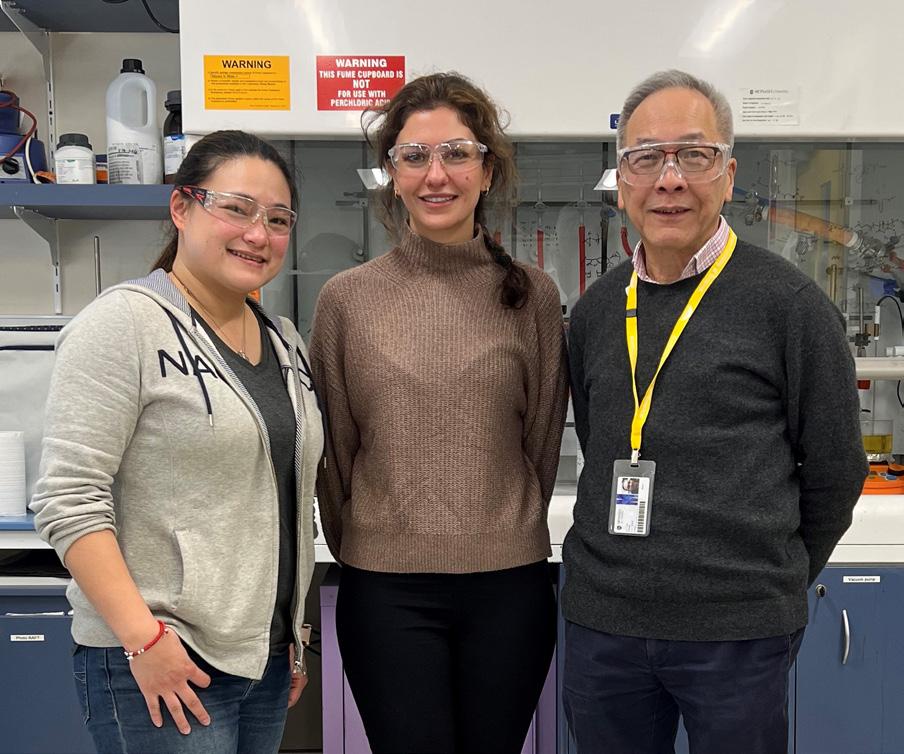
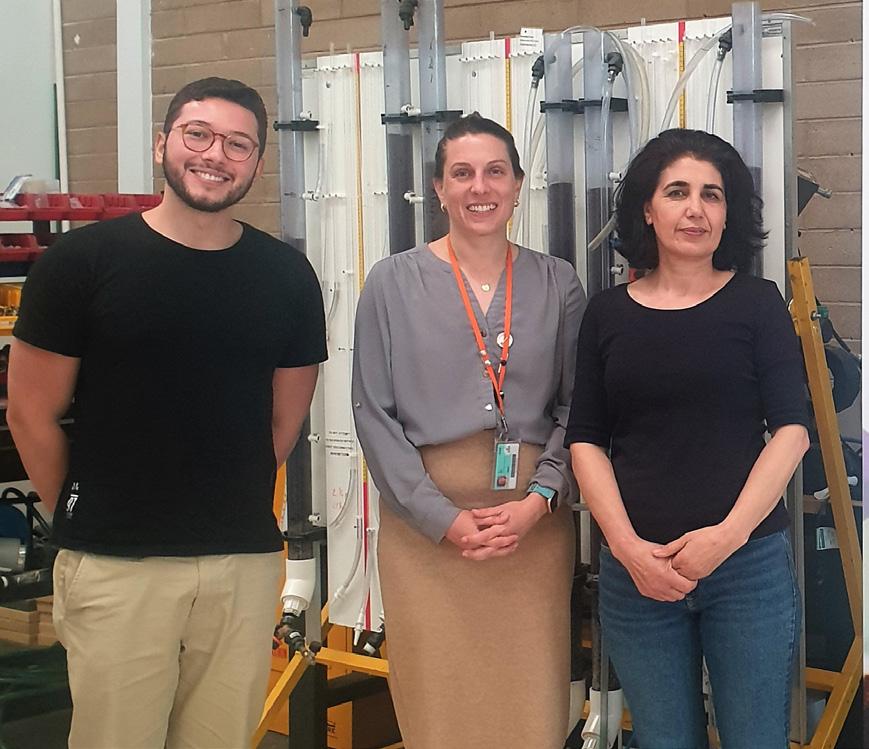
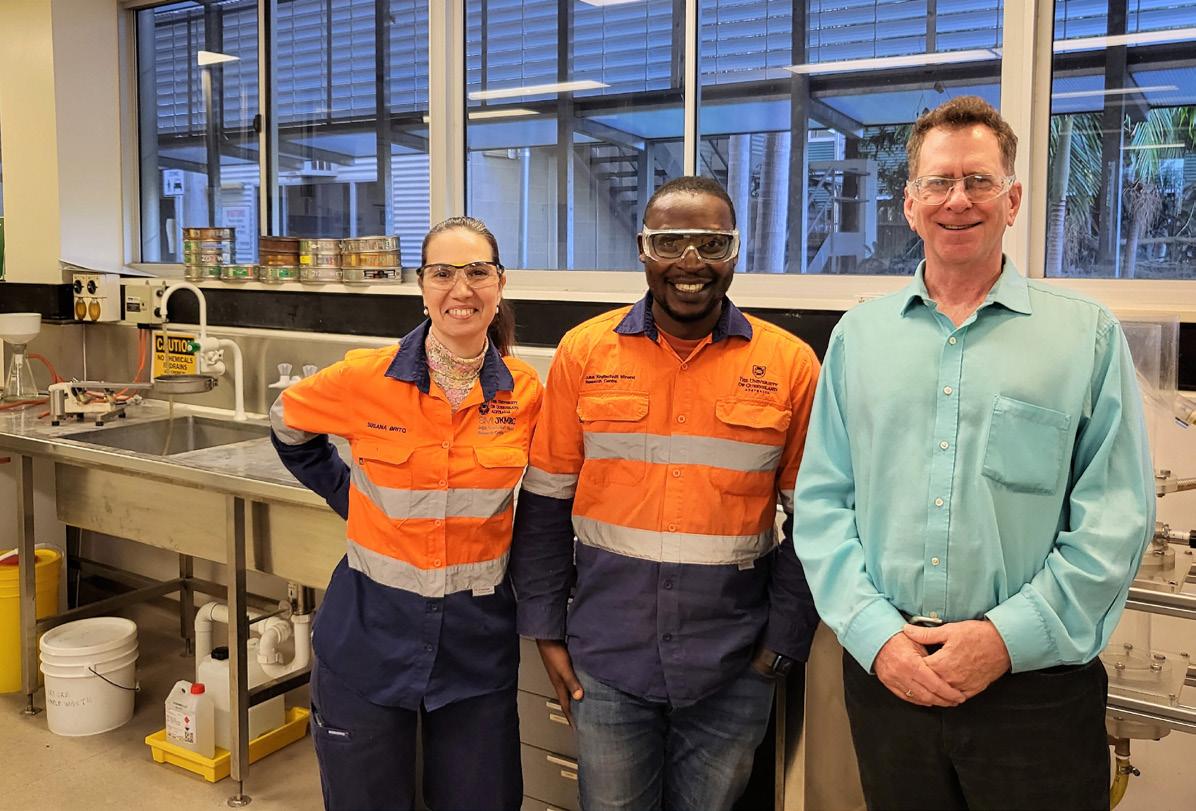

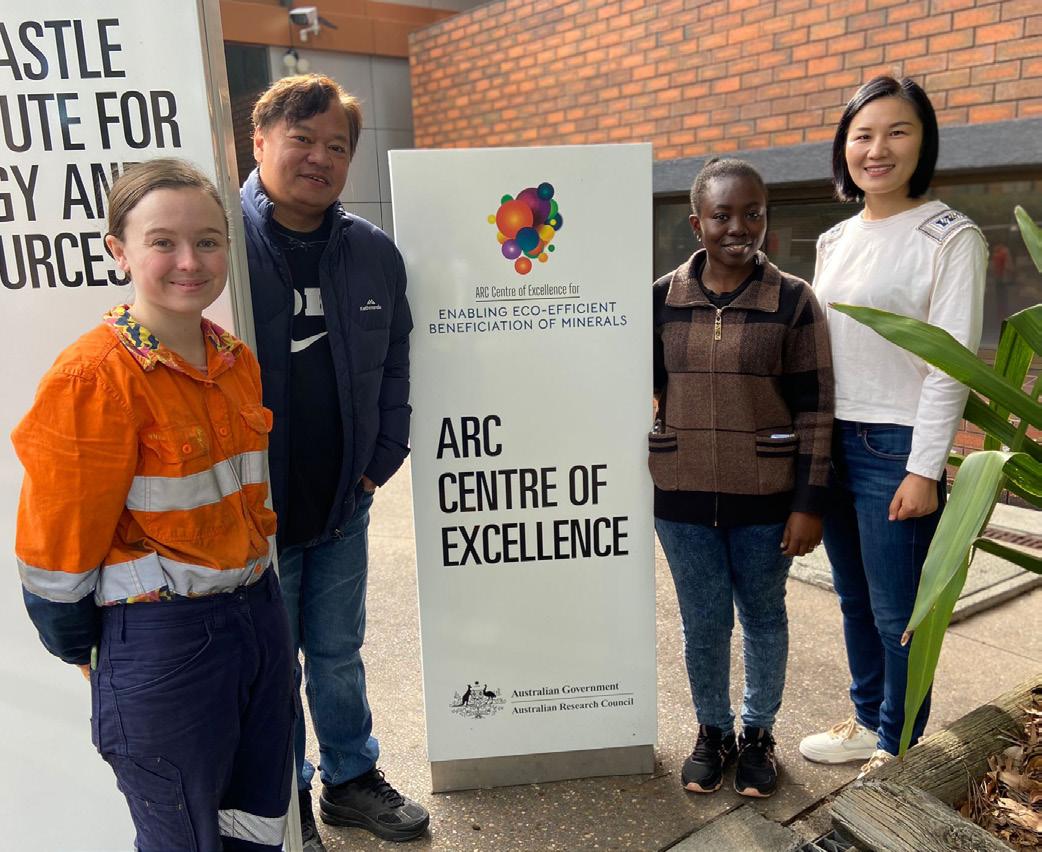
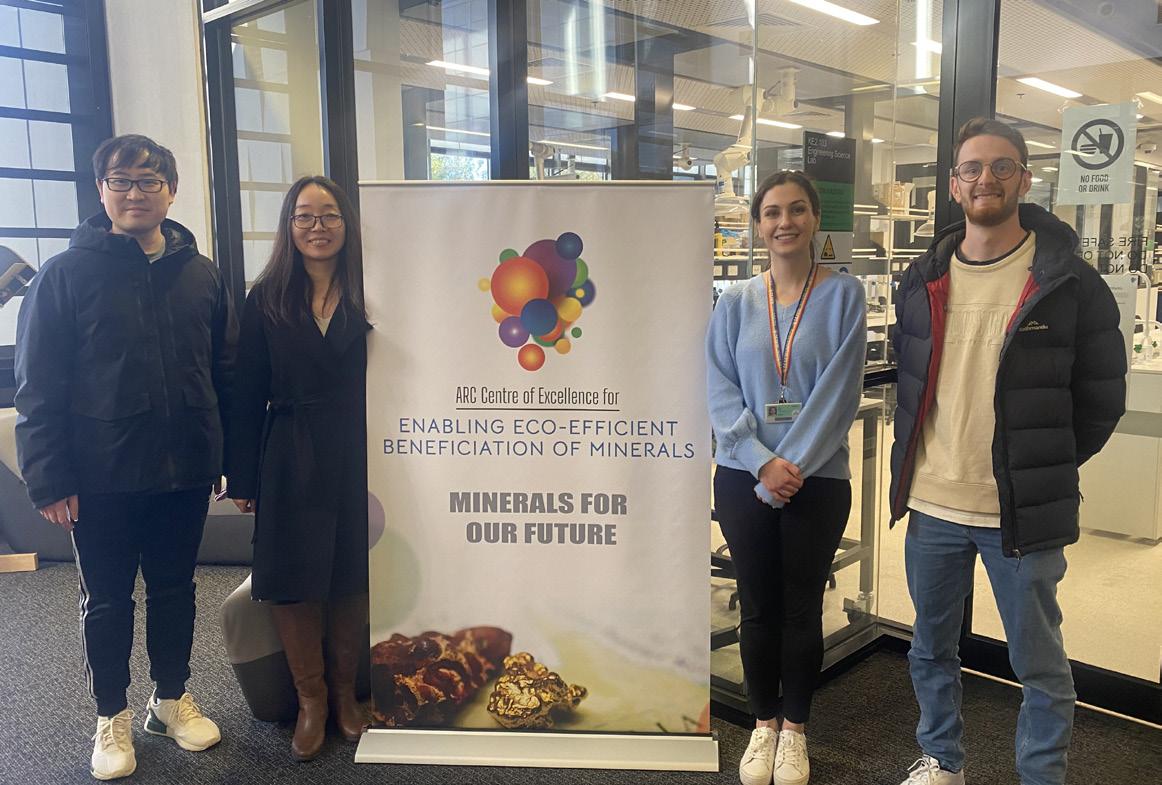


Internode visits
FINANCIAL STATEMENTS
EXPENDITURE 2023 ACTUAL
Personnel $5,069,604
Equipment $144,217
Maintenance $543,120
Travel $512,025
Other $535,238
Total Expenditure $6,804,203
Carry Forward 2023 $11,632,321
Financial Statement Notes
ARC Grant Funds include annual indexation
NSW Government (RAAP Grant) was paid in advance in 2021
University contributions incorporate University of Newcastle, University of Queensland, Deakin University, University of South Australia, Monash University, University of Melbourne, Curtin University, University of NSW, University of Adelaide
University of Newcastle $756,882
University of Queensland $378,591
Deakin University $45,285
University of S.A. $127,065
Monash University $137,741
University of Melbourne $256,111
Curtin University $139,238
University of NSW $95,157
University of Adelaide $82,540
Total in-kind $2,018,609


92
Carry Forward $11,230,401 INCOME 2023 ACTUAL ARC Grant Funds $5,411,246 NSW GovernmentRAAP Grant $0 S.A. Government - RCSF $100,000 University Contributions $1,614,877 Industry Contributions $80,000 Total Income $7,206,123
IN-KIND 2023 ACTUAL
COEMINERALS 2024 PLANS


Boards and Panels
COEMinerals Administration
Committees
Engagement
Events
Inter-collaborations and industry site visits
Advisory Board meeting to be conducted bi-annually
Yearly review of COEMinerals Plans
Collate Key Performance Indicators (KPI) throughout the year
Review and update KPI database
Future Leaders Committee (involving PhDs and ECRs)
GEDI Committee
Training and Mentoring Committee
Research Program Review Committee
Stakeholder Committee meeting to be conducted bi-annually
Continue industry engagement
Engage in at least 30 international and national conferences/workshops/events
COEMinerals annual face-to-face conference
Centre Organised - deliver workshops/symposiums throughout the year for industry and academia
Visit from Director and Chief Operations Officer to all Nodes in 2024
Continuation of inter-collaborations with lab visits across various Nodes
Industry site visits
Meetings
Media and Communications
Weekly/Fortnightly Executive Committee meeting
Research Program Committee meetings
Research Program Review Committee bi-annual meeting
COEMinerals Townhall meetings
Move to Phase 2 of the Communications Strategy, with a ramp in media coverage, and growing social community and engagement
Introduce more video to social media channel content
Messaging and Storytelling training refresher to members
1:1 media training pre: media interview
Introduce a new comms channel (podcast or blog)
93
Mid-Term Review
Prepare and participate in ARC Mid-Term Review in April
Outreach Education
Continue implementation of ‘Minerals Magic’ at school education outreach activties
Continued development and testing of the Science and Engineering Challenge games by the Centre’s ‘Rock Star’ team, with a activity to ready for testing at 2024 COEMinerals face-to-face annual conference
Create pilot draft program for the ‘Diversity of Thought’ module for 1 st year undergraduates at UON Public
Participate in outreach events at local and/or state level
Elevate Centre GEDI inclusiveness
Participate in talks and liaison opportunities to government and industry audiences re: research capabilities and potential positive impact of the Centre
Recruitment
Reporting
Training and Mentoring
Webinar Series
Continue national and international PhD recruitment for 2nd half of Centre
Project reports due quarterly
GEDI training
Future Leaders (training) Program - Organise technical, professional and academic training and mentoring group work.
Other applicable ad hoc training
Hold the monthly online Signature Lecture Series, with eminent scientists or industrialists invited from around the globe to speak
Continue delivering the Internal Seminar Series on scientific or technical content by Centre researchers






















































OUR CENTRE IN PICTURES


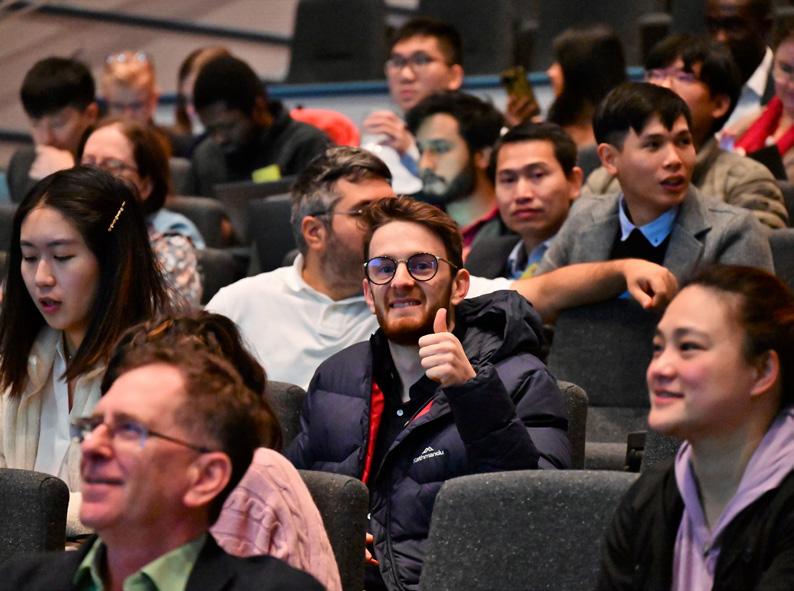
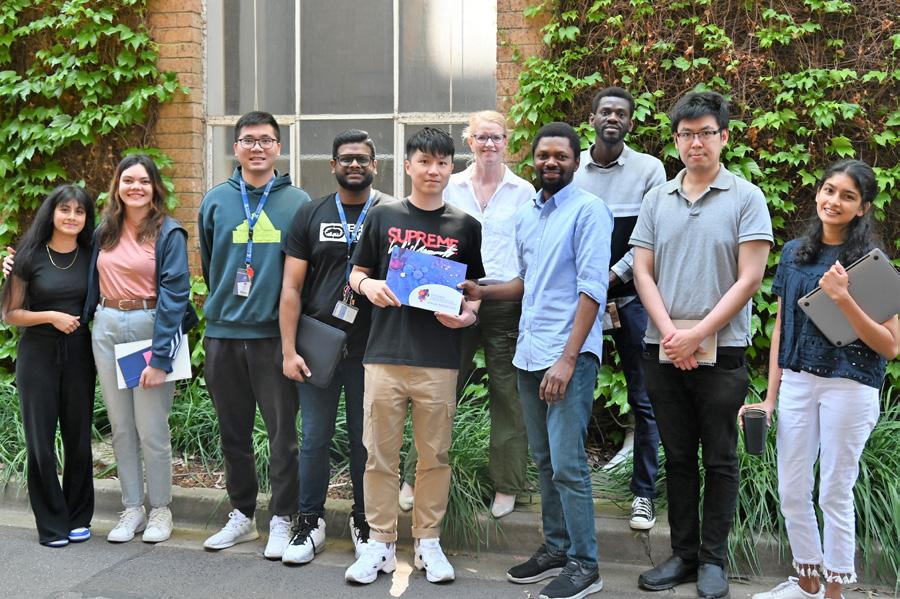


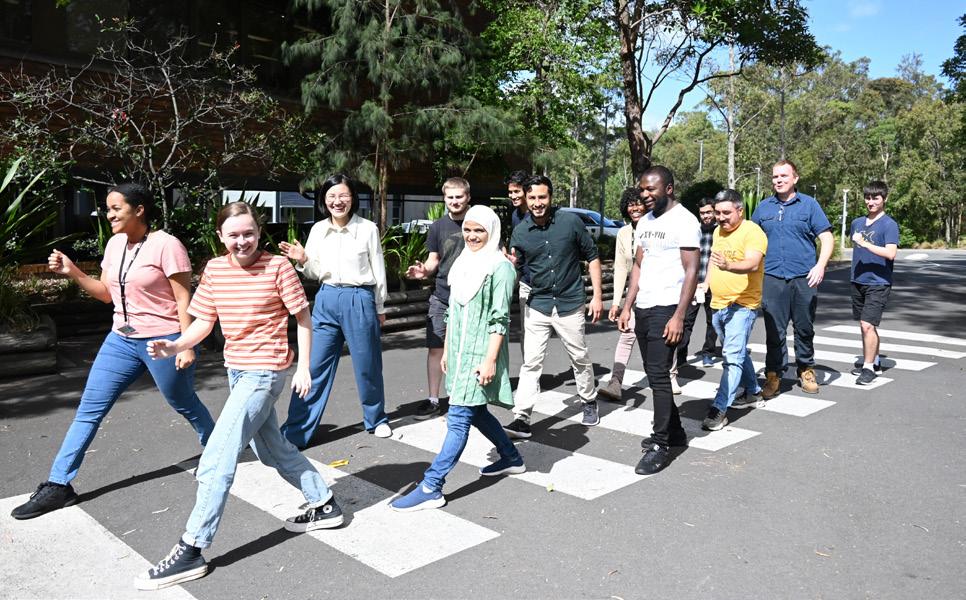




Our amazing Future Leaders
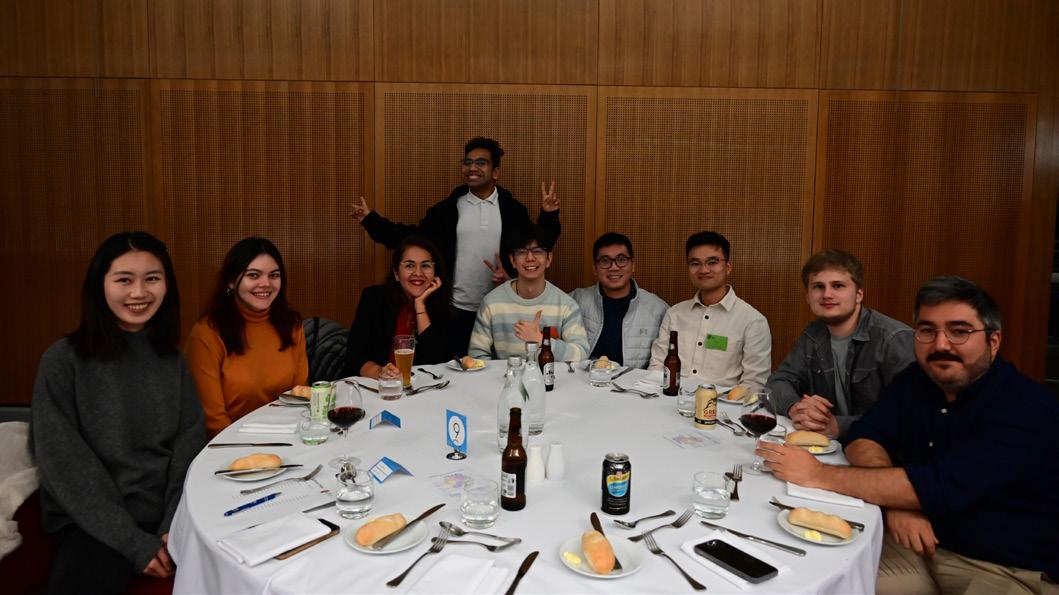
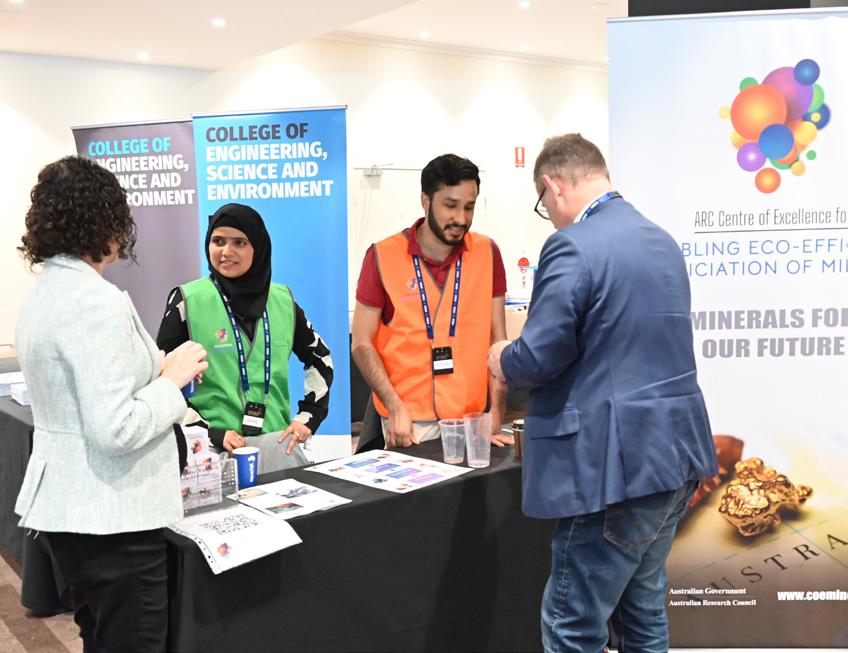

95







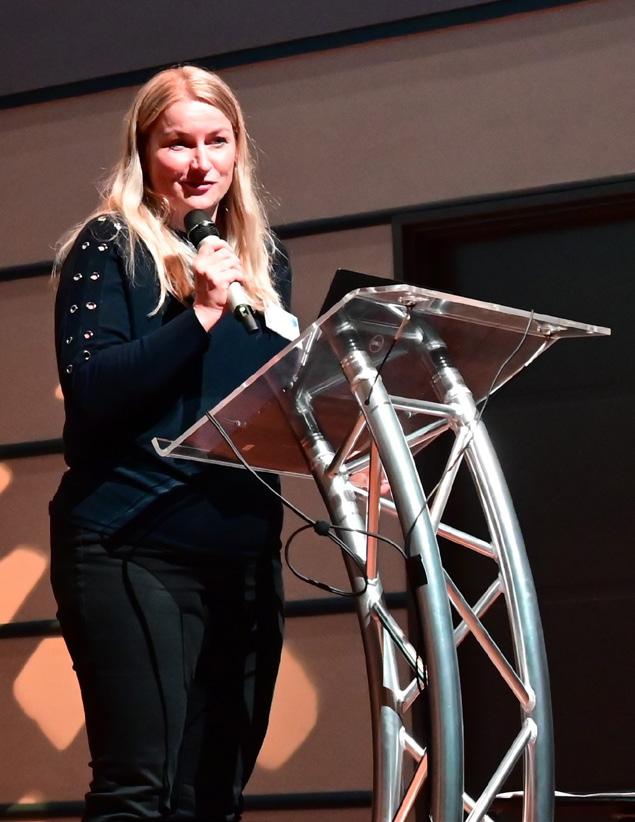

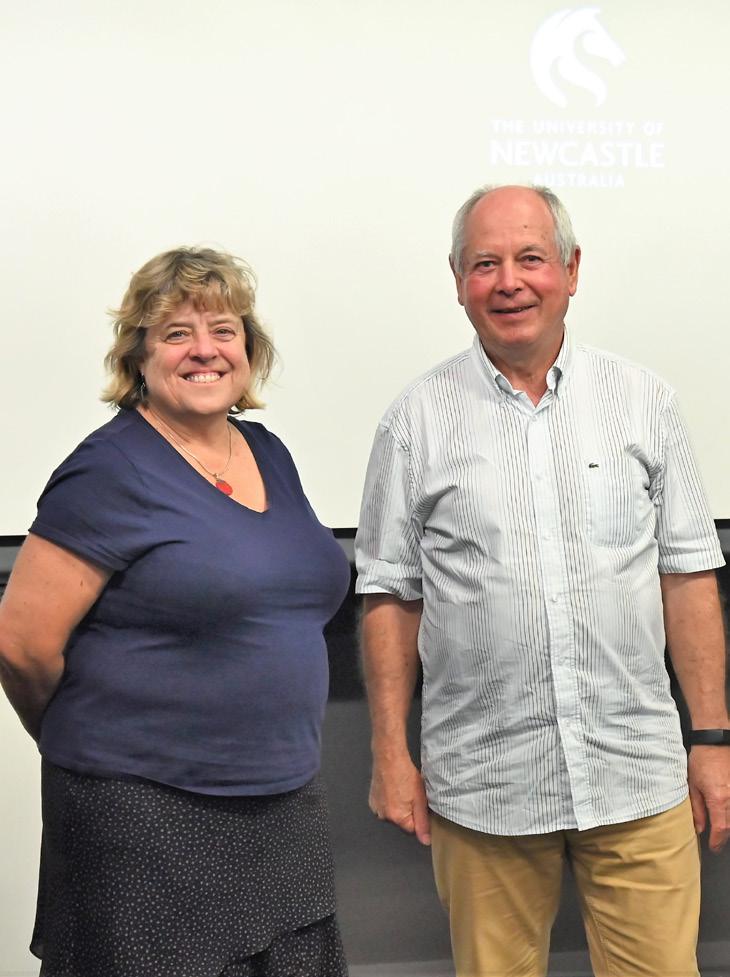


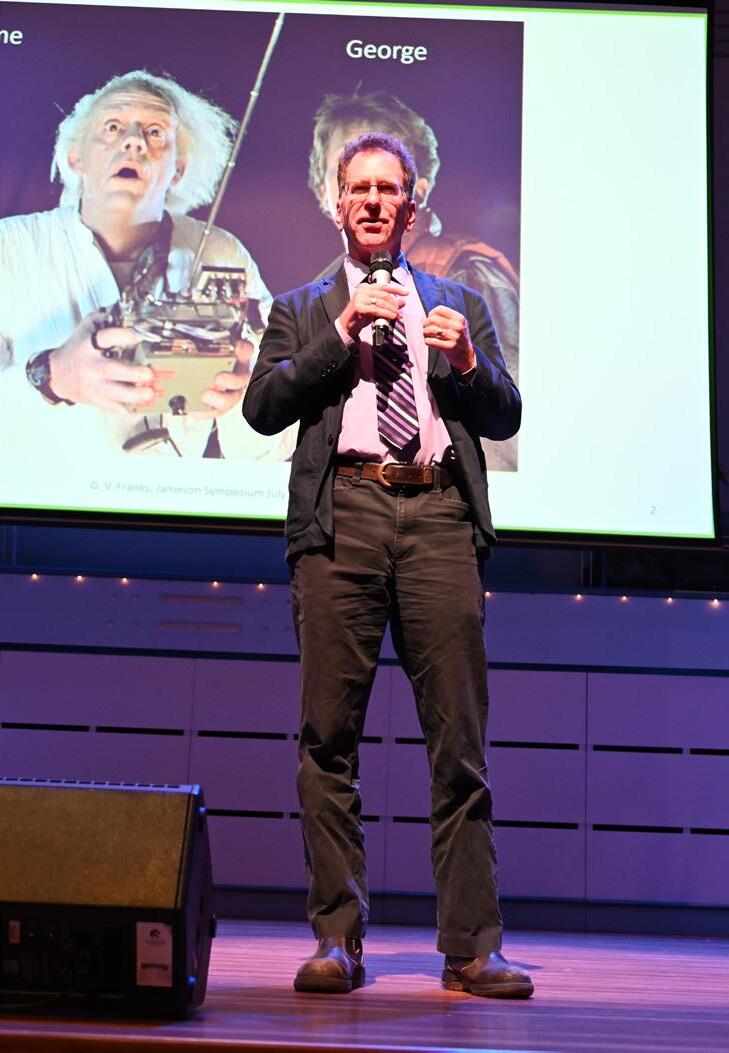
96
Centre CIs, PIs, AIs, Industry Partners & Board Members
Peek into some of our labs
Discovering, testing and improving the Centre’s inventive new ways to efficiently separate minerals using less water, less energy and minimising waste happens inside multiple labs. Here is a peek.

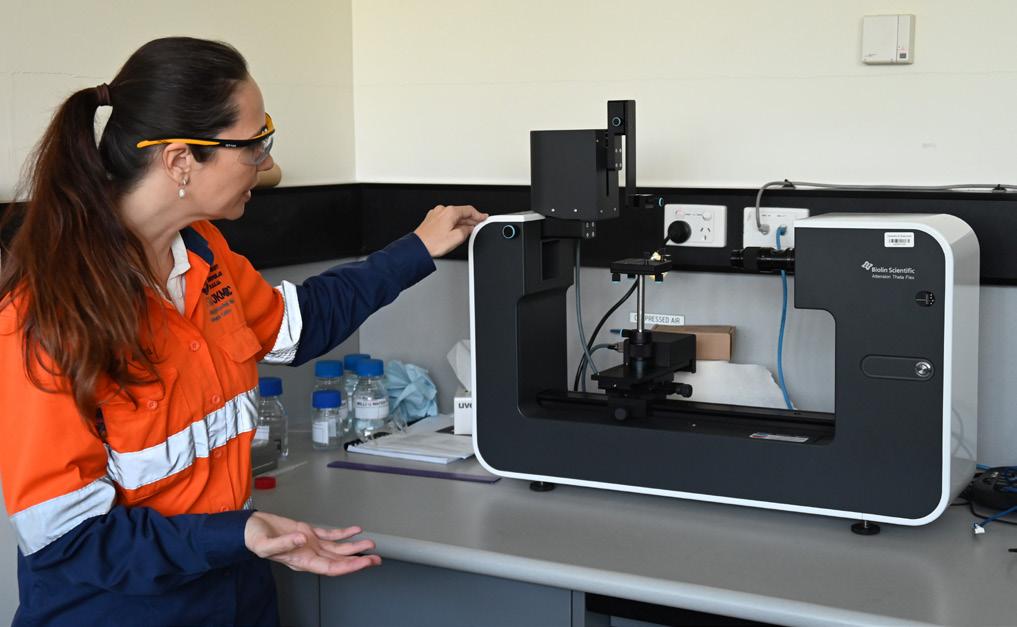
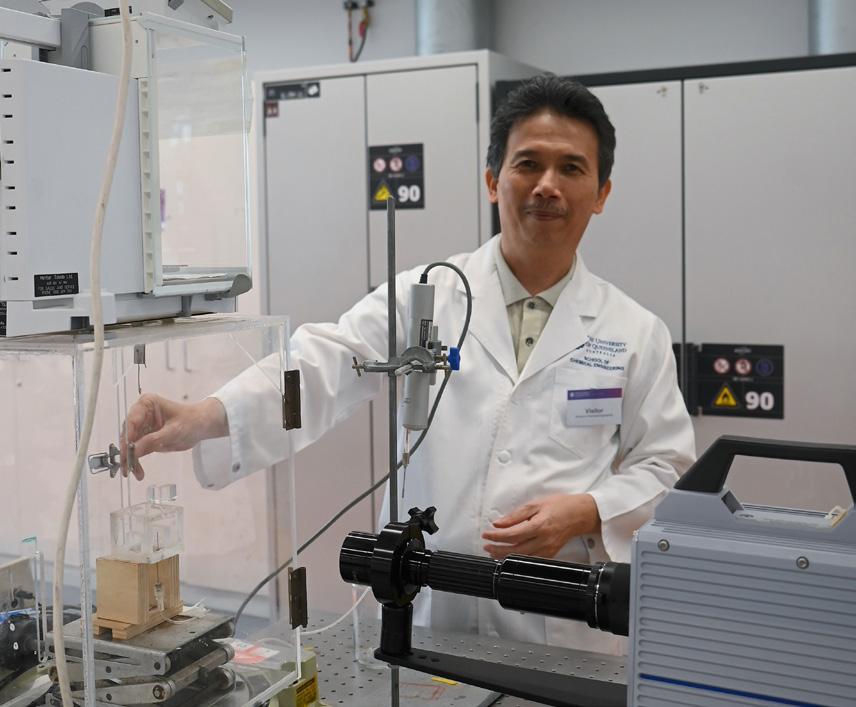

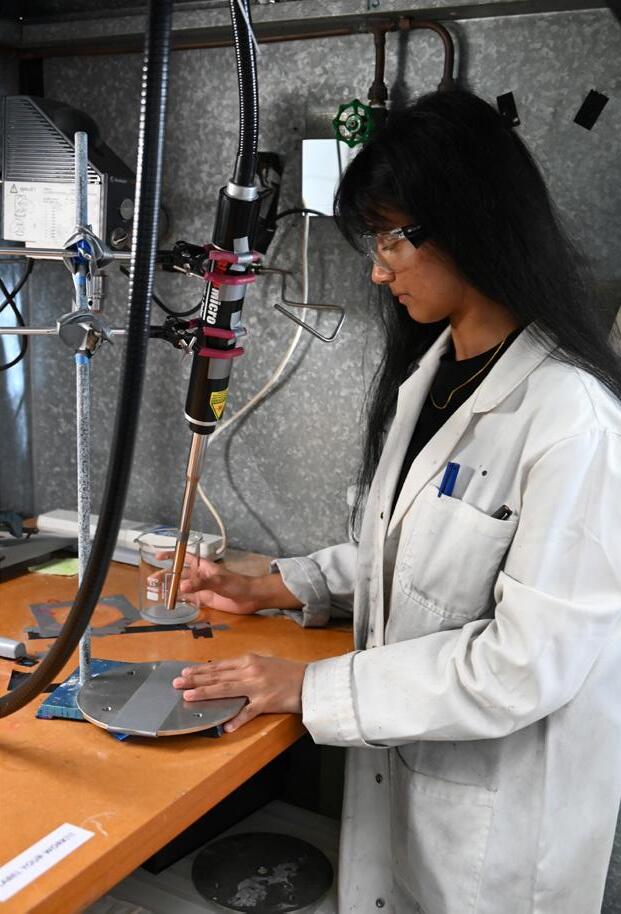

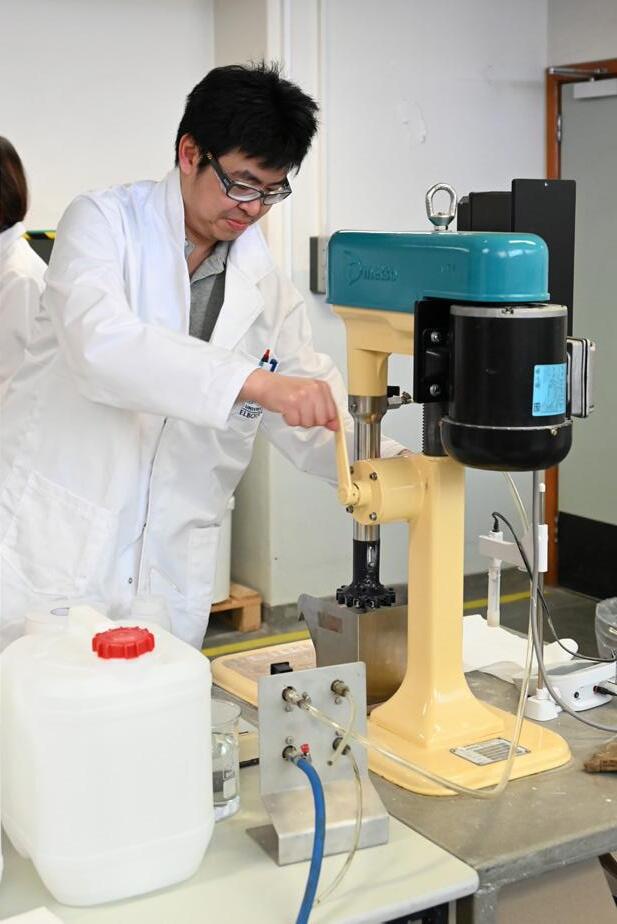

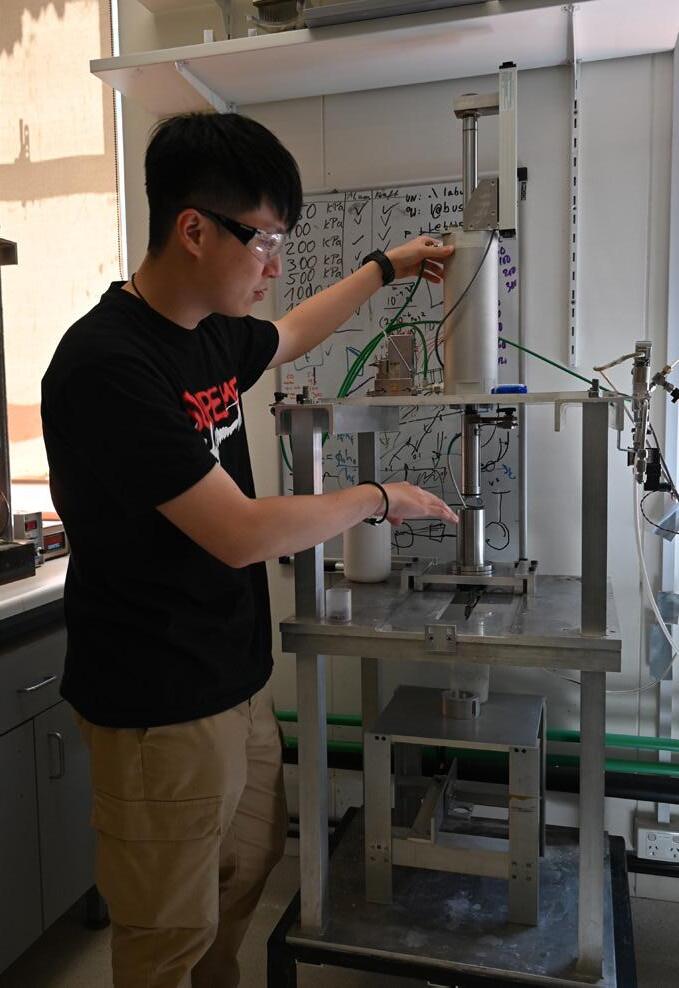
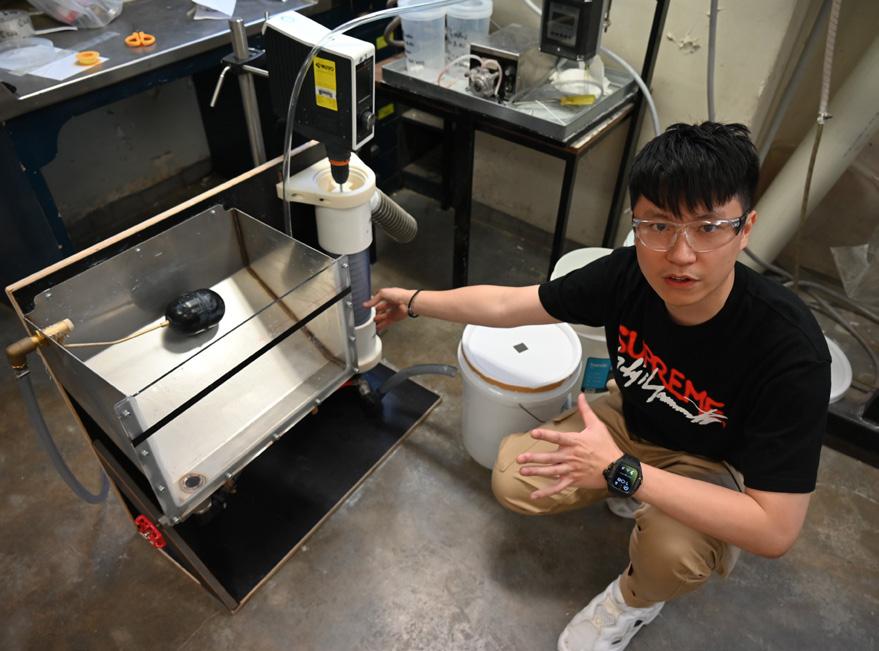

UOM
UQ

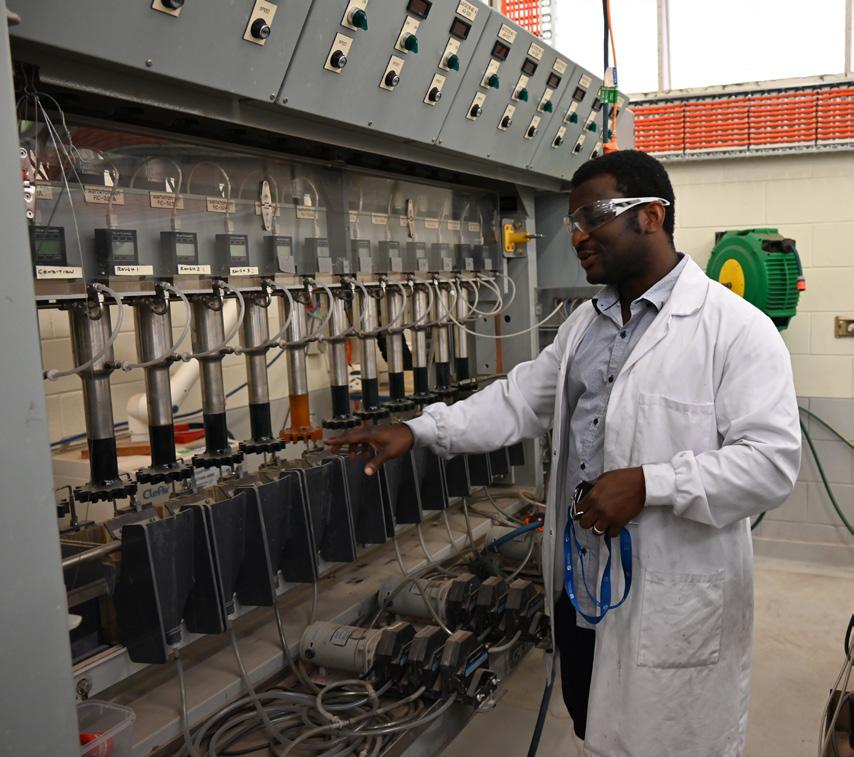
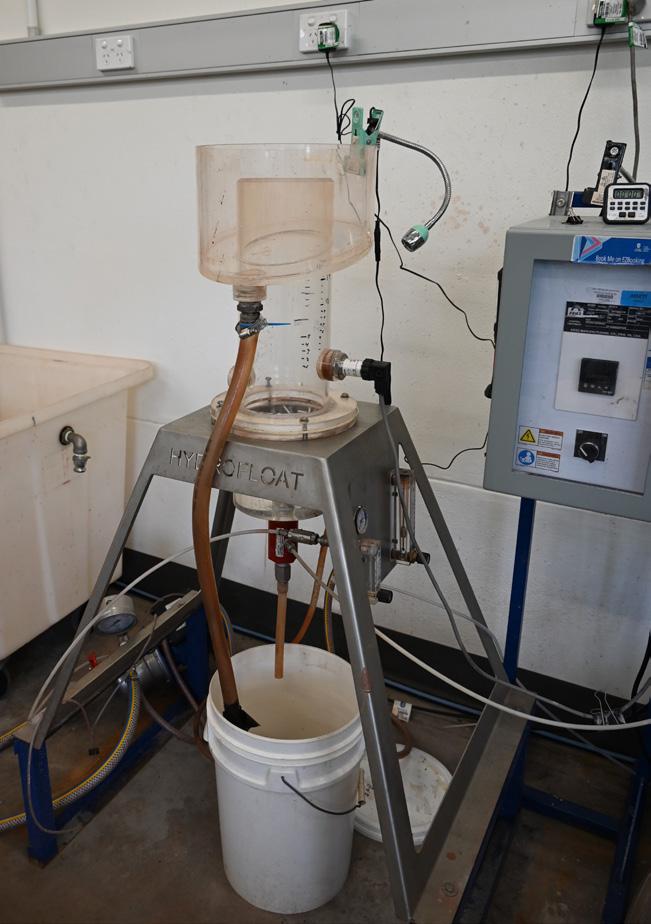

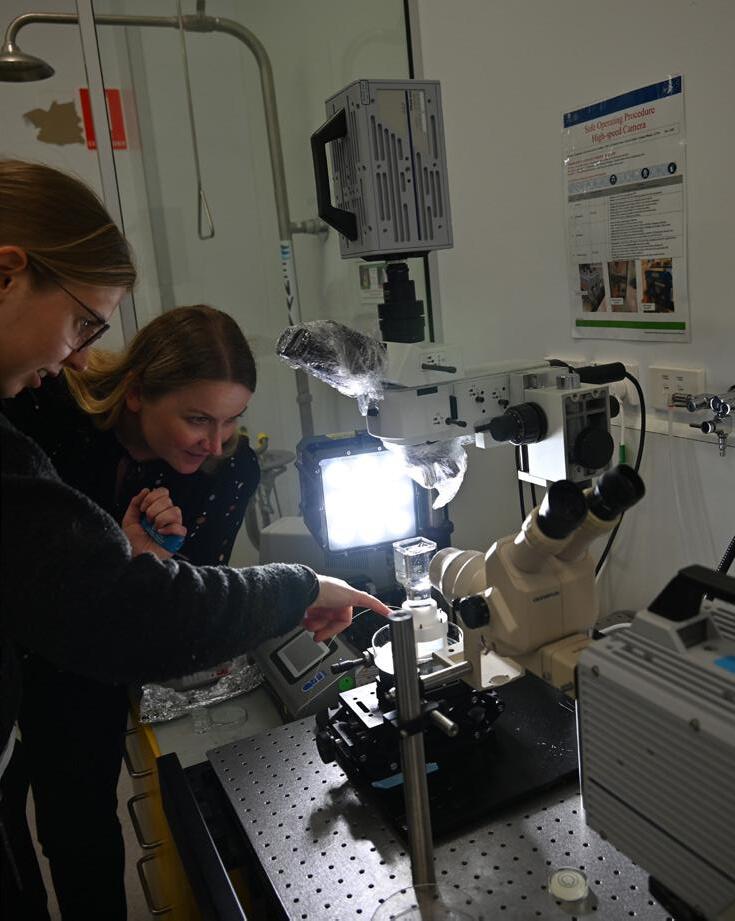


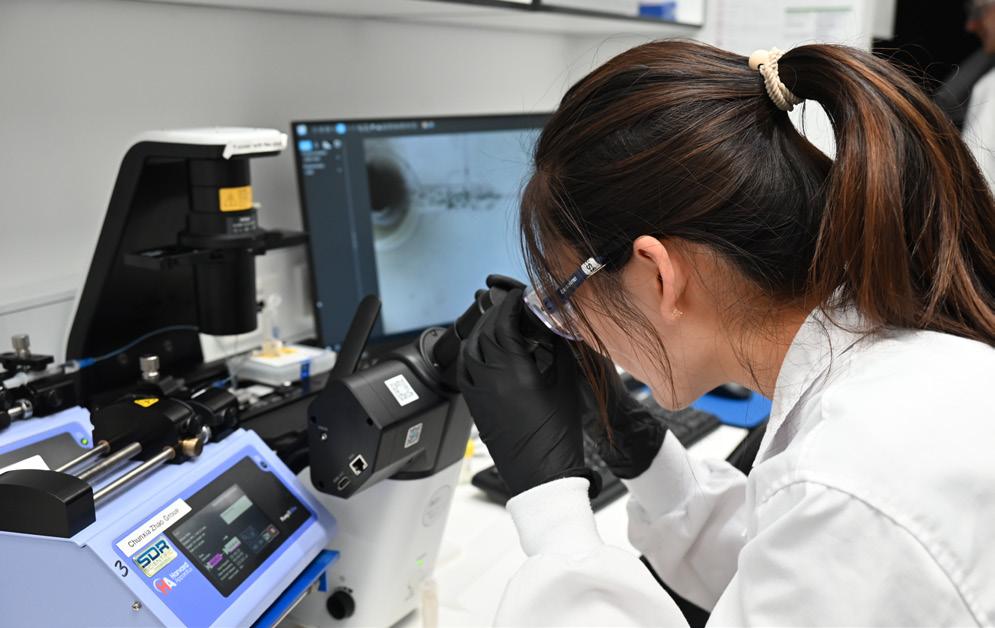


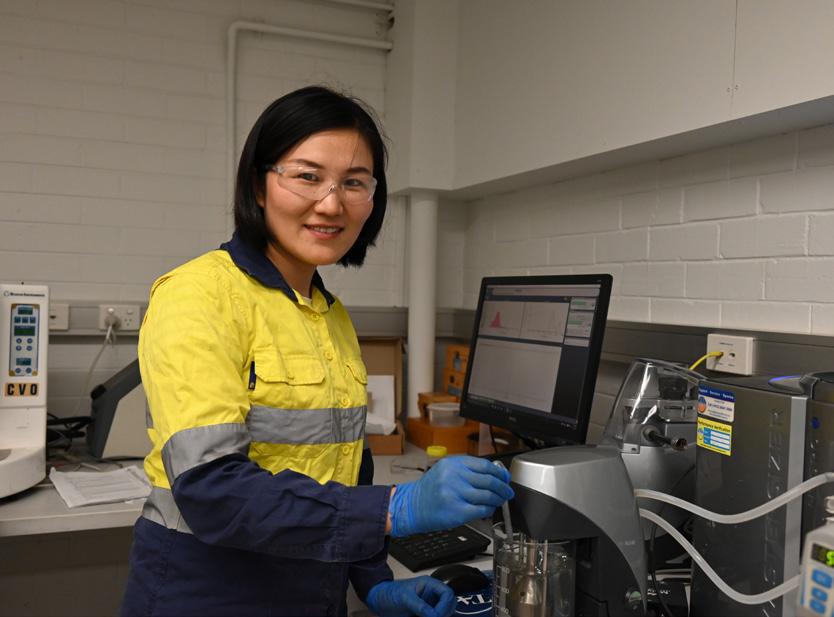
98
UON
UniSA
UoA
GLOSSARY OF TERMS
Science and Technology Terms
2D Two dimensional
3D Three dimensional
AFM Atomic force microscopy
CFD Computational Fluid Dynamics
CPF Coarse Particle Flotation
CPR Coarse Particle Processing Research
CT Computed Tomography (scan)
DDA Dodecylamine
DEM Discrete Element Modelling
DFT Density-functional theory
DLVO Derjaguin, Landau, Verwey and Overbeek
DNA Deoxyribonucleic acid
DPG Dipropylene glycol
DPM Di(propylene glycol) methyl ether
E Coli Escherichia coli
ESCA Electron Spectroscopy for Chemical Analysis
EM Expectation Maximization (algorithm)
FTIR Fourier transform infrared spectroscopy
G-force Gravitational force
GRolls® Gyratory Rolls Crusher technology
HVP High Voltage Pulse
MIBC Methyl Isobutyl Carbinol
PEG Polyethylene glycol
PGM Platinum-group metals (also known as the platinoids)
pH ‘potential” or ‘power’ of hydrogen (an acidity scale)
PSD Particle size distribution
QCM Quartz Crystal Microbalance
RAFT Reversible addition-fragmentation chain transfer
RAMP Rapid Automated Materials and Processing
RCTM REFLUX® Classifier technology
RCC™ REFLUX™ Concentrating Classifier
RFC RFC / REFLUXTM Flotation Cell
SAG Semi-autogenous grinding mill
SBC Solid bowl centrifugation
SEM Scanning Electron Microscopy
SPH Smoothed-Particle Hydrodynamics
ToF-SIMS Time-of-Flight Secondary Ion Mass Spectroscopy
TRL Technology Readiness Level
XCT (also known as XRCT) X-Ray Computed Tomography
XFM X-ray fluorescence microscopy
XRD X-ray diffraction analysis
XPS X-ray photoelectron spectroscopy imaging
XRT X-ray micro-CT
COEMinerals Nodes
Curtin Curtin University
Deakin Deakin University
Monash Monash University
UniSA University of South Australia
UoA The University of Adelaide
UNSW The University of New South Wales
UON The University of Newcastle
UOM
The University of Melbourne
UQ The University of Queensland
Other Institutions
CETEM Centre for Mineral Technology
HIF Helmholtz Institute Freiberg for Resource Technology
HZDR Helmholtz-Zentrum Dresden-Rossendorf (of which HIF is a constituent part)
IMRAM Multidisciplinary Research for Advanced Materials
JCU James Cook University
JKMRC The Julius Kruttschnitt Mineral Research Centre
MSCAITN Marie Skłodowska-Curie Actions Innovative Training Networks
SUST Southern University of Science Technology
Swin Swinburn University of Technology
Sheffield University of Sheffield
TUD Technische Universität Dresden
UCT University of Cape Town



99
Other
3MT® 3-Minute Thesis (competition)
AC Order of Australia
ACARP The Australian Coal Industry’s Research Program
AI Associate Investigator
AIChE The American Institute of Chemical Engineers
AMC Australian Materials Chemistry
ANZNMF Australia New Zealand Micro Fluidics
AO Officer of the Order of Australia
A/Prof Associate Professor
ARC The Australian Research Council
ATSE Australian Academy of Technological Sciences and Engineering
AusIMM Australasian Institute of Mining and Metallurgy
CapEx Capital expenditure
CEO Chief Executive Officer
CI Chief Investigator
CSIRO The Commonwealth Scientific and Industrial Research Organisation (Australia)
COE ARC Centre of Excellence
COEMinerals ARC Centre of Excellence for Enabling Eco-Efficient Beneficiation of Minerals
COO Chief Operations Officer
CRC Cooperative Research Centre
CRITCON Australian Critical Minerals Research Centre Conference
CVO Commander of the Royal Vicotorian Order
DAAD Deutscher Akademischer Austauschdienst
Dr Doctor of Philosophy
ECR Early Career Researcher
ESG Environmental Social and Governance
EIT European Institute of Innovation and Technology
EM Expectation Maximisation
FBI Future Battery Industries CRC
FLC Future Leaders Committee
FlotSim
A project funded by the Marie Skłodowska-Curie Actions School
FLP Future Leaders Program
FRS Fellowship of the Royal Society
GEDI Gender Equity Diversity and Inclusion
HDR Higher Degree Researcher
HR Human Resources
IACIS International Association of Colloid and Interface Scientists
IMPC International Mineral Processing Congress
IAP International Advisory Panel
IAS International Flotation Symposium
IWD International Women’s Day
IMPC International Mineral Processing Congress
Jord Jord International Pty Ltd
KARC Korea-Australia Rheology Conference
KPIs Key Performance Indicators
L/Prof Laureate Professor
METS Mining Equipment, Technology and Services
MCR Mid Career Researcher
NASA National Aeronautics and Space Administration (in the USA)
NSW New South Wales
OpEx Operating expenditure
PhD Doctor of Philosophy
PI Partner Investigator
Prof Professor
RA Research Associate
RAAP NSW Government’s Research Attraction and Acceleration Program
RD&D Research, development and demonstration
REE Rare earth elements
REM Rare earth minerals
S.A. South Australia
SDG (UN) Sustainable Development Goals
SEC Science and Engineering Challenge
SOMP Society of Mining Professors
STEM Science, Technology, Engineering and Mathematics
STEMM Science, Technology, Engineering, Mathematics and Medicine
tph Tonnes per hour
UN United Nations
VC Vice Chancellor



























































































 Professor Chris Aldrich Centre Chief Investigator (Curtin)
Professor Chris Aldrich Centre Chief Investigator (Curtin)


































































 Chief Investigator, Dr Susana Brito e Abreu
Chief Investigator, Dr Susana Brito e Abreu

































 ECR Dr Farhana Diba (UQ)
ECR Dr Farhana Diba (UQ)









 NovaCell™ pilot plant in Jord International’s fabrication warehouse
NovaCell™ pilot plant in Jord International’s fabrication warehouse




















































































 Left to Right: CI A/Prof Elham Doroodchi, Ms Sharon Claydon MP (Member for Newcastle), Minister for Industry and Science, The Hon. Ed Husic MP, Centre COO Annemarie Fawkner and UON VC Prof Alex Zelinsky AO
Left to Right: CI A/Prof Elham Doroodchi, Ms Sharon Claydon MP (Member for Newcastle), Minister for Industry and Science, The Hon. Ed Husic MP, Centre COO Annemarie Fawkner and UON VC Prof Alex Zelinsky AO









































 PhD Yuxuan Luo (UOM)
PhD Yuxuan Luo (UOM)


























































































































































































